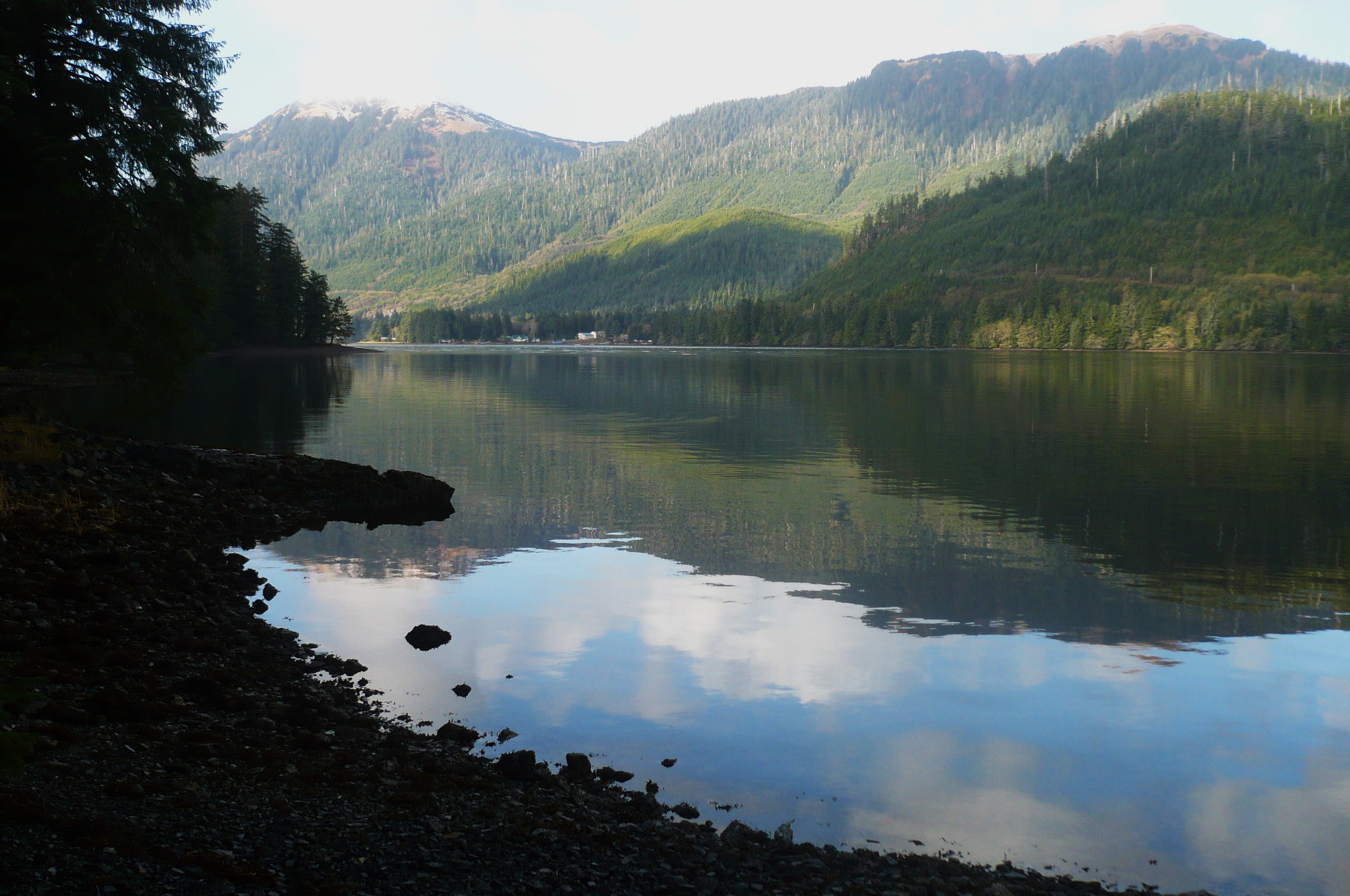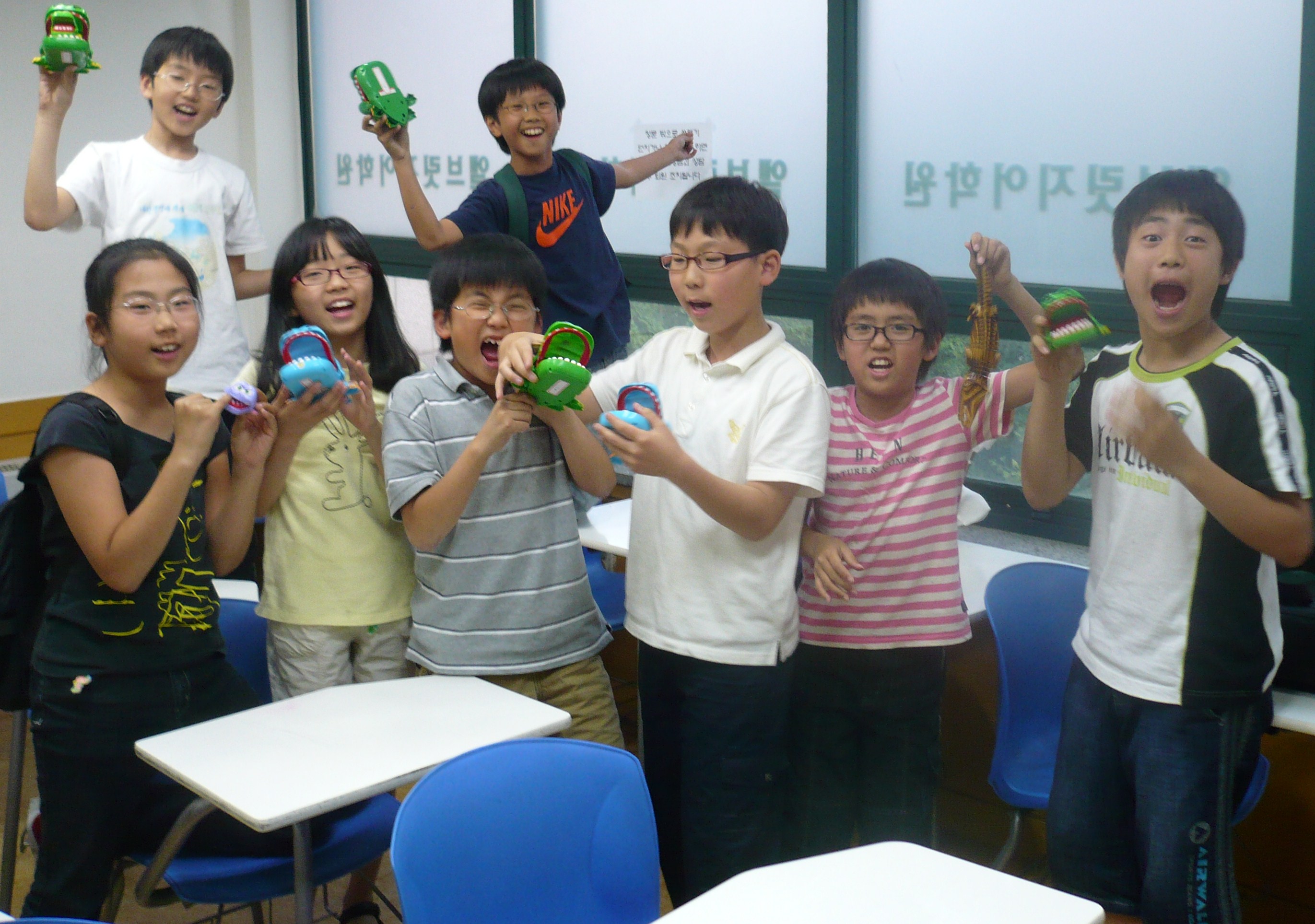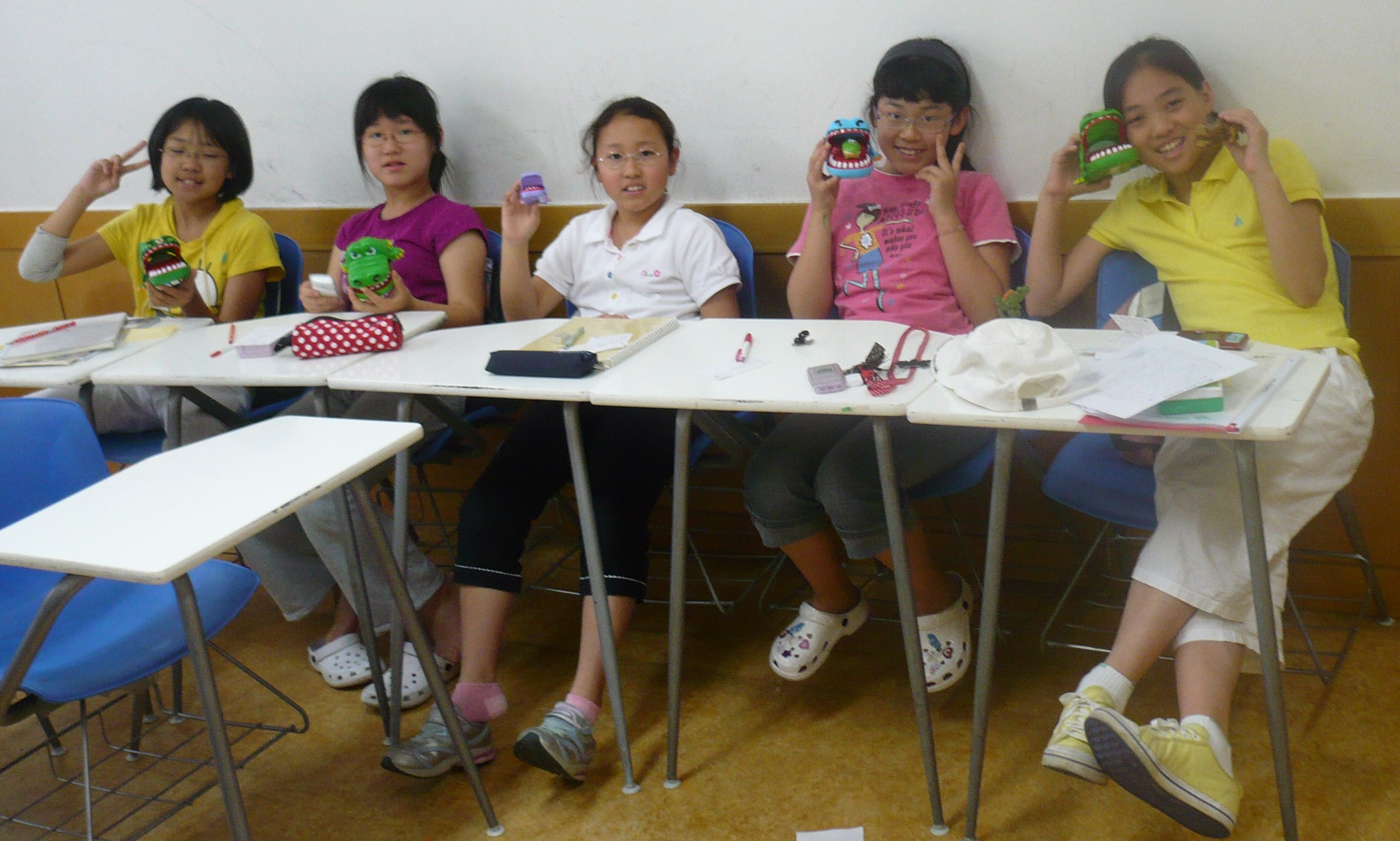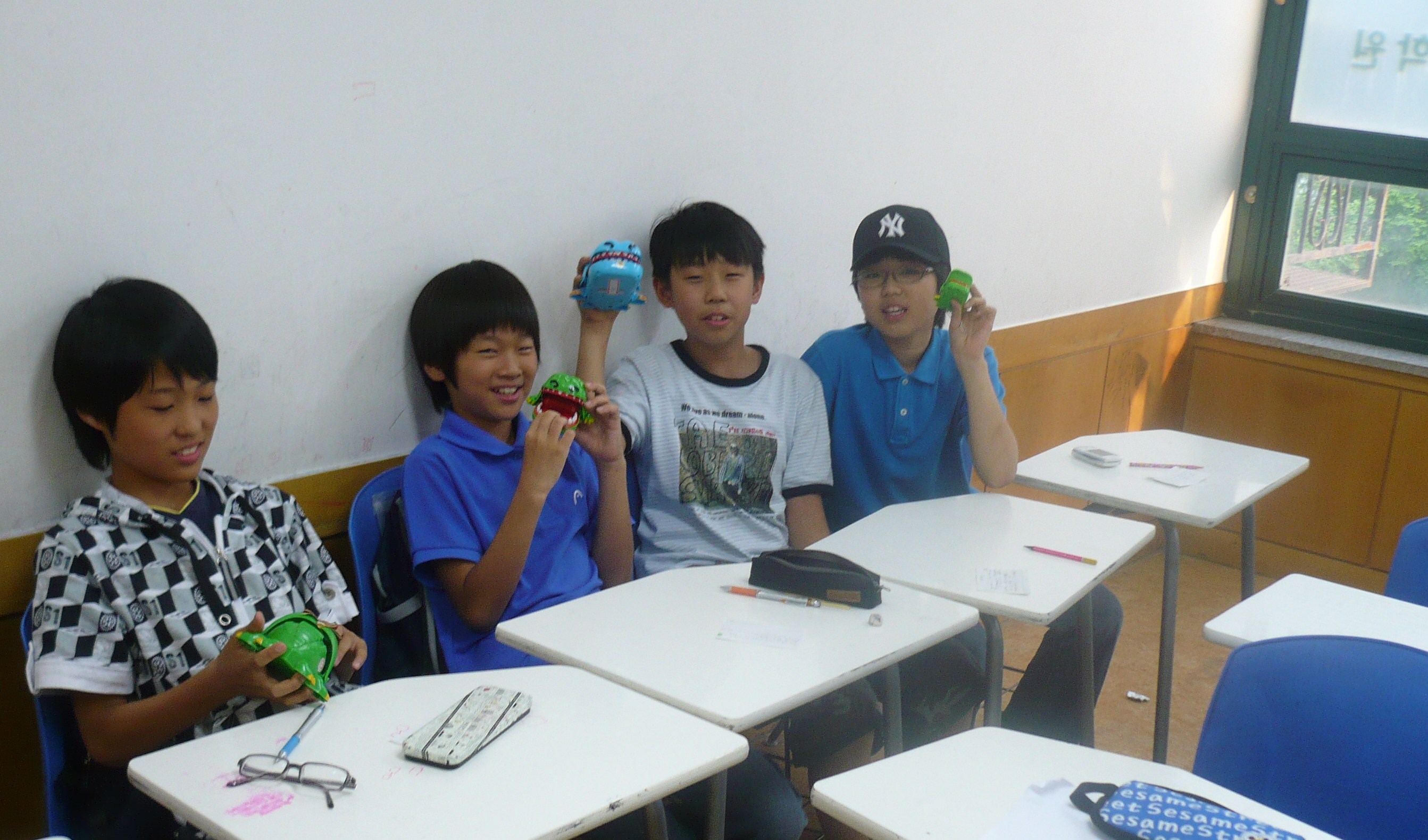I took a long walk in the rain around Arcata. I walked over to the high school, where I attended. It looked almost the same. Hmm… it’s a beautiful town, but I think it was a good thing for me that I moved away.
Here is Humboldt State University’s “University Annex” building. But in 1965, it was the Trinity Hospital, and this is the building I was born in.
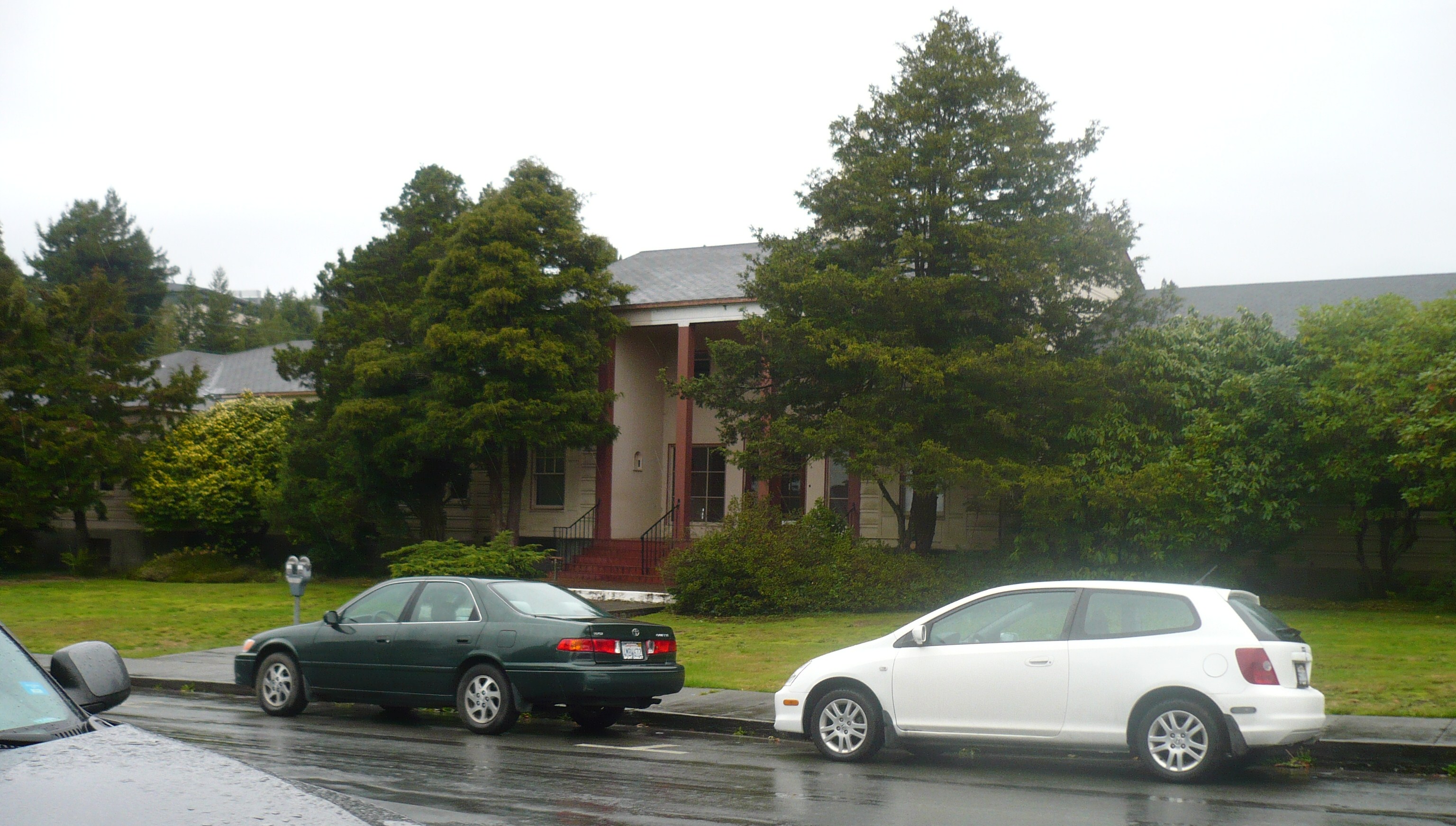
This is Arcata High School, which I attended 1979~83. It basically looks exactly the same as when I was there: California-classic-high-school-as-prison architecture, with its outdoor hallways and grim, utilitarian exterior.
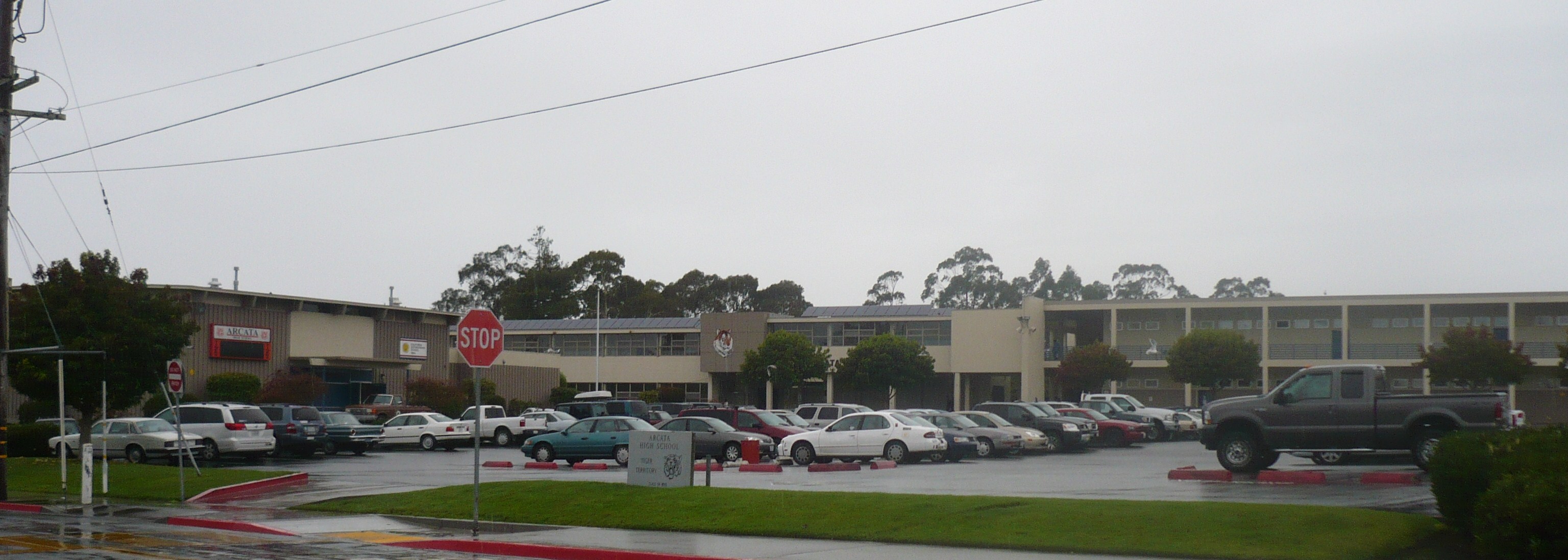
This is the view up 11th street from its foot near Janes Road, looking up. At the top of the hill, that’s Redwood Park, and my house is a few blocks below the top of the hill.
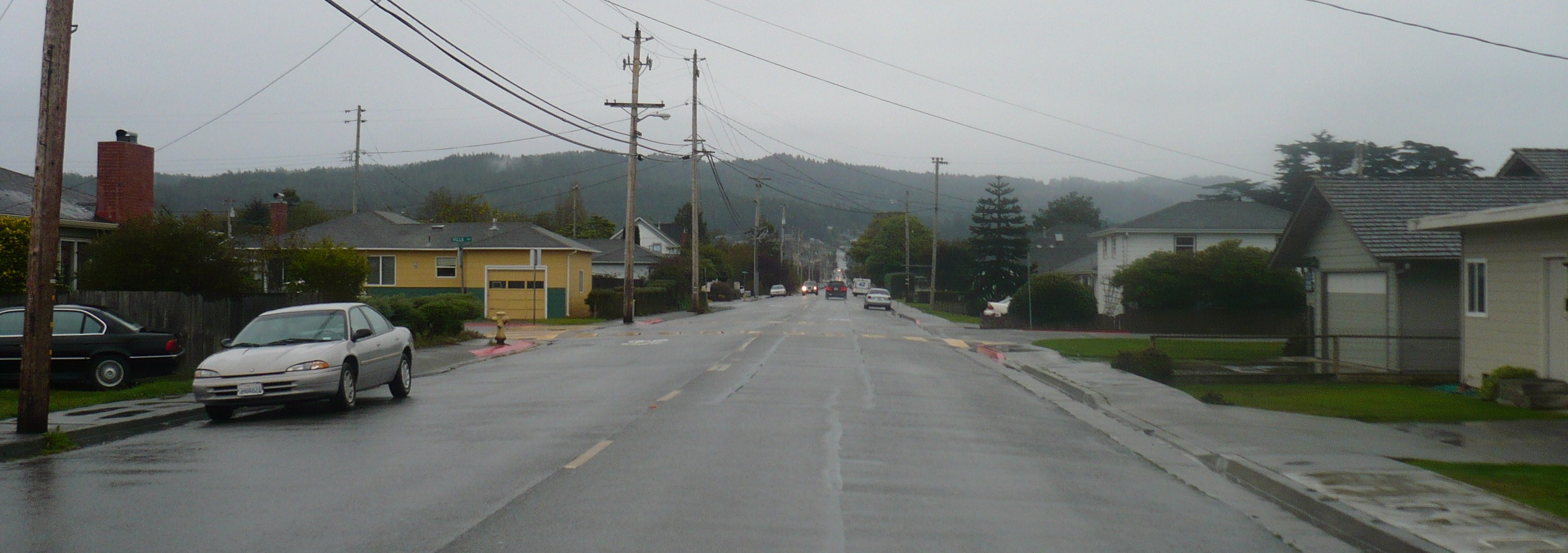
![]()
Category: My Photos
Caveat: Zigzagging across the State of Jefferson
In the 1930’s and early 40’s, the northern counties of California and southwestern counties of Oregon launched a secession effort aimed at creating a new state, which was to be called the state of Jefferson. It was one of the most successful “new state carved from existing states” movements of the 20th century, but got derailed by WWII.
Even now, however, the region as some distinctive features. The high incidence (relative to most of the west) of rural poverty means that it has often be attached with the sobriquet “Kentucky-by-the-sea”, for example — at least that was something I heard sometimes, growing up.
Anyway, I was born and grew up in Humboldt County, which is, historically, part of this never-to-be State of Jefferson. And I was in Roseburg, near its putative northern border.
I stayed the night with my aunt Janet and uncle Bob, who live outside of Eugene. I saw a lot of relatives at my aunt Freda’s memorial service, some of whom I literally hadn’t seen since I was a child.
Today, I drove back down across the Oregon border and back into Humboldt, to spend a few days in my hometown, in my home “house.” The house isn’t owned by my mother anymore, but a very close friend of ours, Peggy, bought it, so I can “visit” and stay in the house. Although it’s been remodeled and changed a lot over the years, it still has the feel of home. Peggy was one of my babysitters when I was an infant, and she was also, later, my 6th grade teacher. She’s like a godmother to me, in many ways. She has been very important in my life.
I went on a hike in the morning with my aunt Janet, my dad and their cousin Larry. Here is the view from Janet and Bob’s driveway in Pleasant Hill, Oregon, looking at some very relaxed-looking neighbor cows.
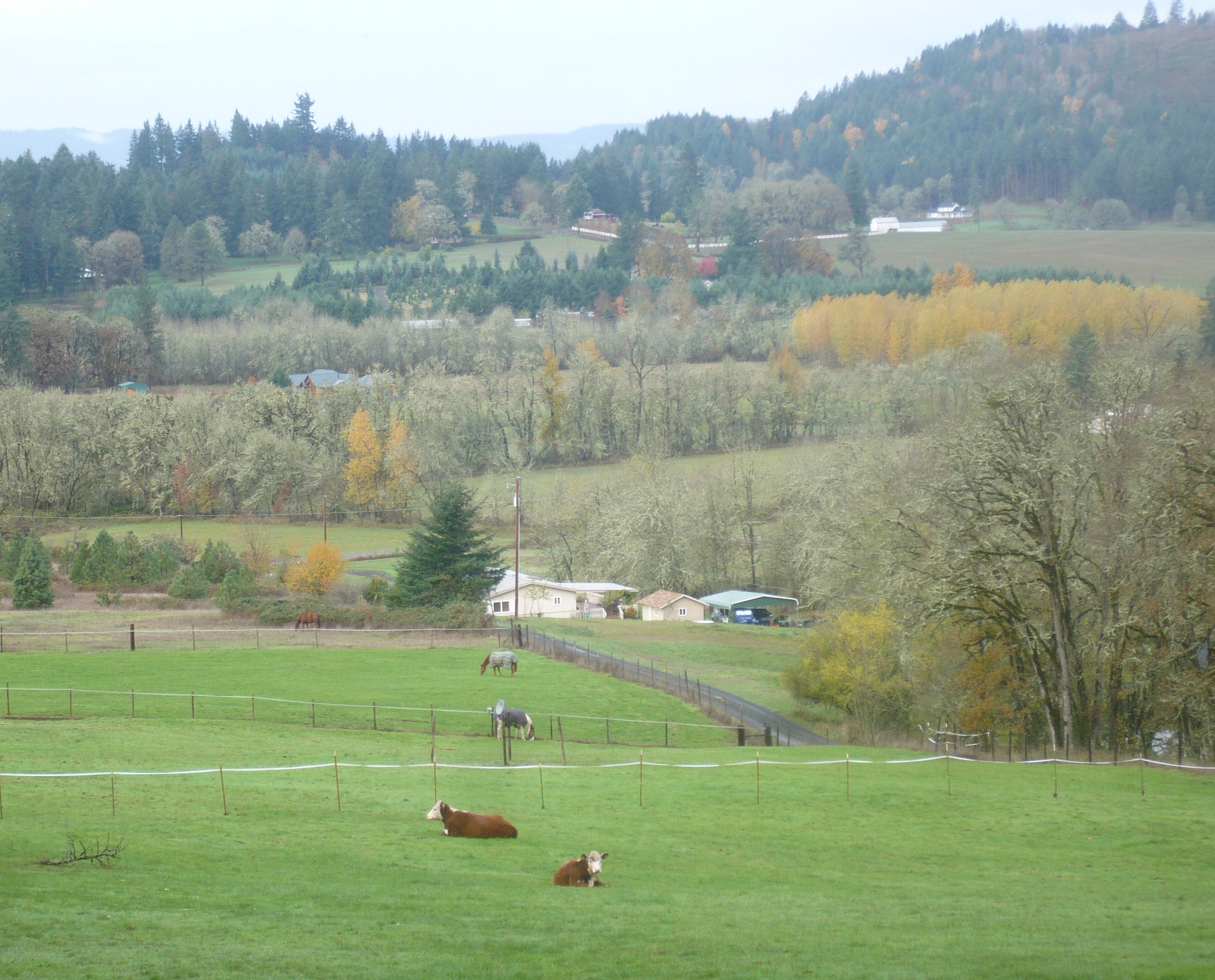
Below is a picture of Larry, Janet and my dad, stopping to talk about something near the top of the hill.
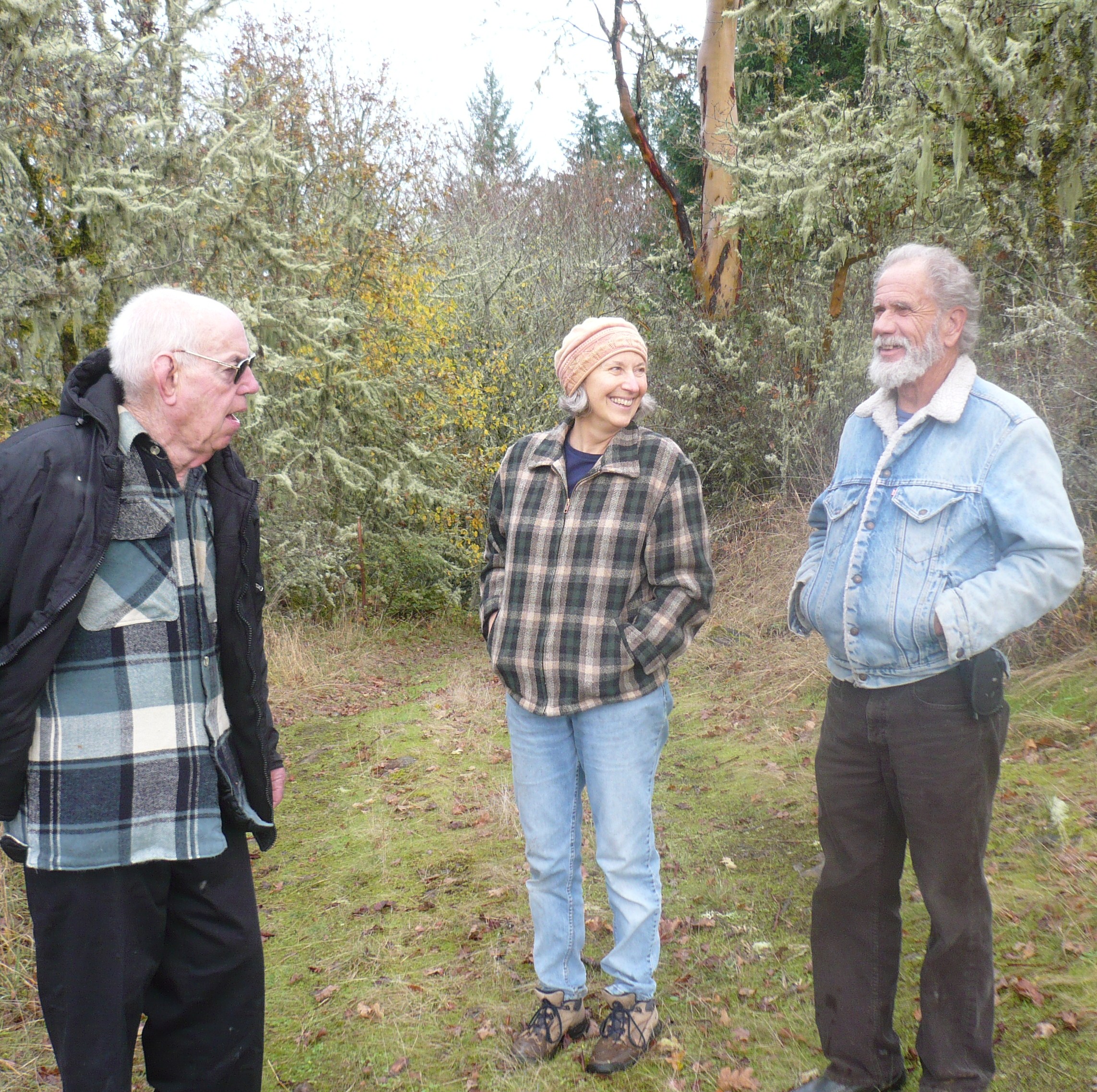
![]()
Caveat: Roadtrip Aesthetics 101 (or sentimentality)
 Is it possible to love a highway?
Is it possible to love a highway?
I certainly harbor a special feeling toward US Route 101. I was born 3 blocks from it, and grew up 4 blocks from it, and have lived more than half my life (discontinuously) within a few miles of it.
When I left San Luis Obispo on Friday night, I knew I’d have to drive all night to get to Roseburg, Oregon, on time, so I figured I might as well go up 101 (which takes a few extra hours due to its not being freeway the whole way, as compared to Interstate 5) most of the way, just for sentimental reasons.
It was strange, especially from downtown San Francisco on northward through Marin, Sonoma and Mendocino into Humboldt counties, because although I was driving in the middle of the night, I’ve been up and down that highway so many times I was able to visualize the scenery along the way effortlessly. Kinesthetic memory on the curves is almost eerie, too.
Anyway, I got to Arcata and stopped at the beach for a few hours. I watched it get light (the sun was behind thick clouds) and then went on to Oregon.
![]()
Caveat: redemption through a heroic deed
Sometimes my dreams have titles. (Sometimes they have commercial breaks, too, but that’s not what I’m going to discuss here. Obviously, I’ve watched too much television in my life.) A dream’s title will come to me in the form of a voice-over, or, more rarely, an “on-screen,” written title.
This morning’s dream had the on-screen title of “redentus heroica.” Seriously. I think it’s Latin. Why Latin? Latin was the first language I studied intensively (in 9th and 10th grades – it’s a complicated story, as I didn’t take Latin in high school, where it wasn’t offered, but rather up the hill at Humboldt State – hence it constituted my first college-level work).
It may not be good Latin. I tried to google it, and came up zero. But, assuming a macron on the last “a” in heroica (making it ablative case) and the ellision of a feminine noun meaning something like action or deed (which is a common syntactical phenomenon in Latin), you could get the meaning “redemption through [or by means of] a heroic deed.” Which seems like the sort of thing you should say in Latin, eh?
The rest of the dream? Kind of foggy, but I was walking around Ketchikan (logical), and trying to find my car (not logical). I didn’t even know which car I’d lost. It was raining (logical) and the town was crowded with Koreans (not logical). There were a lot of airplanes flying around (logical).
And I woke up – to a lot of airplanes flying around outside my hotel. Ketchikan has a lot of airplanes and boats, which makes sense for a town unconnected to the rest of the world by any kind of highway. Here’s a picture of an office where the guy who works there needs at least two parking spaces: one for the boat, and one for the airplane.
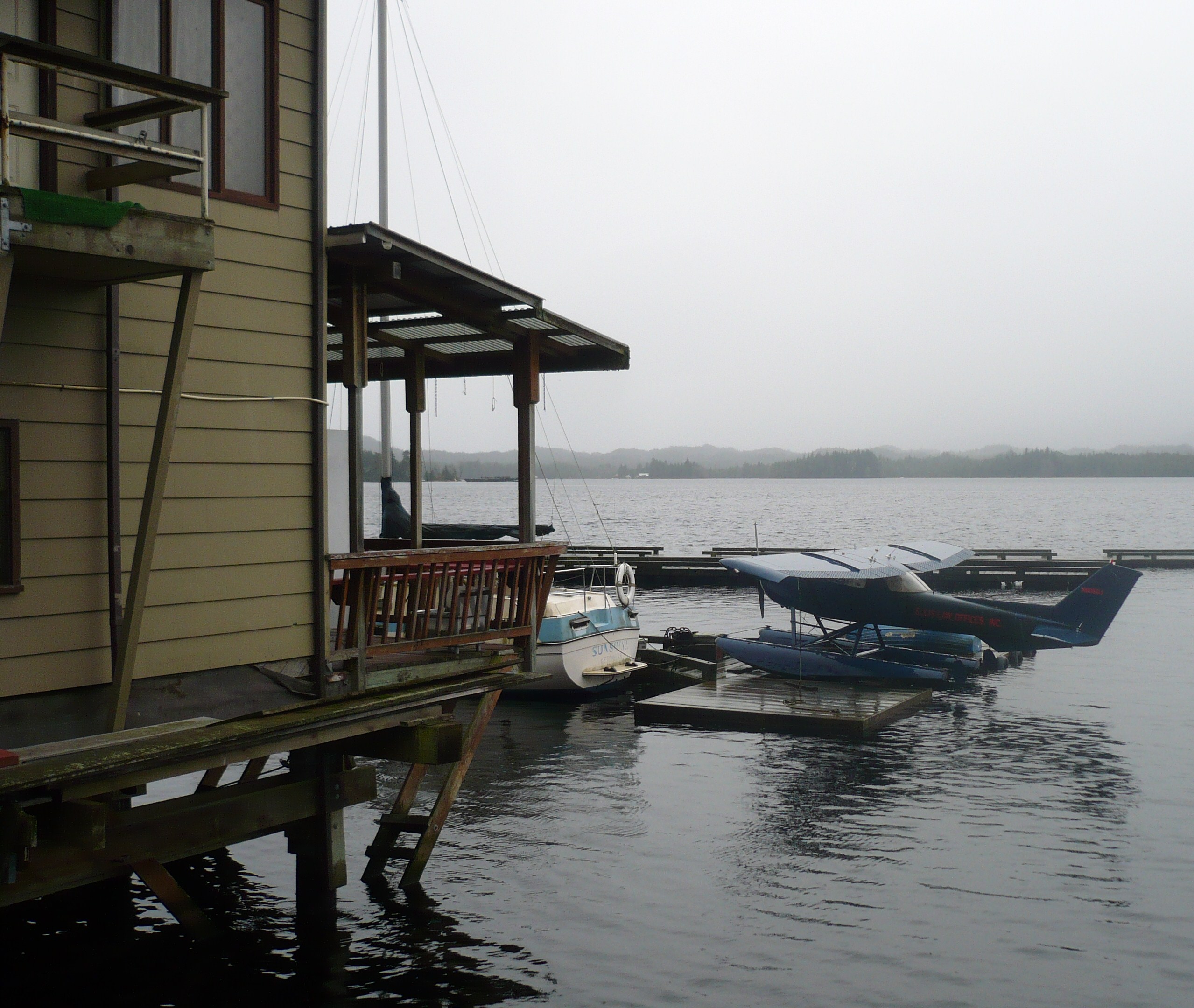
Caveat: Revillagigedo
The name of the island where Ketchikan is located is Revillagigedo. There are actually a lot of Spanish names attached to geographic features in Southeast Alaska – something to do with Spanish explorers making the navigation maps later used by Russian and English and American colonists.
It’s a cool name, though the locals mutilate the correct Spanish pronunciation – but who am I to criticize the mutilation of correct pronunciation?
Here are some pictures I took in Ketchikan, over the weekend.
Driving down to the south coast of the island:
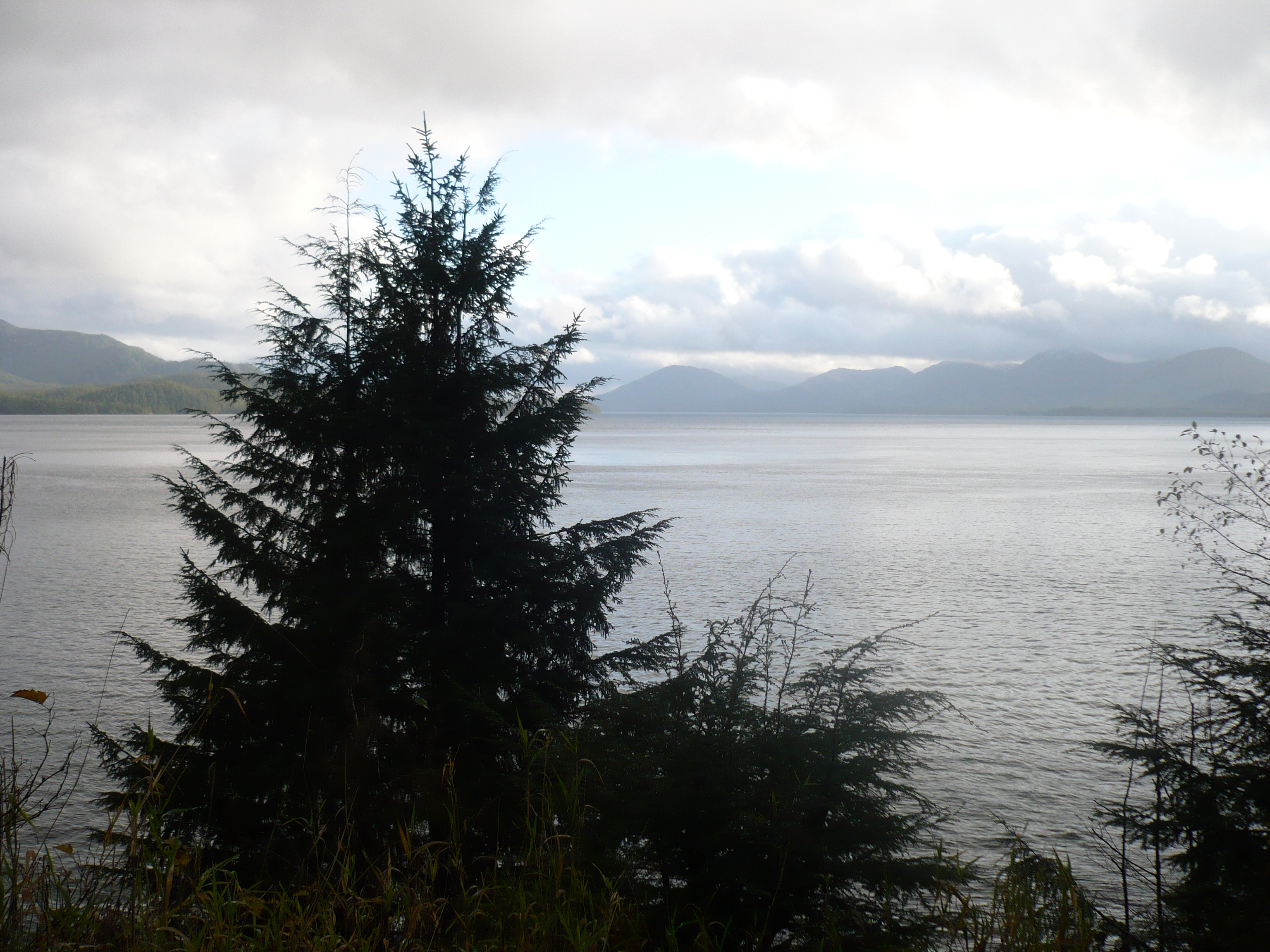
The end of the road, at about mile 15. This is about as far from downtown Ketchikan as you can get, using a car:
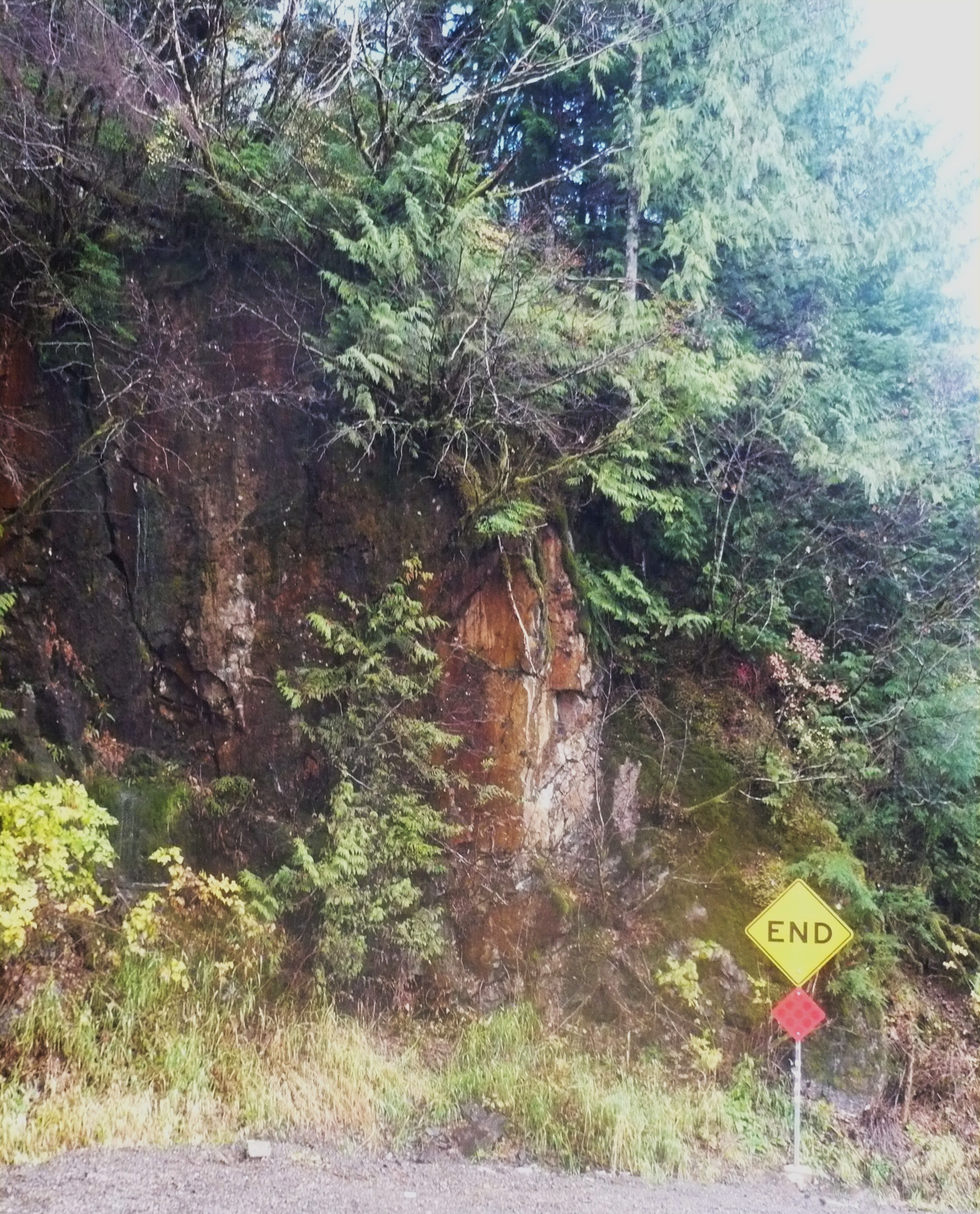
A great view of downtown Ketchikan from the north end of town (where the “mall” is) (note the disconcerting presence of strange bluish coloration in sky due to absence of normal cloud cover):
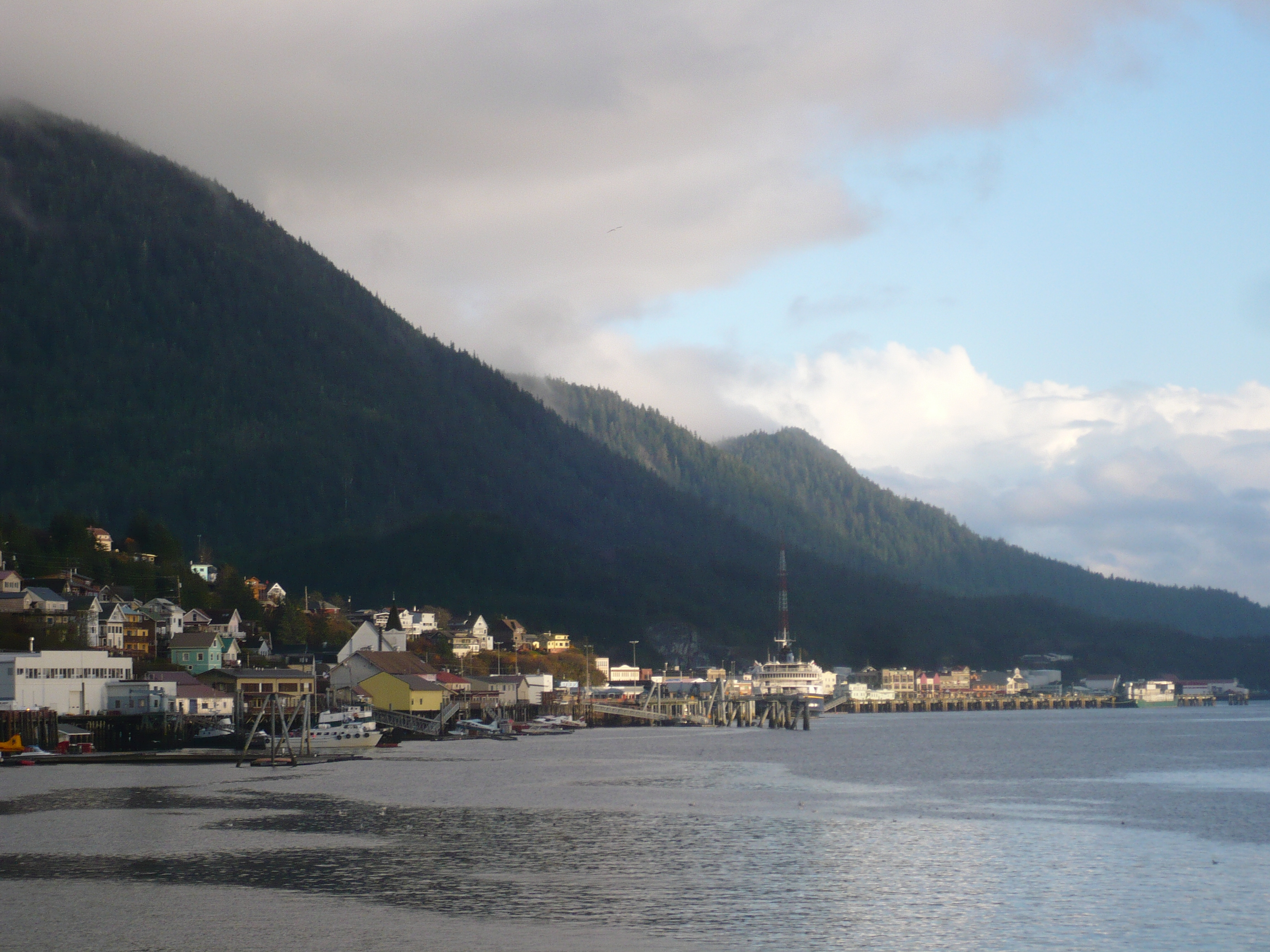
Looking straight out from the seawall at my hotel:
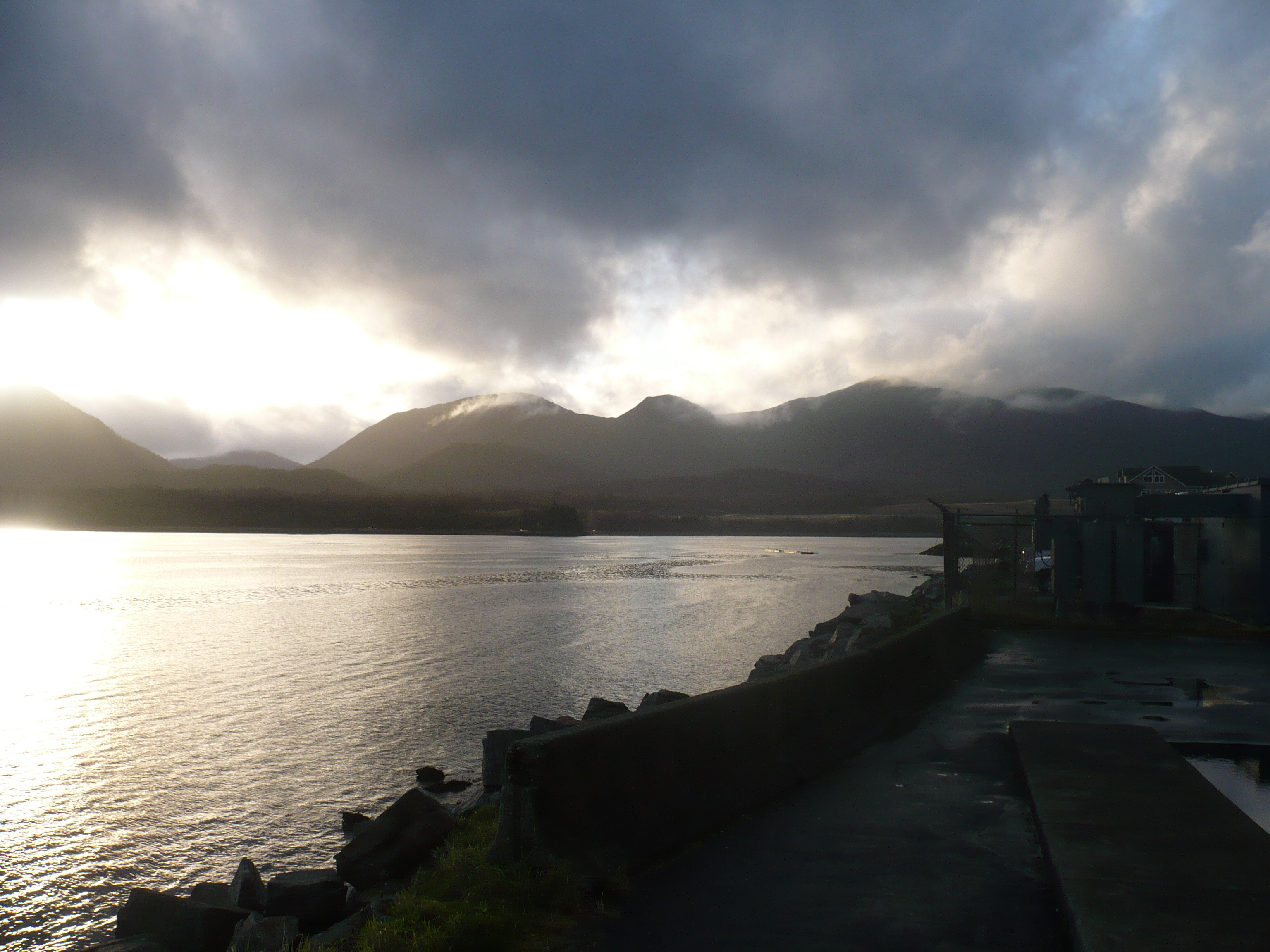
Similar view, after the clouds shifted, revealing an unfamiliar but naturally-occurring thermonuclear phenomenon suspended 95 million miles in space above the planet:
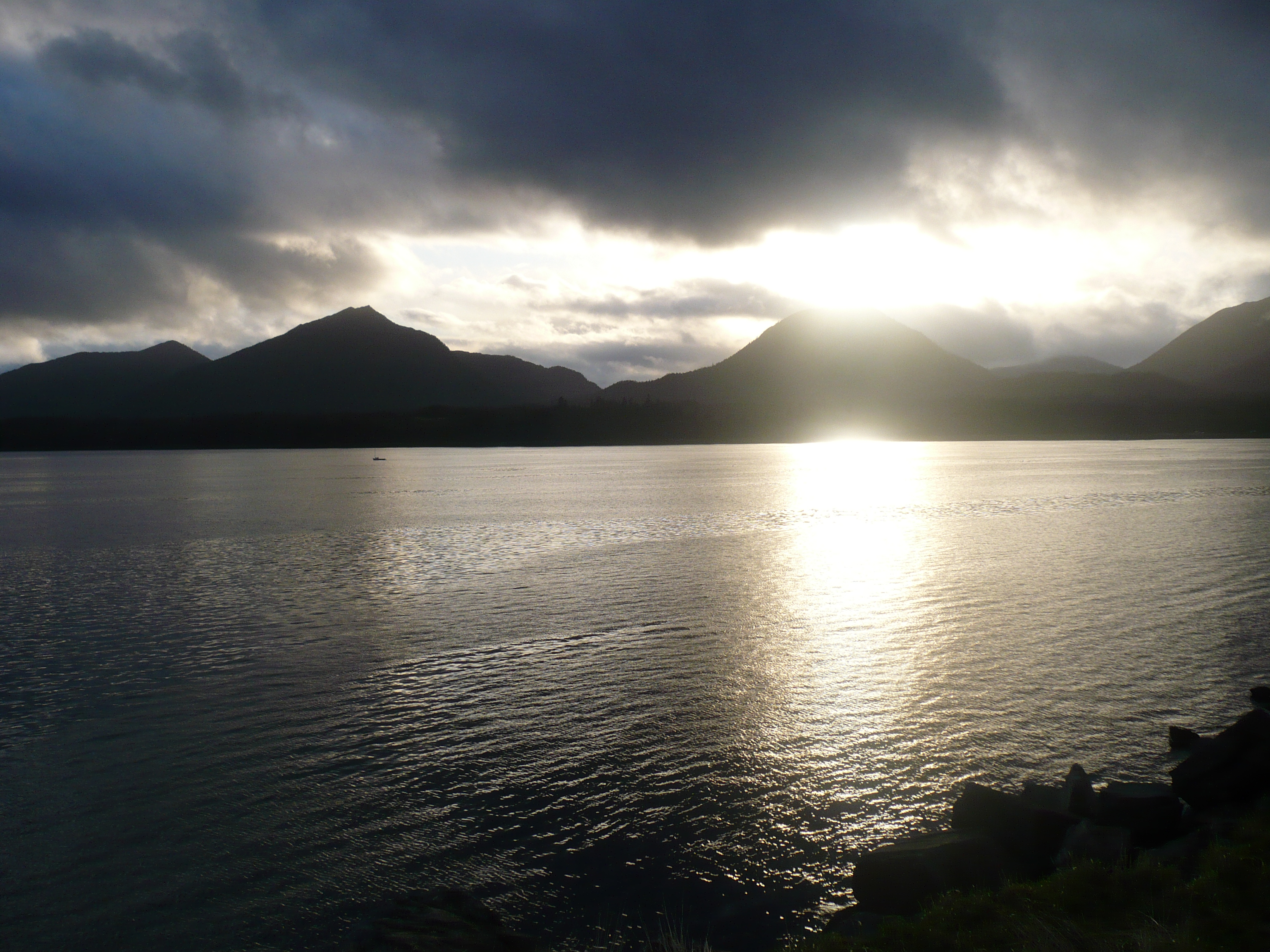
Wow, nice. It lasted almost an hour. Then it rained again:
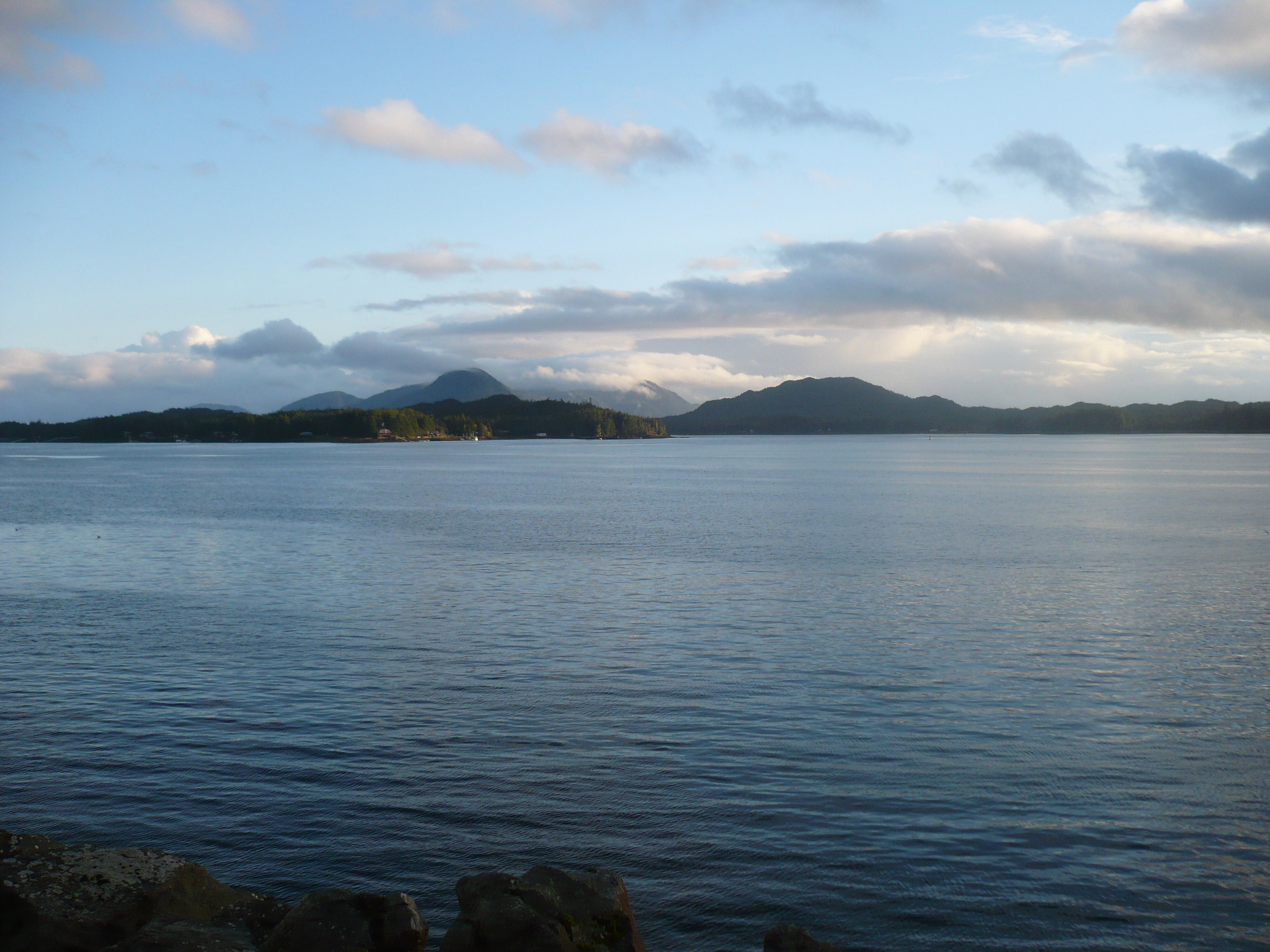
Tug boats, congregating:
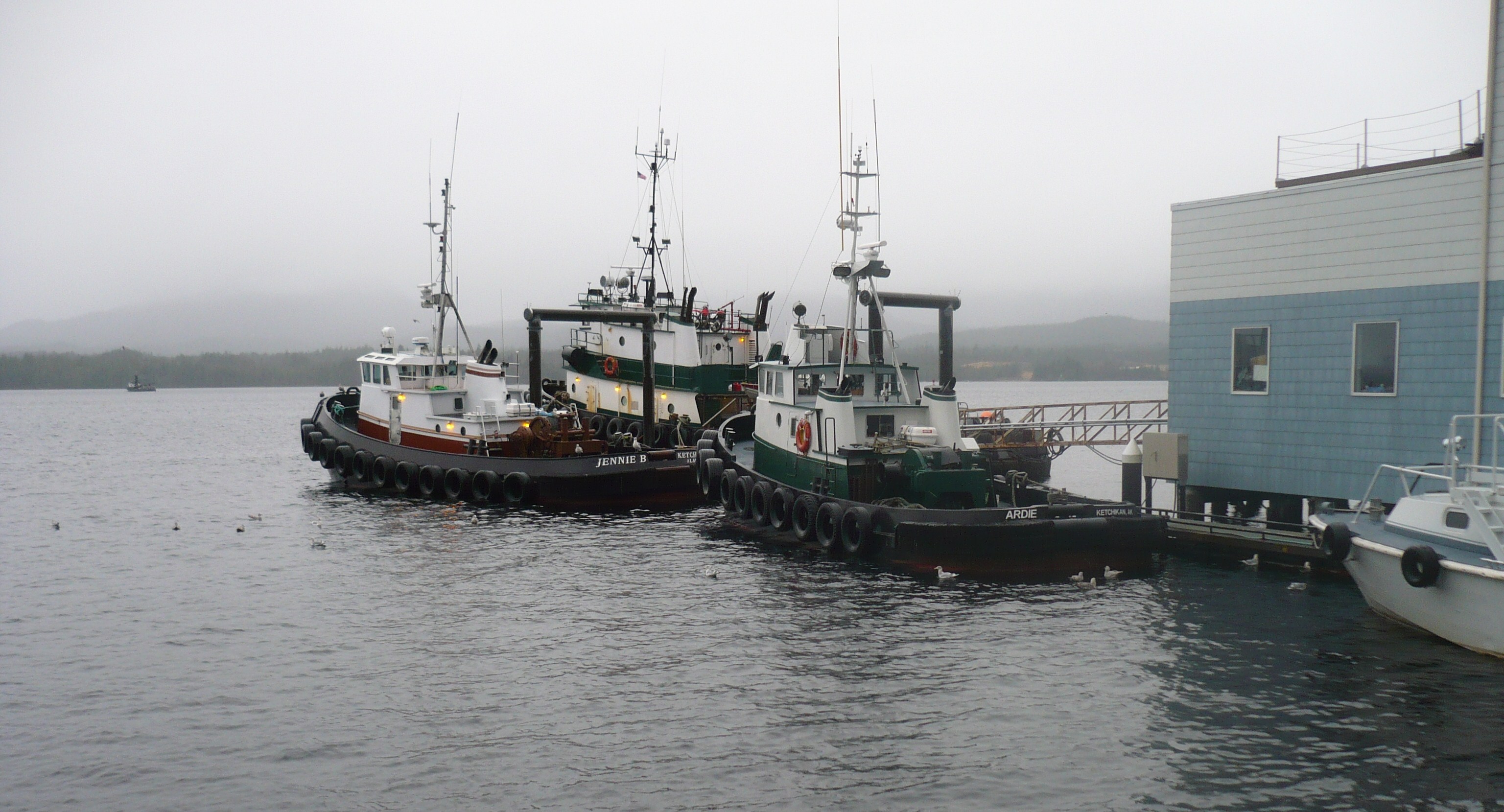
Along the main drag, Tongass Ave:
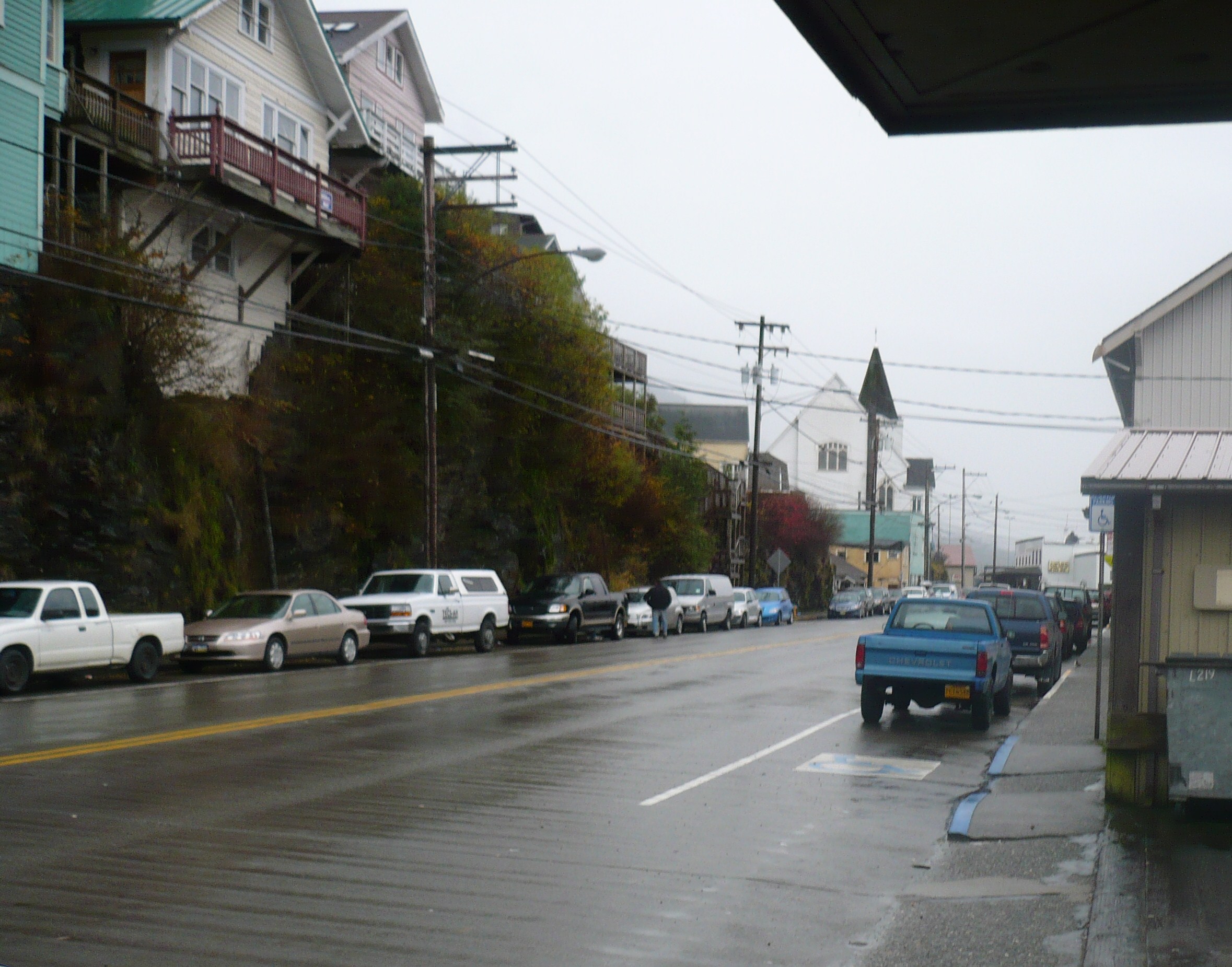
The way in and out – the Alaska Marina Highway ferry Columbia docked:
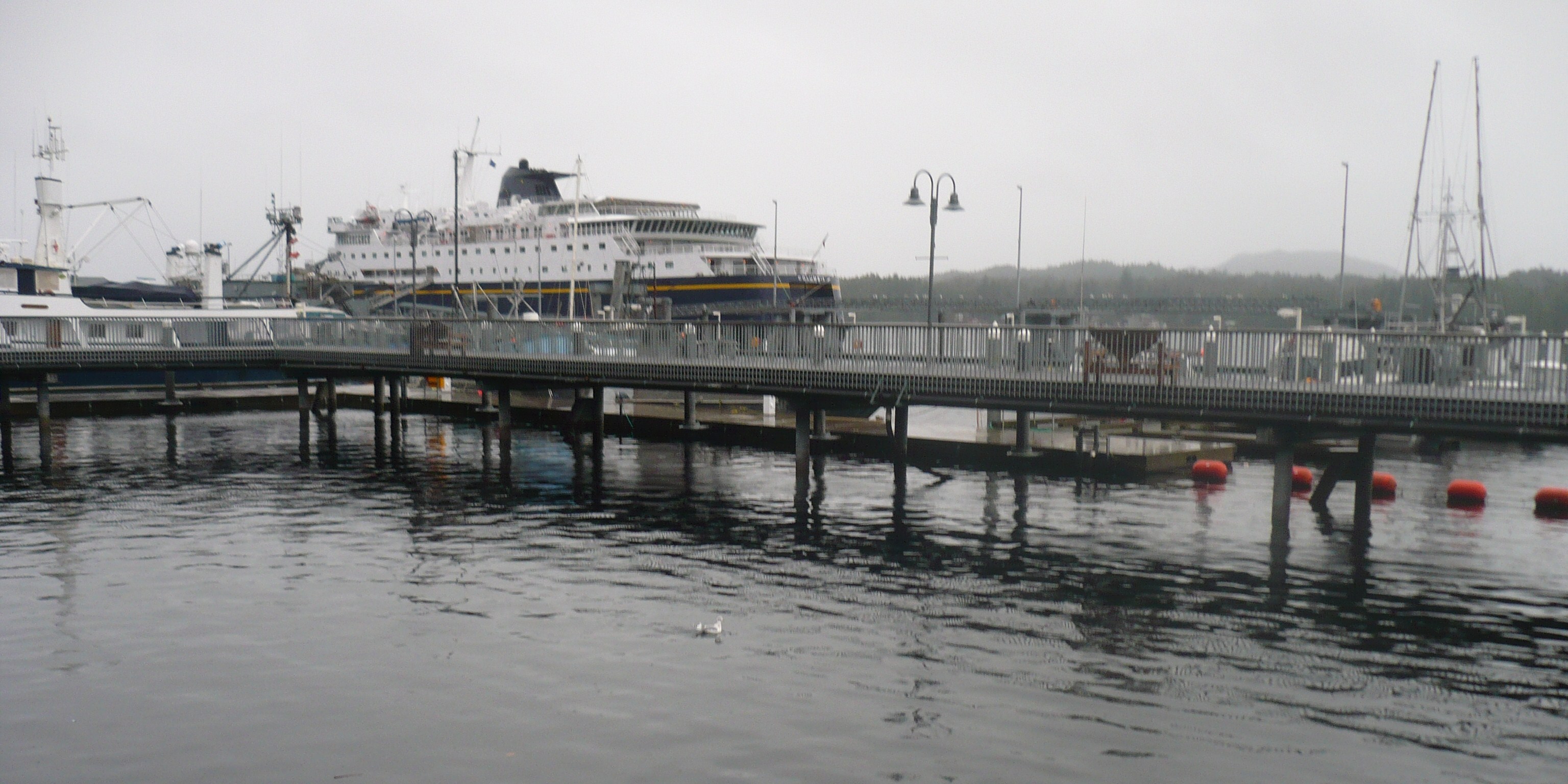
The strange case where the northbound traffic uses a tunnel, and the southbound traffic goes around the hill – but they’re not even a block apart:
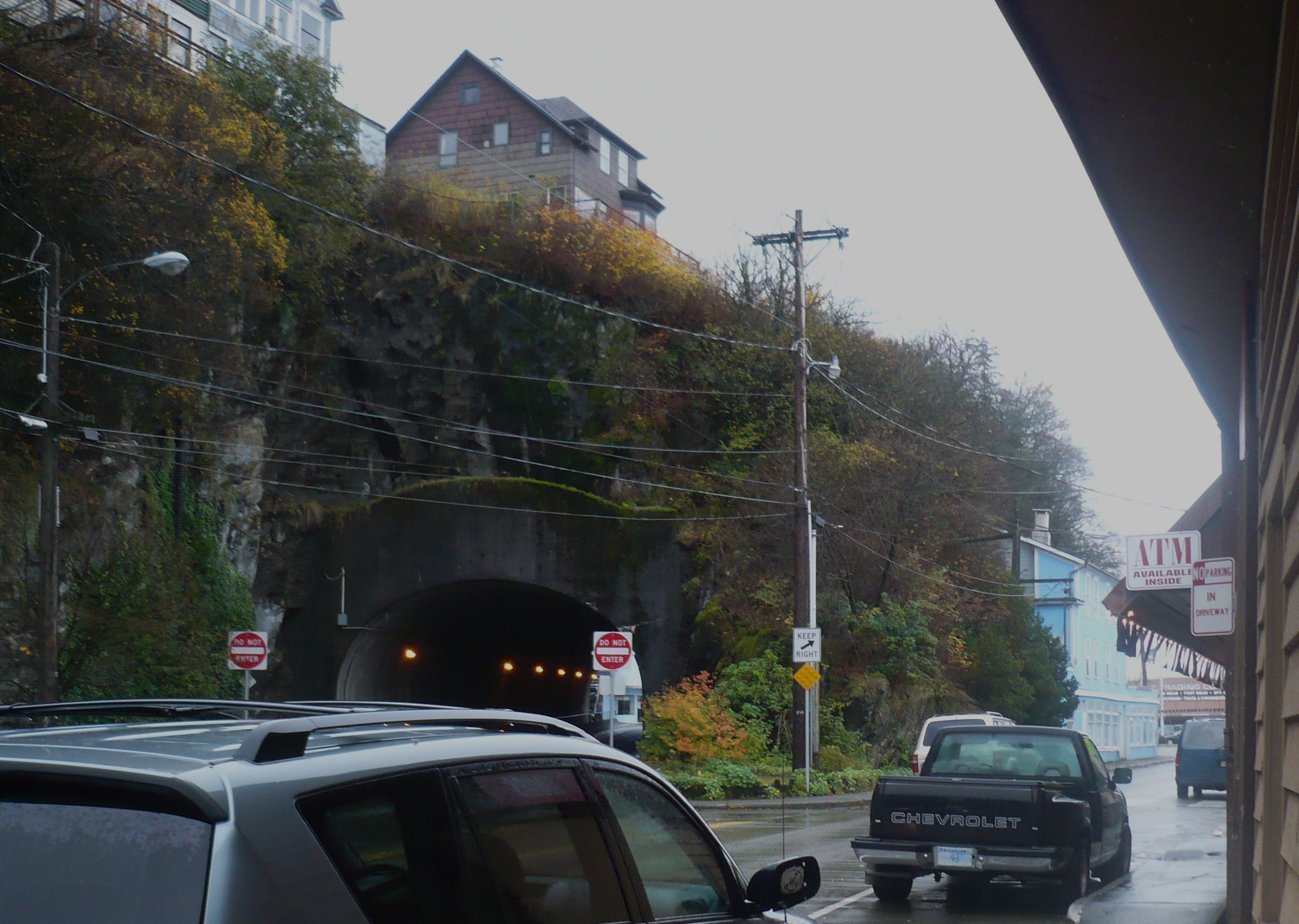
A Ketchikan streetscape

The pale pink skyscraper of downtown Ketchikan, AK:
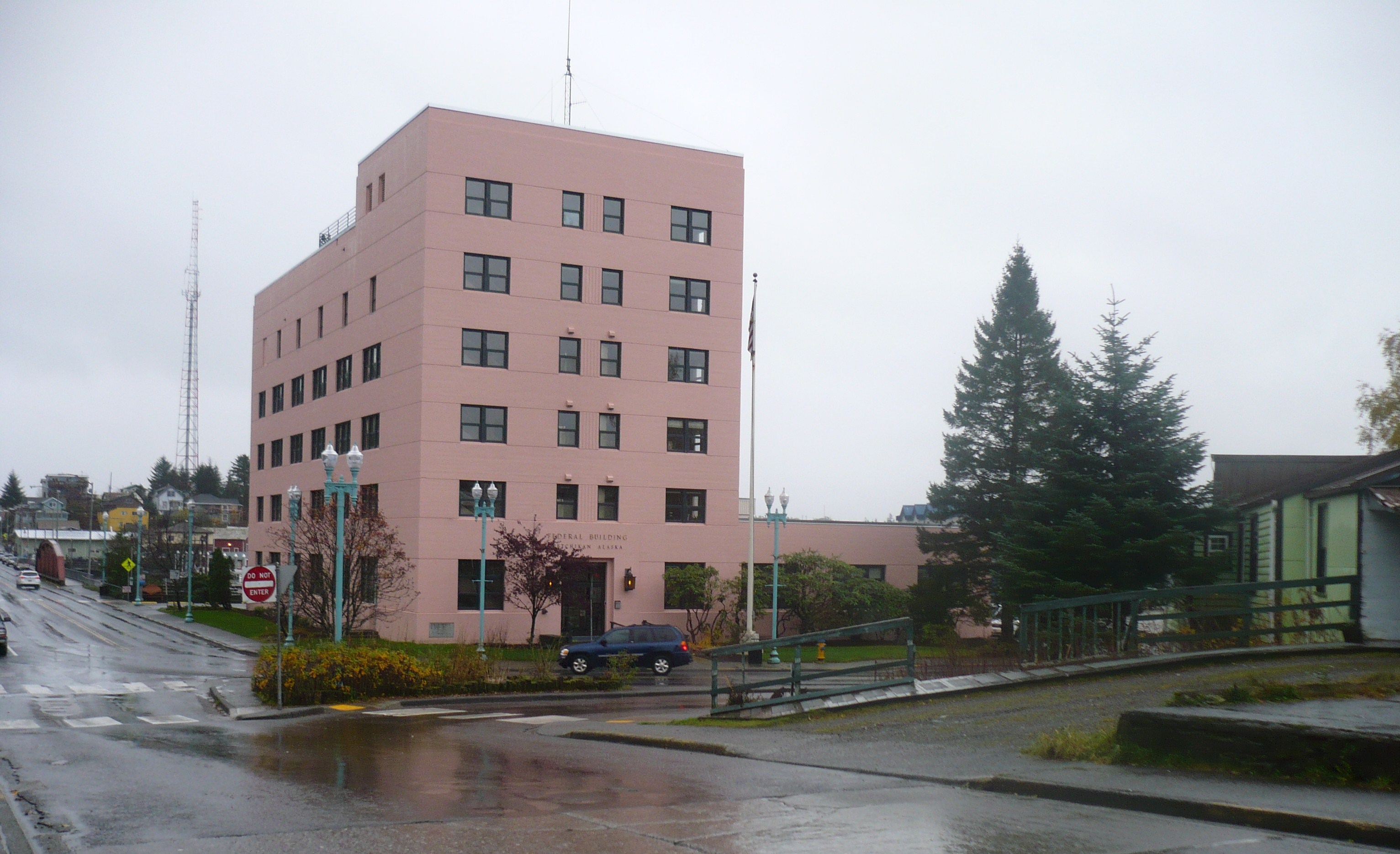
The town’s famous “Creek Street”:

A fishing boat, heading out southward:
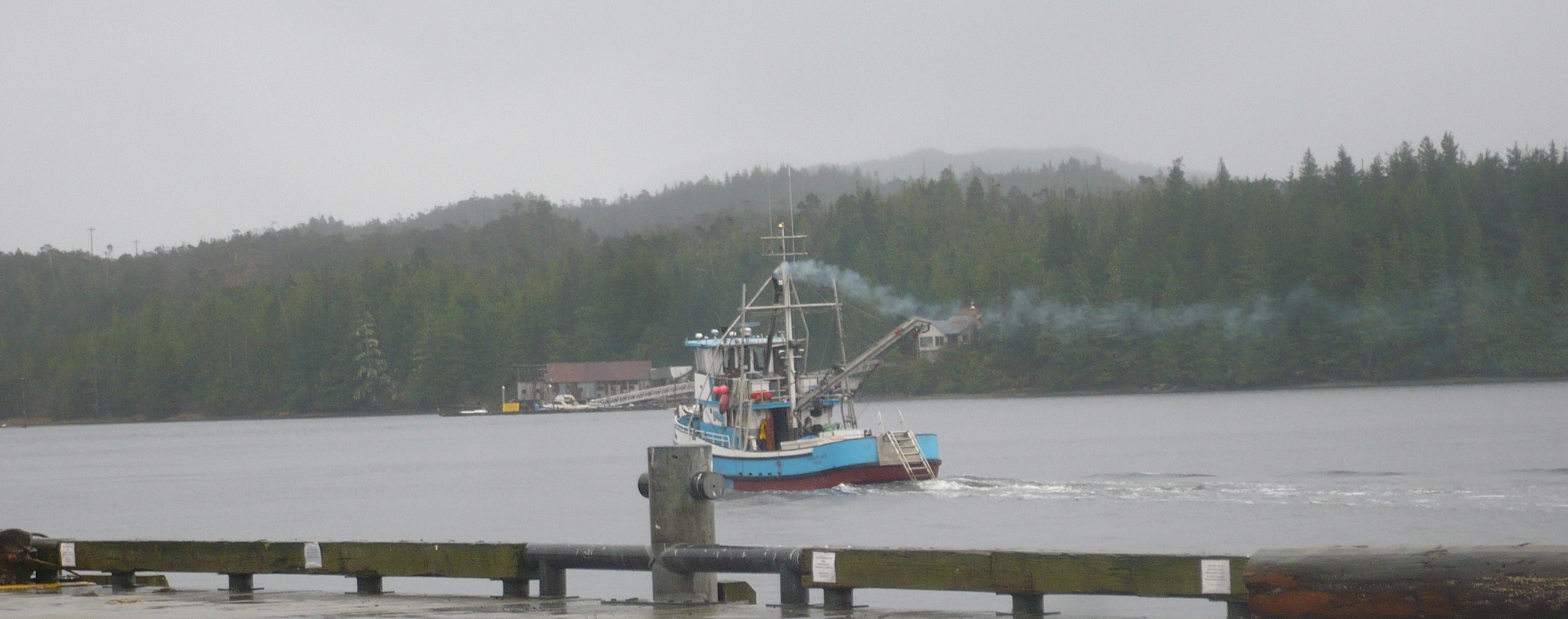
![]()
Caveat: the view from right here
Here's what you can see if you stand at the shoreline of Arthur's property, looking west down the Saint Nicholas Fiord toward Craig (sort of off to the left). That's Sunnyhay Mountain with some fresh snow sticking up in the clouds.
Caveat: dodging potholes just for fun
I went on a drive today, just to go exploring. During all my time here, back in 98, I didn’t do much exploring beyond Craig and Klawock (which are the island’s “twin city” metropolis, with something around 2000 inhabitants, combined).
 So I drove up to Coffman Cove, which is where the ferries from Petersburg and Wrangell stop, then I went down a 40 mile dirt road along the east coast of the island to Thorne Bay, thence back to Klawock. A big circle.
So I drove up to Coffman Cove, which is where the ferries from Petersburg and Wrangell stop, then I went down a 40 mile dirt road along the east coast of the island to Thorne Bay, thence back to Klawock. A big circle.
Driving on these old forest service logging roads is all about dodging potholes. I made a video of the drive along the Port Saint Nicholas Road from Arthur’s place into Craig. It’s 8 miles, but takes 25 minutes, dodging potholes all the way. I’ll post it, when I get some bandwidth.
Today, about halfway between Coffman Cove and Thorne Bay, I saw a downed tree across the road (see pic at right). Someone had used to a chainsaw to carve a path exactly pickup-truck-sized through the branches and under the main trunk of the tree. I took a picture.
OK, more later.
![]()
Caveat: Ketch as Ketchikan
Catch as catch-can – I always, always wanted to say that stupid pun. So there.
Here’s a photo taken from my hotel window. Ketchikan is, of course, quite beautiful.

![]()
Caveat: the uncle Jared tour
I have been fulfilling my lifelong dream to be an eccentric uncle.
Nephew James, playing hangman:

My niece Sarah, ready for Halloween:

My nephew Jameson, looking up:
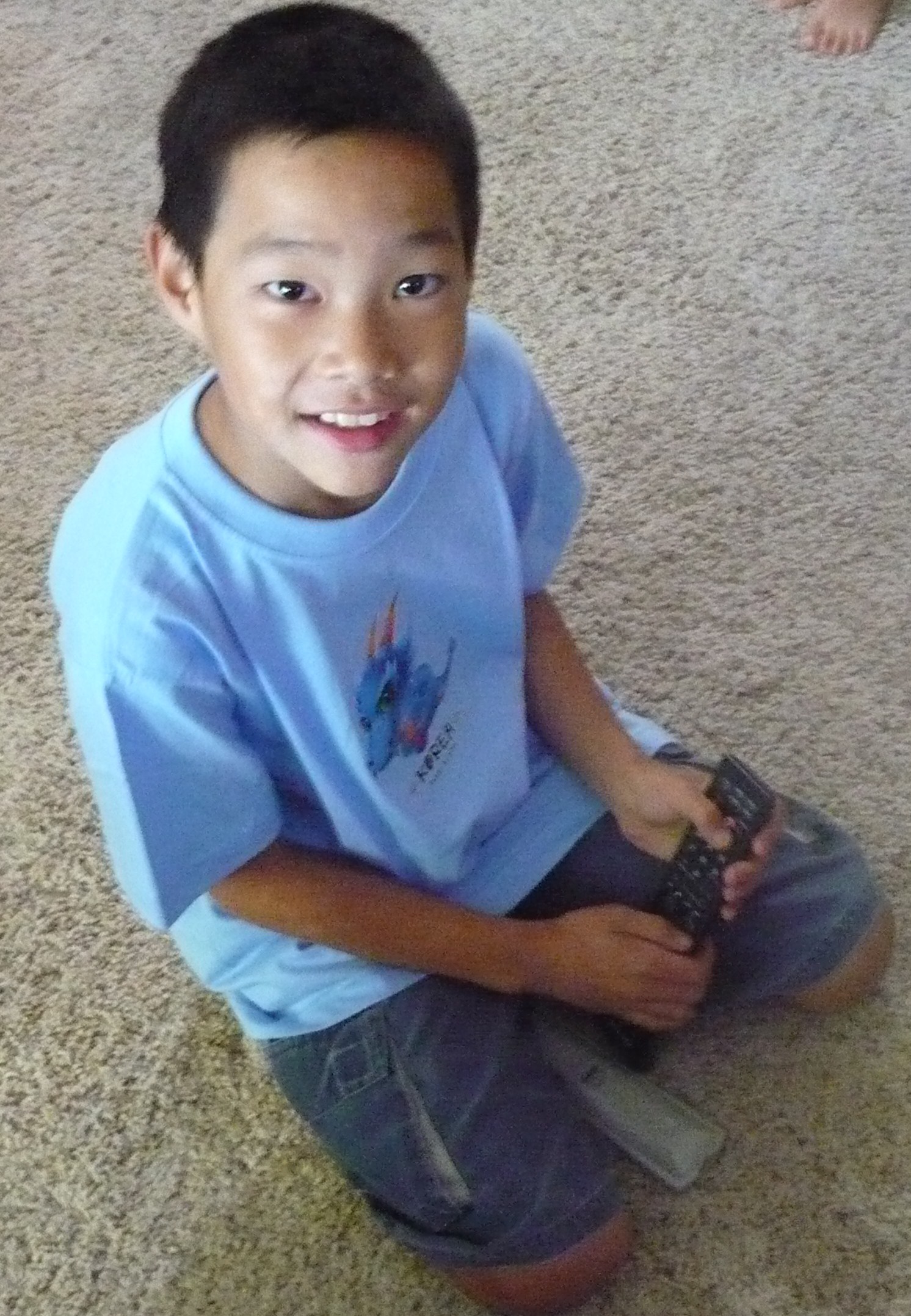
My nephew Dylan, looking down:
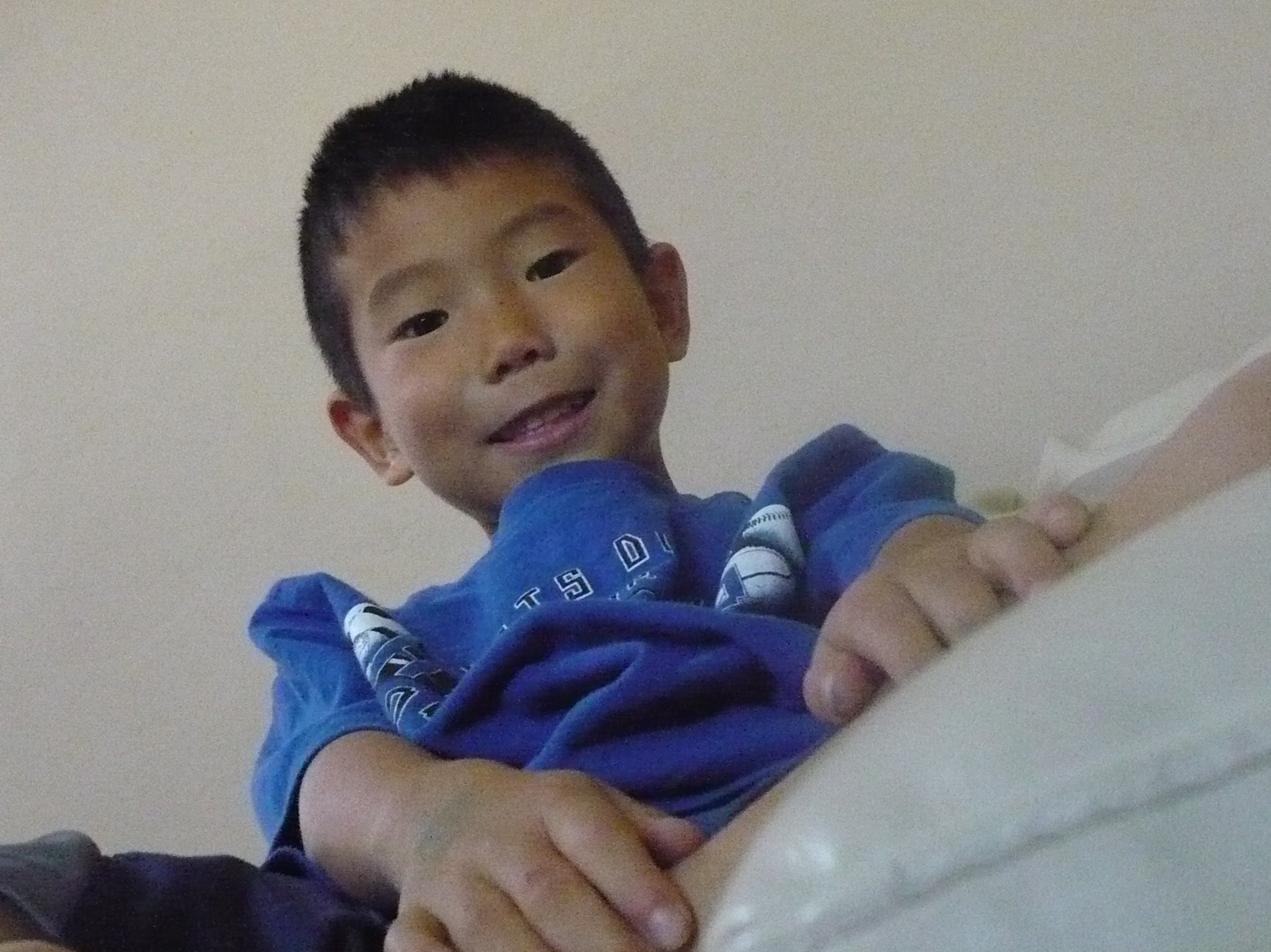
![]()
Caveat: 100000 mile milestone
My little pickup truck turned over 100,000 miles yesterday. I can imagine what everyone is thinking: Jared drives so much, how can he have a truck that’s over 9 years old and only now be turning over 100,000 miles?
I think the reason is that although I have taken many road trips in this truck (I’ve done the Minnesota/Phoenix/LA/Portland circle at least 6 times by my count, plus several loops out to the east coast too), I have only rarely used it for substantial commuting. I always tried to arrange my life so that my commutes were short or even walkable, so except for that rather unpleasant almost-a-year when I was driving almost every day from Long Beach to Newport Beach, I’ve never had a commute over about 10 minutes. And of course, for the last two years, it’s been in storage, putting on exactly zero miles.
So, anyway, I set out from Bob and Sarah’s yesterday morning, and per my usual randomness, I decided to avoid interstates for a few hours. I traversed northwest Illinois without even getting onto a 4-lane highway: I drove to the west of Rockford, around Freeport and Sterling, through many small towns and past the endless umber expanses of ripe corn and soybeans.
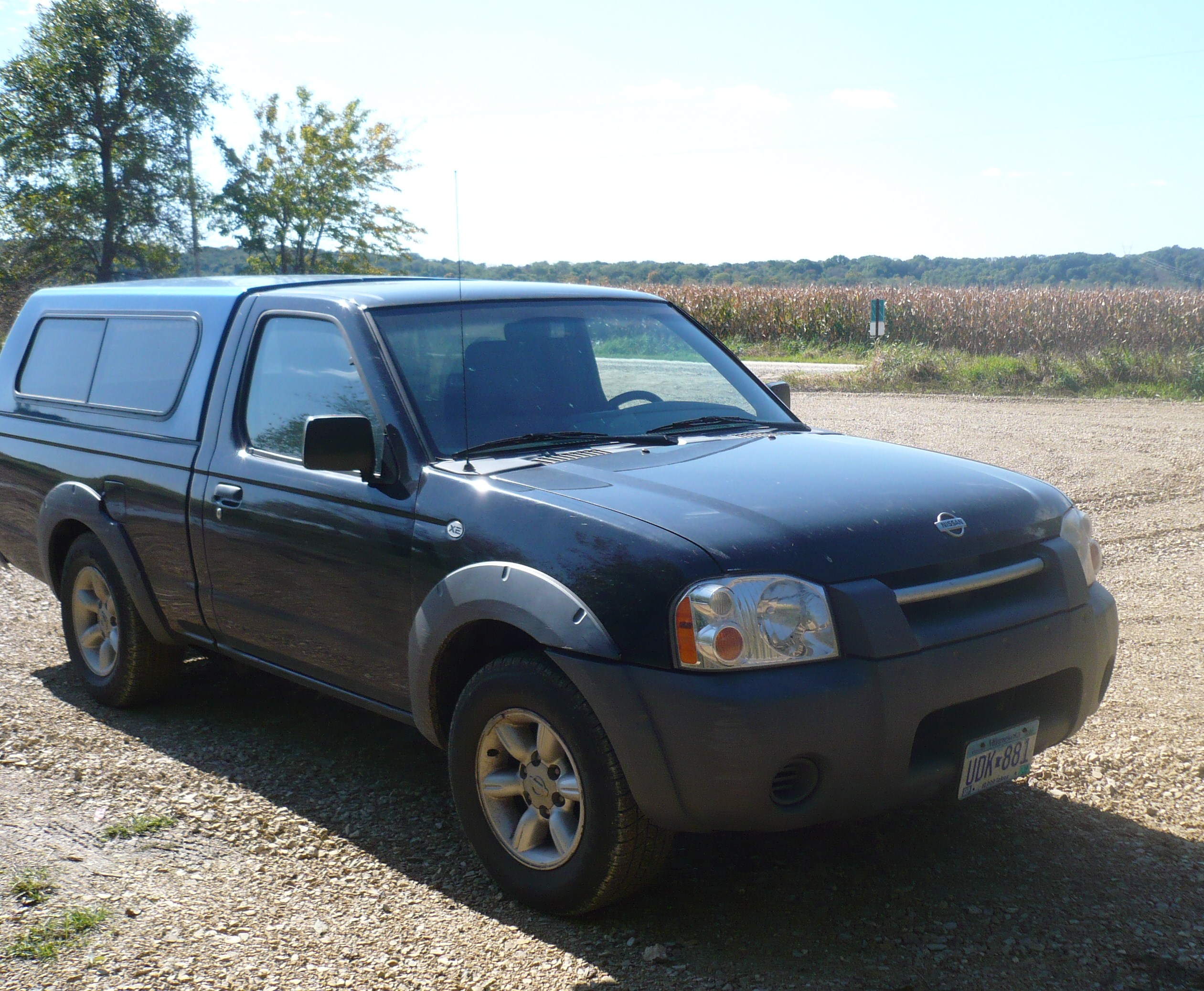 I crossed the Mississippi at Clinton, Iowa, and follwed the river on the west side down to Bettendorf. It was along this stretch that I happened to notice my odometer was at 99999. I looked up and saw a sign with an arrow: “Picnic Area, 1 mi.” So I drove to the picnic area (not, in itself, anything worth blogging about), watched the odometer turn over to 100,000, and then took a picture of my pickup truck for its “milestone” moment.
I crossed the Mississippi at Clinton, Iowa, and follwed the river on the west side down to Bettendorf. It was along this stretch that I happened to notice my odometer was at 99999. I looked up and saw a sign with an arrow: “Picnic Area, 1 mi.” So I drove to the picnic area (not, in itself, anything worth blogging about), watched the odometer turn over to 100,000, and then took a picture of my pickup truck for its “milestone” moment.
I crossed Iowa on the interstate. I went through some pretty major rain around sunset at Omaha, and I stopped at a motel near Lincoln, Nebraska. And here I am. I’ll post pictures when I get a better internet connection.
![]()
Caveat: Corn mazes and other midwesterniana
Today I went to a “corn maze” with my friend Bob and my honorary nephew, his son Henry. These are quite the midwestern phenomenon, they’re pretty fun. Here’s a website showing the actual maze [UPDATE: the link rotted – no replacement link found] we went into. Because Henry is only around 2 years old, we ended up converting a dead end on the star-shaped trail in the upper left quadrant of the maze shown in that picture (roughly west of the Ecuador, which makes sense if you see the maze map aerial photo) into a pull-ups changing station.
I drank some hot apple cider and Henry had more fun in the parking lot inventorying the various vehicles, including some tractors and an ambulance, than he did in the maze.
At the risk of seeming like an indulgent “uncle,” here are some pictures of Henry. The first was a picture of him at the corn maze, looking through a cut out of a car. I did it with my cell phone because I forgot to take my camera to the corn maze.

The next pictures show him hamming around the house.

.
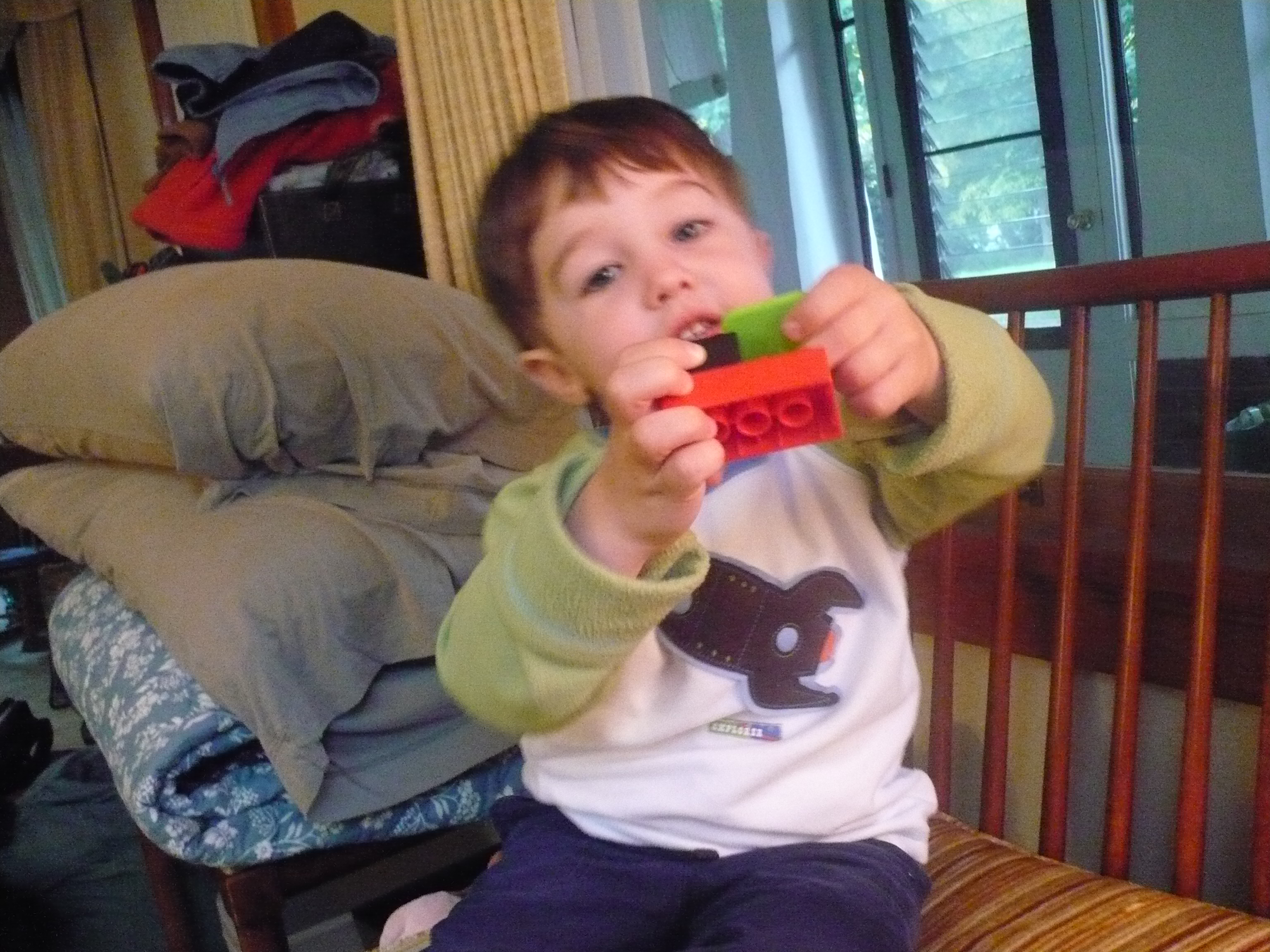
.
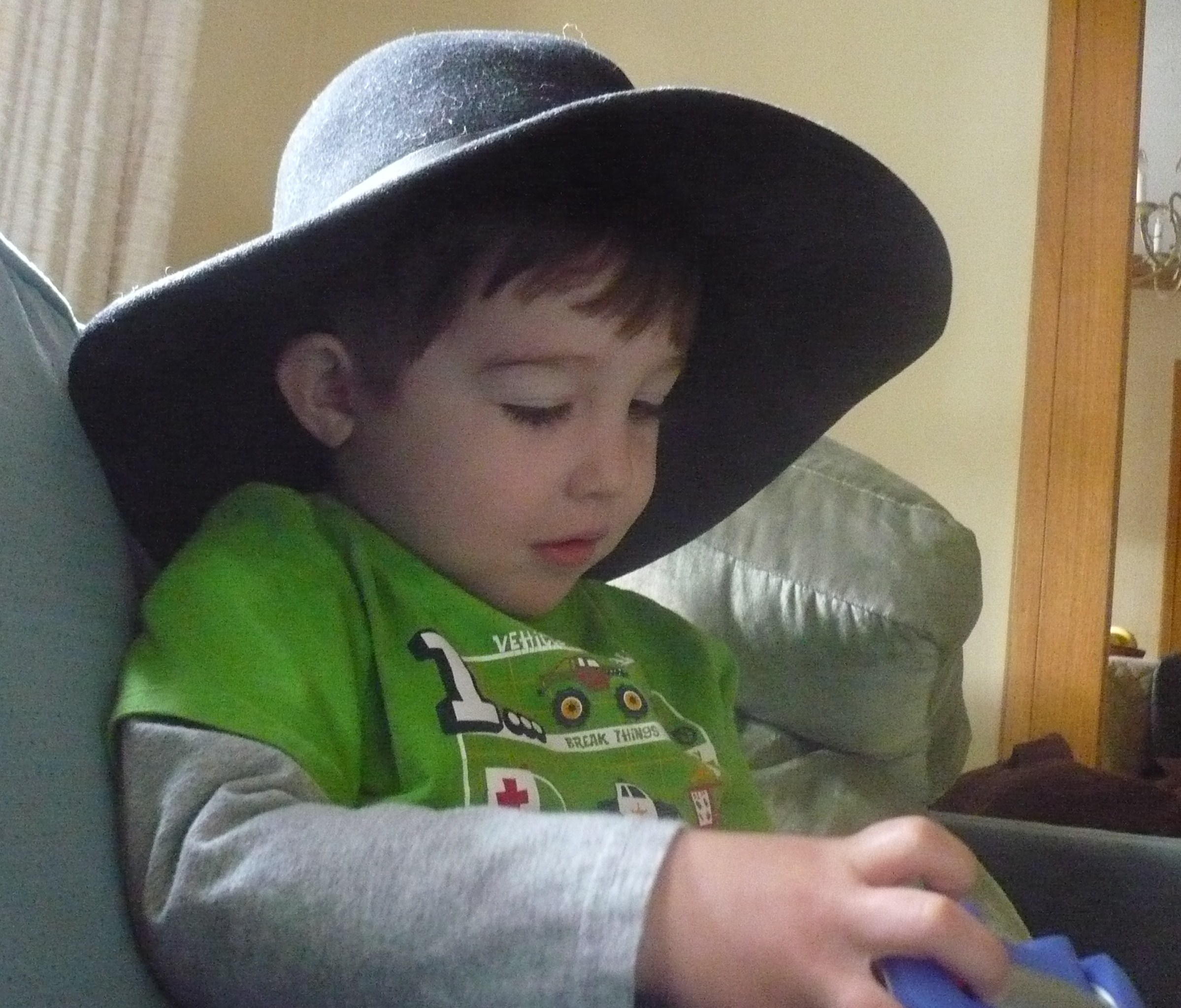
This is a picture of him this evening at a gathering at some friends of Bob and Sarah’s, wearing interesting “shades.” Cute kid.
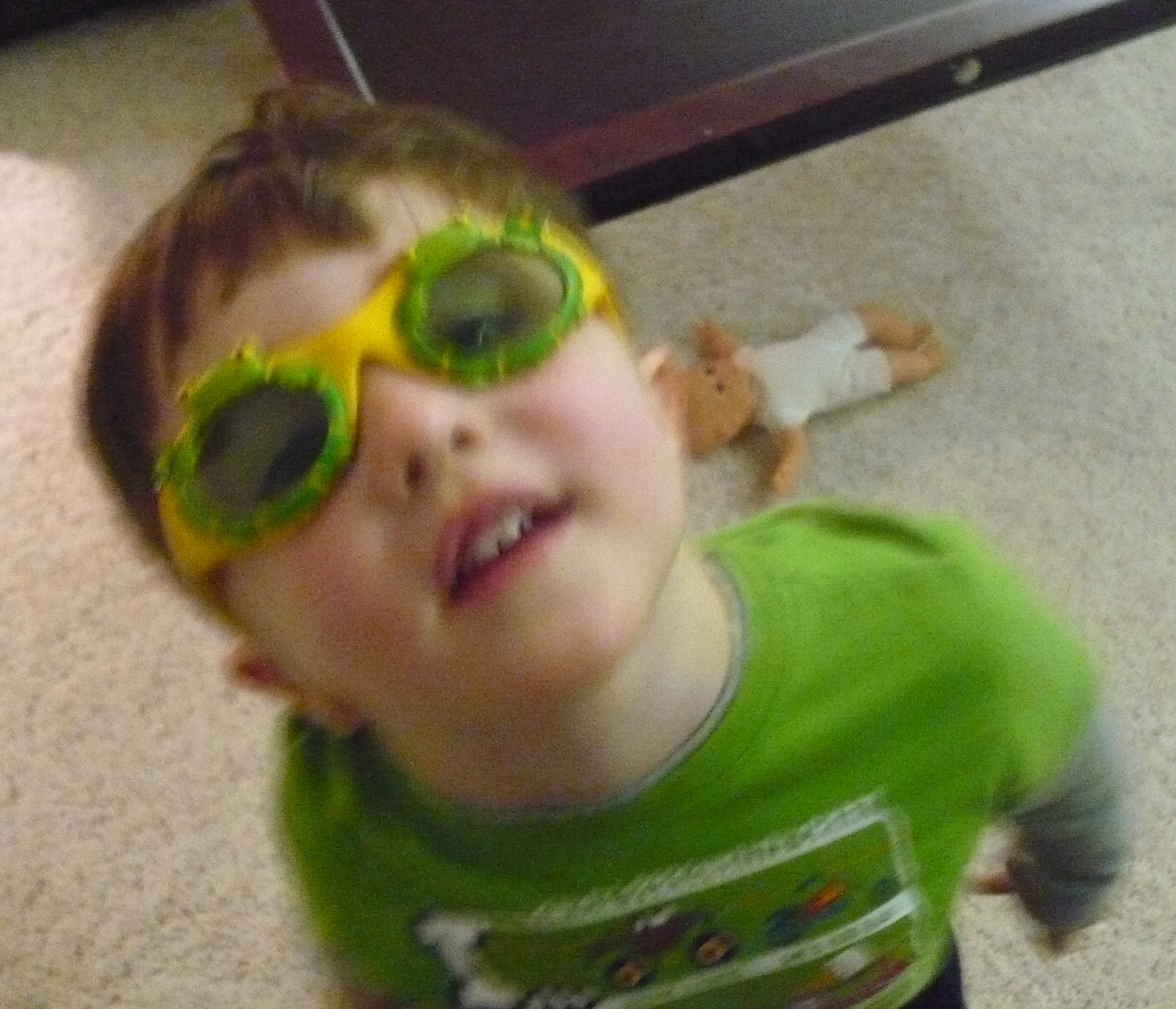
![]()
Caveat: Beets
One reason I love visiting with my friend Bob is that he inspires me and motivates me to cook things that I love to eat. When we were roommates, many years ago, we used to concoct all kinds of things together, and he always seemed to bring out my creativity in the kitchen. Certainly it’s true that cooking with (and for) others is much more fun than cooking by myself, which is why I almost never cooked anything elaborate in Korea.
So, Bob motivated me to make something I often crave: borsht.
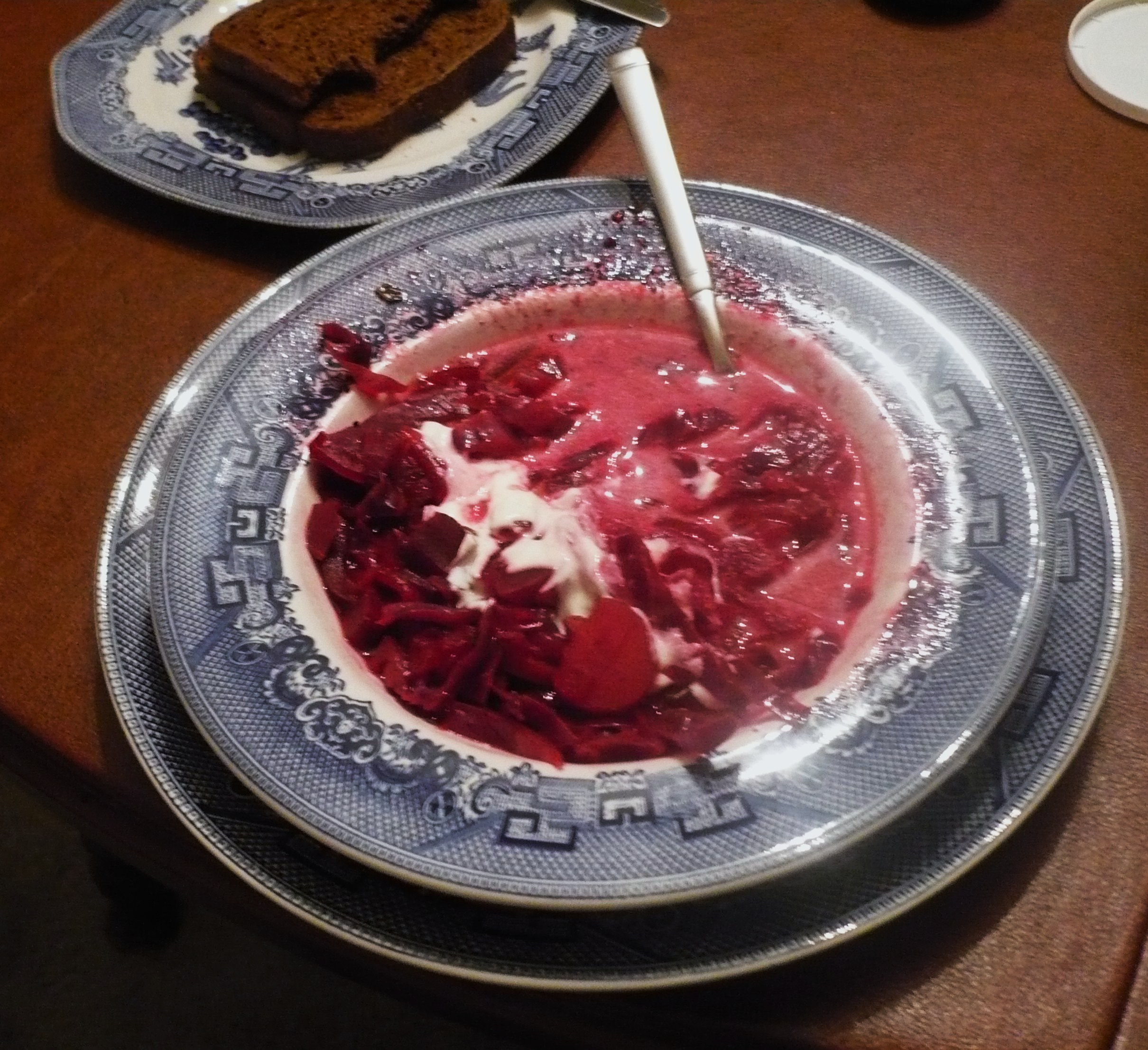

![]()
Caveat: Peshtigo, WI
I drove through Peshtigo, Wisconsin on my way back down from the UP (you-pee = Michigan’s Upper Peninsula, one of my favorite places on planet earth). I saw not one, but two, signs in Korean in this tiny town. Of course, knowing what they said made them less interesting: one said 시온교회 (Zion Church) and the other said (태관도 Taekwondo — of course). Still, it was weird seeing these signs in a tiny town (population <1000).
Here are some pictures from the UP.

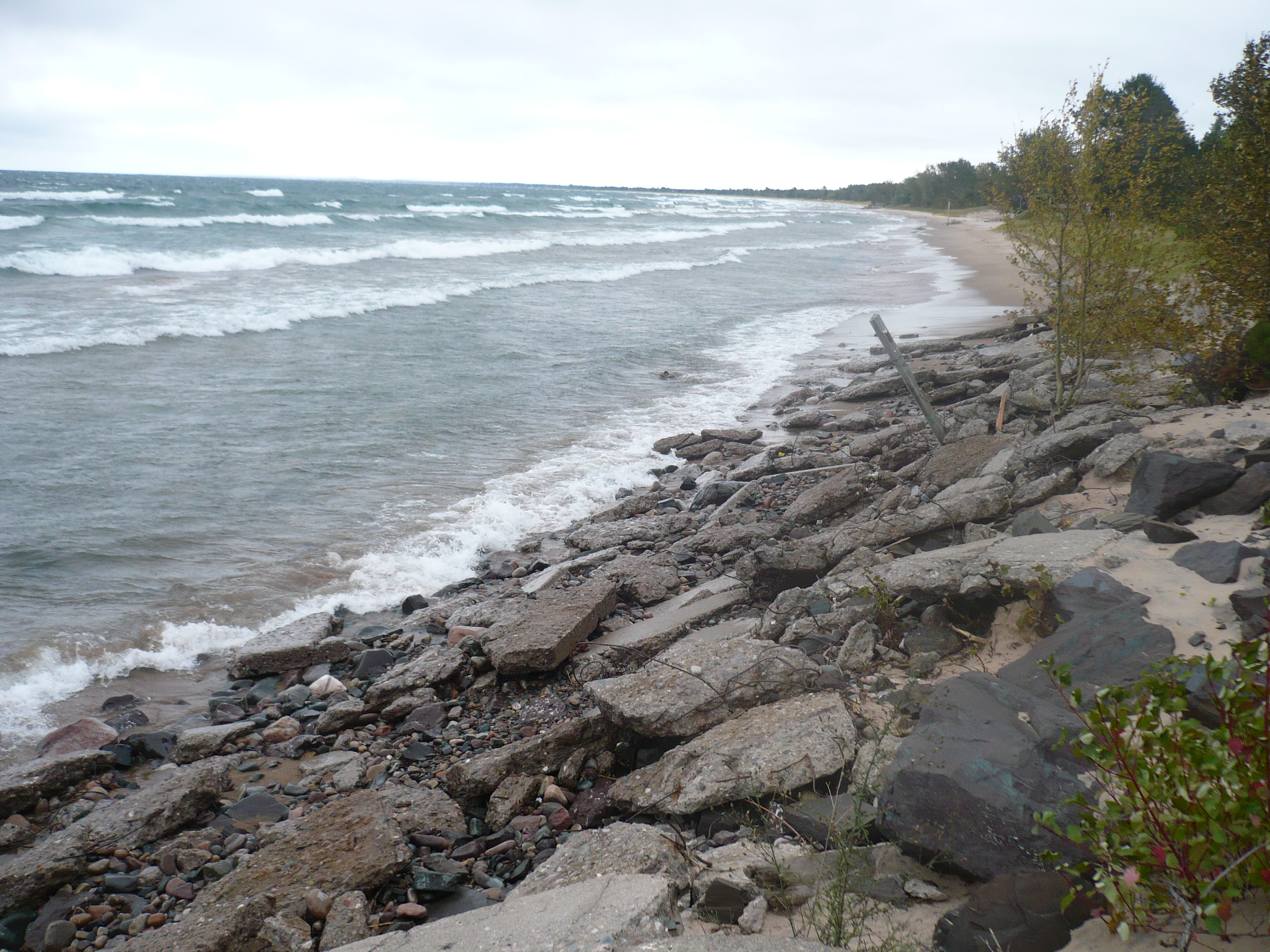

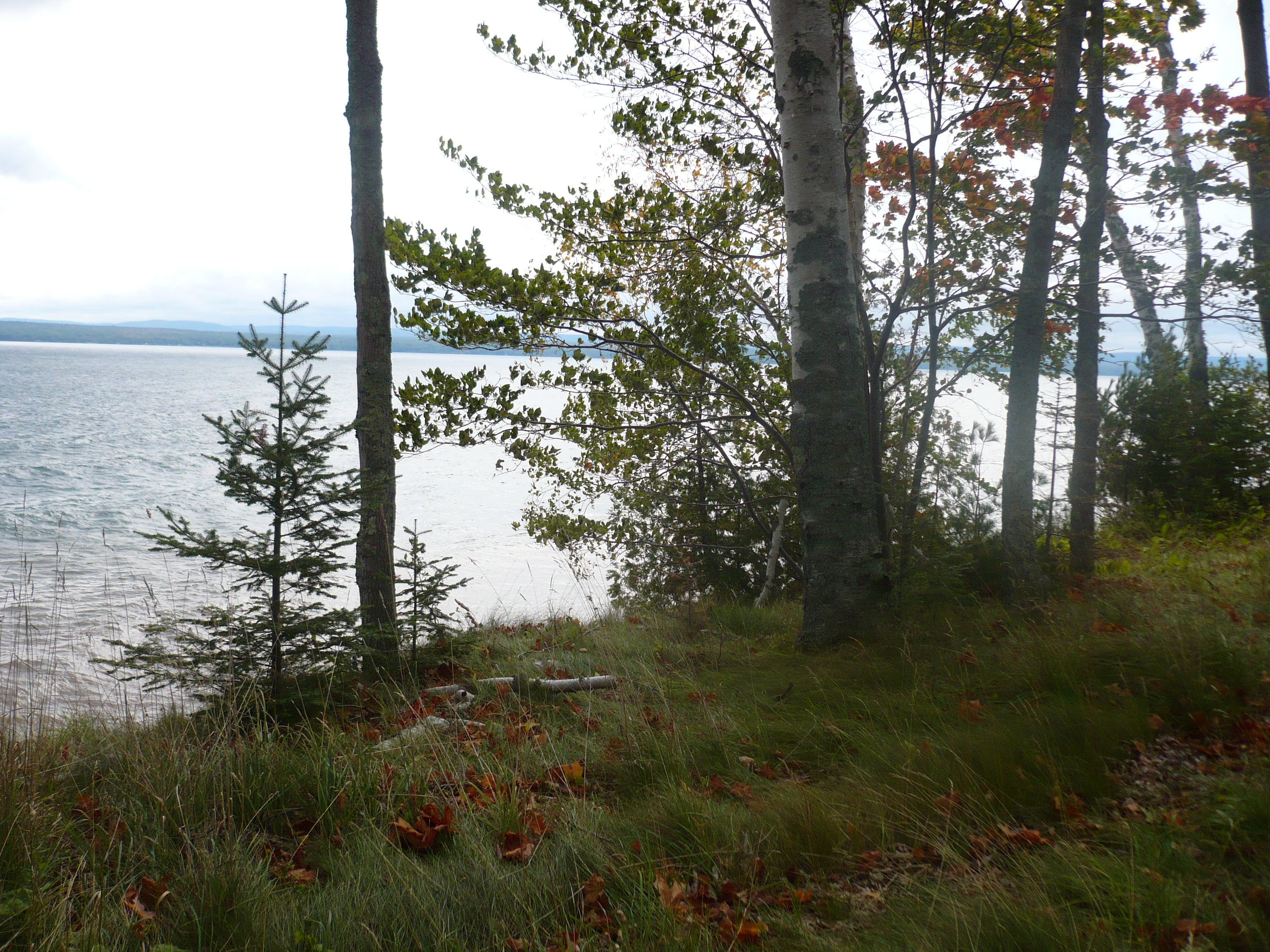
Odometer: Start 99408 End 99833 = 425 miles.
![]()
Caveat: It sure ain’t Tokyo
But it’s beautiful. I drove to Duluth, just for the hell of it. Because I love Duluth. I’m not sure I could live here… though I often fantasize about it. It was very windy, and there were waves on Lake Superior.
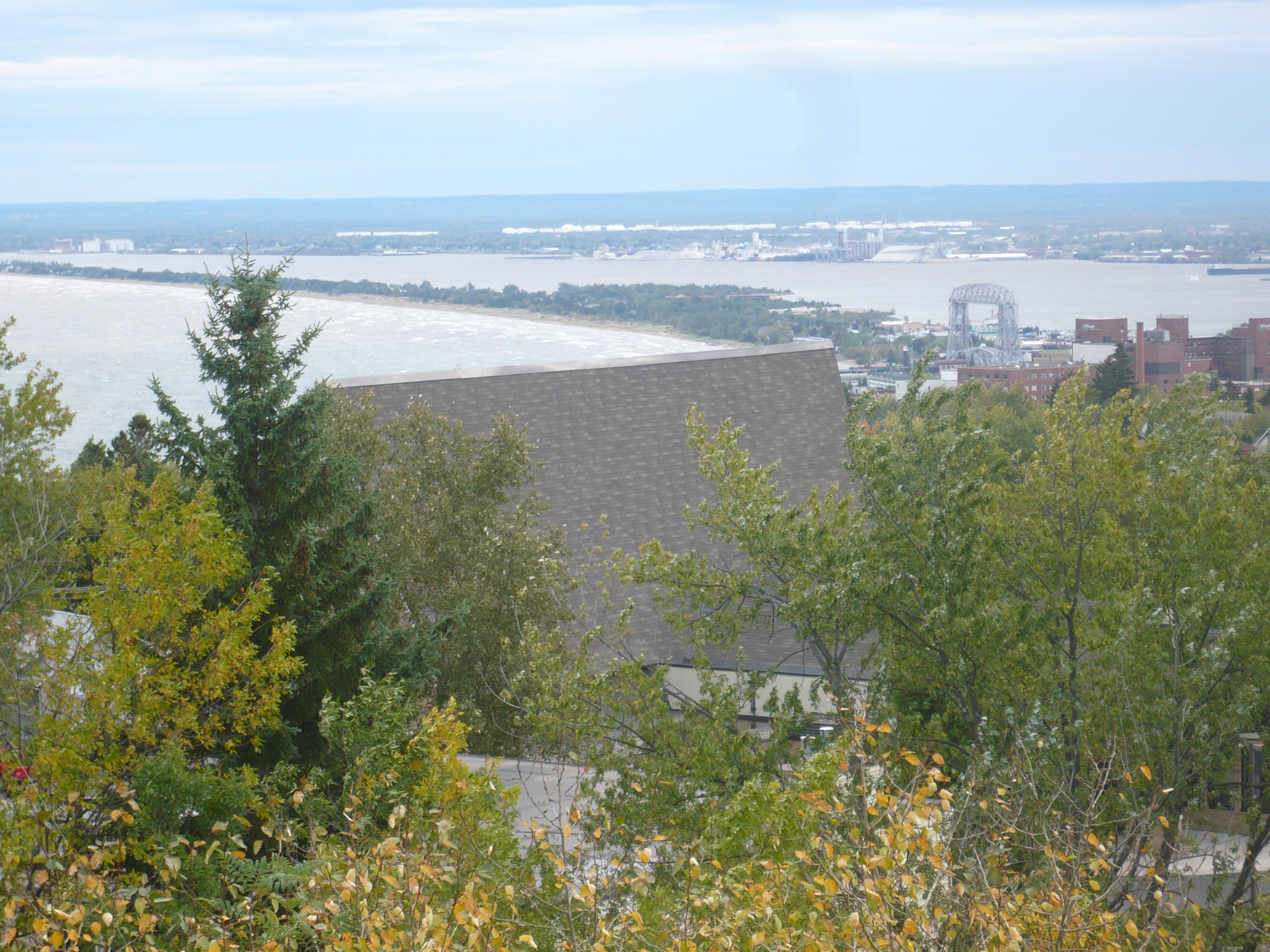
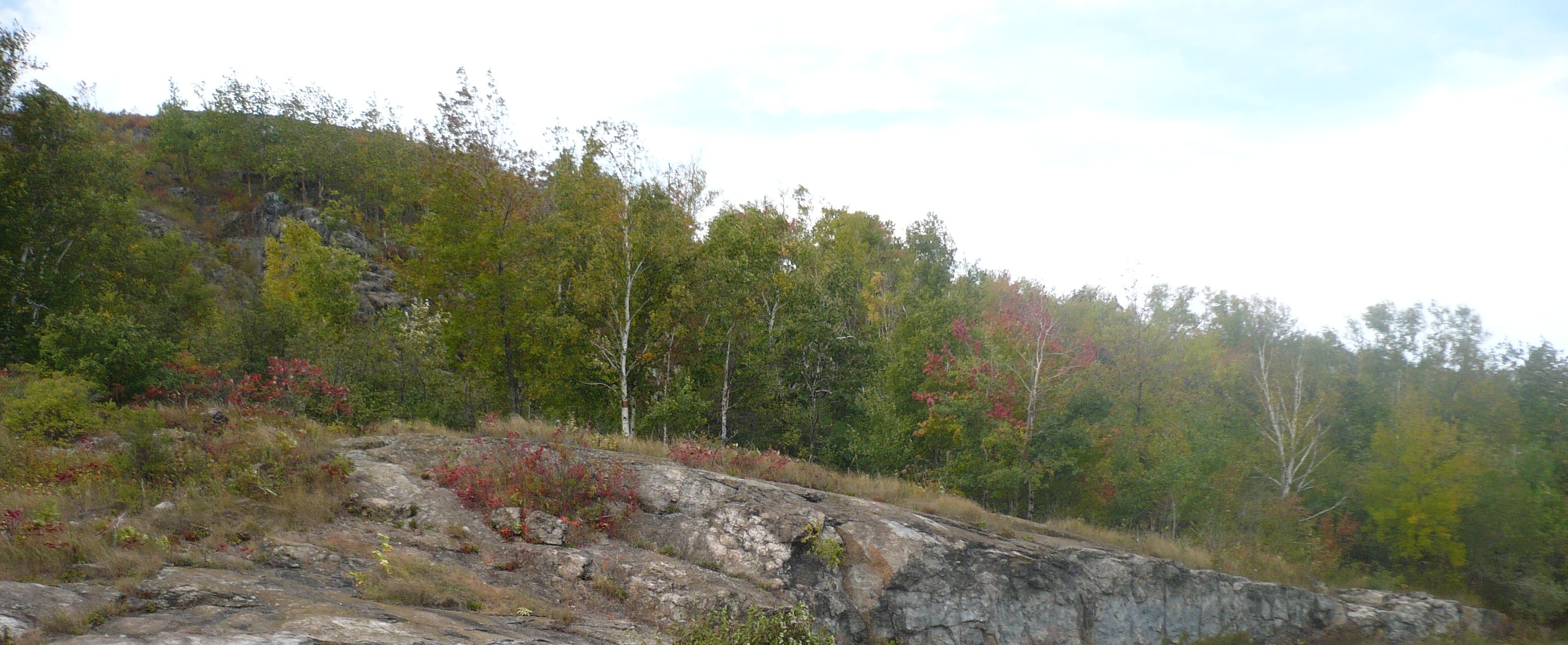
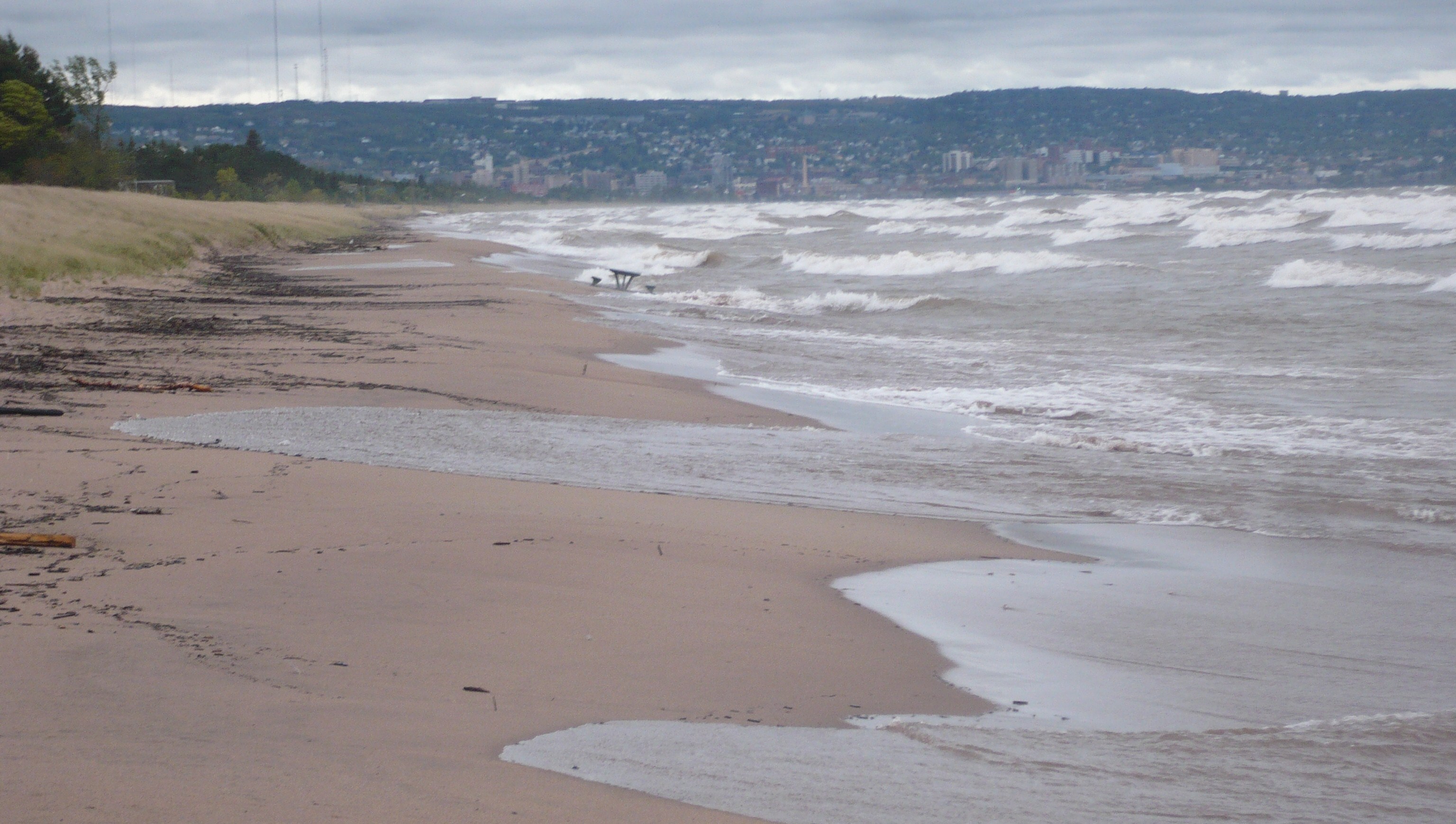
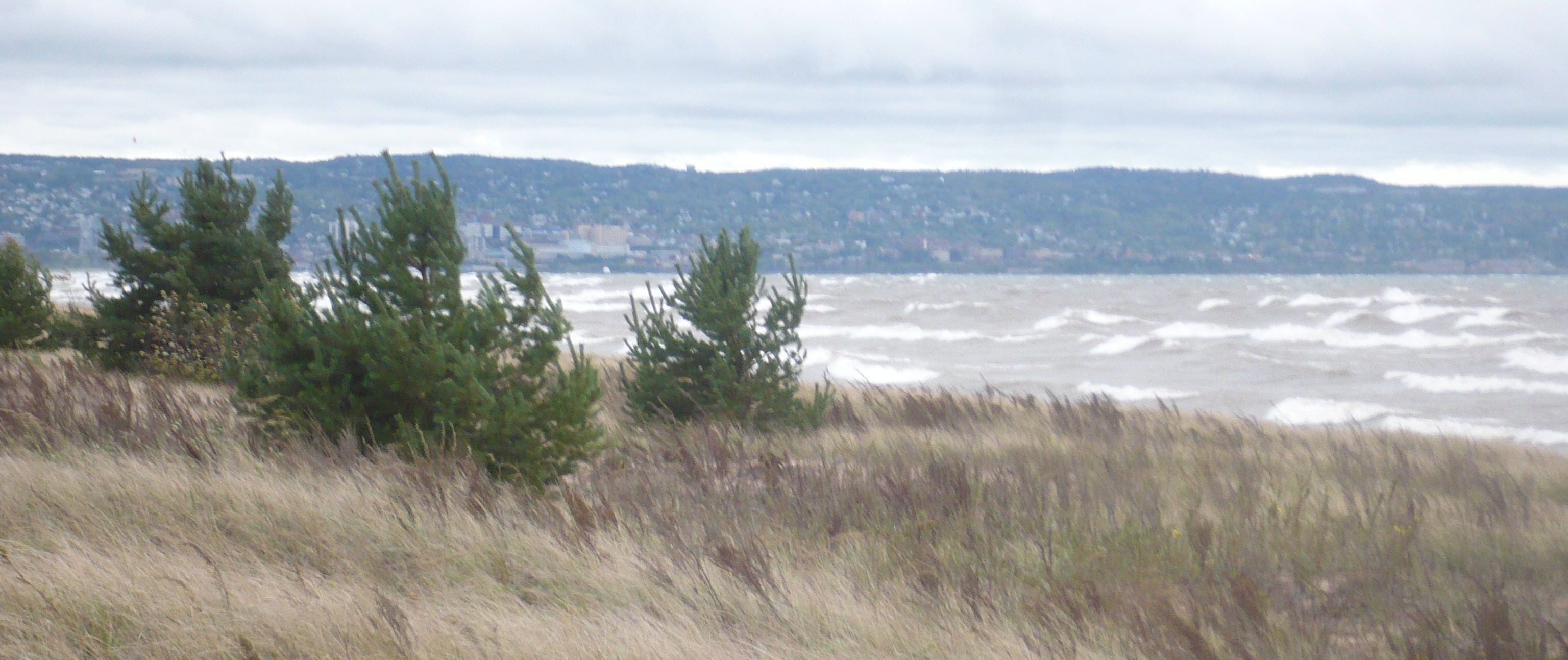
Then I got really crazy and drove to Houghton. Michigan. I got here after dark, but I’ll look around tomorrow before recrossing Wisconsin, north to south, and visit my friend Bob and his family.
Notable music from soundtrack: Röyksopp, Jesus Jones, Cat Stevens, Dylan (of course)
Odometer: Start 99107 End 99408 = 301 miles
![]()
Caveat: “The Subway Octopus” and other uncategorized photos
Here are some other uncategorized still photos I have uploaded from my computer.
First, here is a picture of an octopus sculpture I saw in the Busan subway.
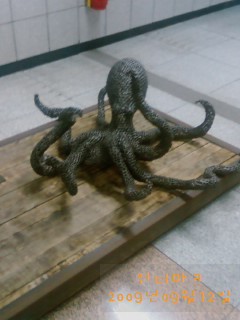
Next, there is the Busan skyline as seen from the top of Jangsan (which is situated north of Haeundae beach in the northeast part of the city). I’m looking south by southwest, here (roughly toward Taiwan, off across the sea by a thousand kilometers or something like that). You can click on these pictures to see bigger versions.
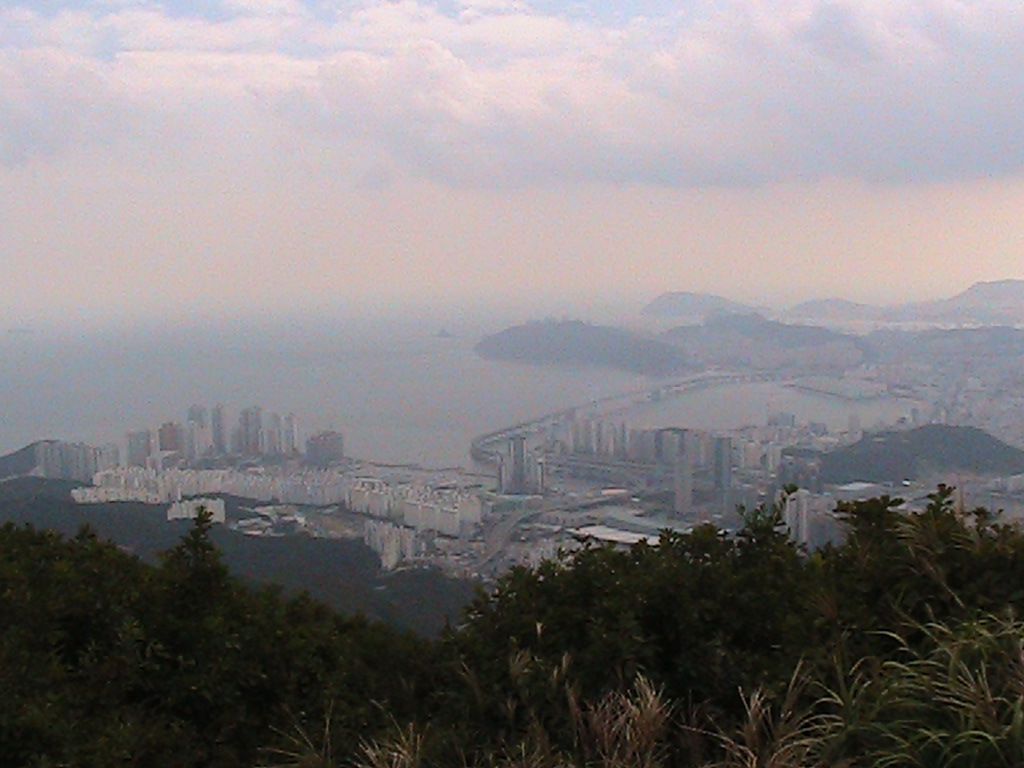
This is a picture of “Busan Tower” that I ascended while in Busan one evening. The view of the city, all lit up, was pretty spectacular, but I didn’t get any photos. Sorry.

Here is a picture I took of the screen in the express elevator that runs to the top of this tower. When your express elevator is running Microsoft Windows, and Windows crashes (as is its wont to do), does the elevator then crash, too? We were all somewhat alarmed to see the error message suddenly pop up on the screen, two thirds of the way to the top of the tower.
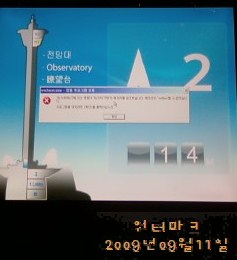
Here is a picture of greenery on Ulleundo that I like.

Here is a picture of red peppers drying in the morning sun on a Dodong, Ulleungdo, side street. A very common sight everywhere in Korea, this time of year. Such a delicious country!
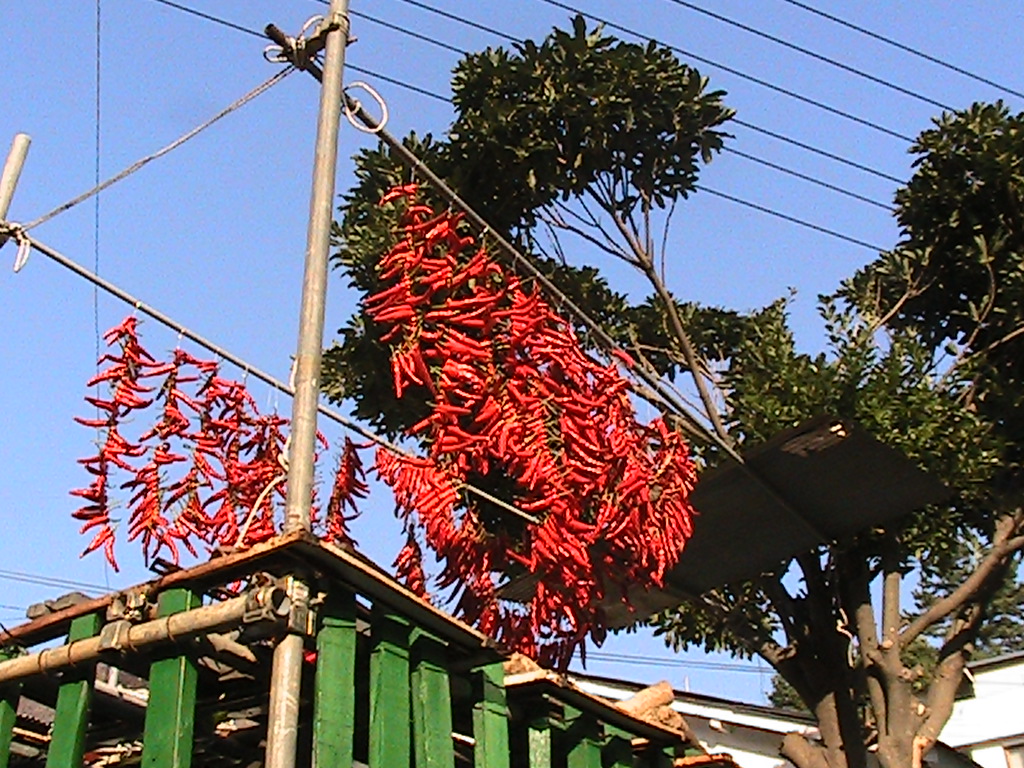
Last: I met a guy and his wife and mother-in-law who were on tour visiting Ulleungdo. They shared some food with me and we chatted in a rewarding mix of his terrible English and my terrible Korean and his mother-in-law’s monologue. I took some pictures of the three of them, using their camera, with the view of Dodong harbor behind them (I hadn’t brought my own camera on that particular hike).
Then he took my picture in the same spot as they’d been standing. I wrote my email down for him, because he said he would email the pictures to me. I thought nothing of it – but the other day, I got several pictures of myself via email. So… here I am, standing on the rock path at the southwest corner of the Dodong harbor entrance (the camera is pointed roughly north).
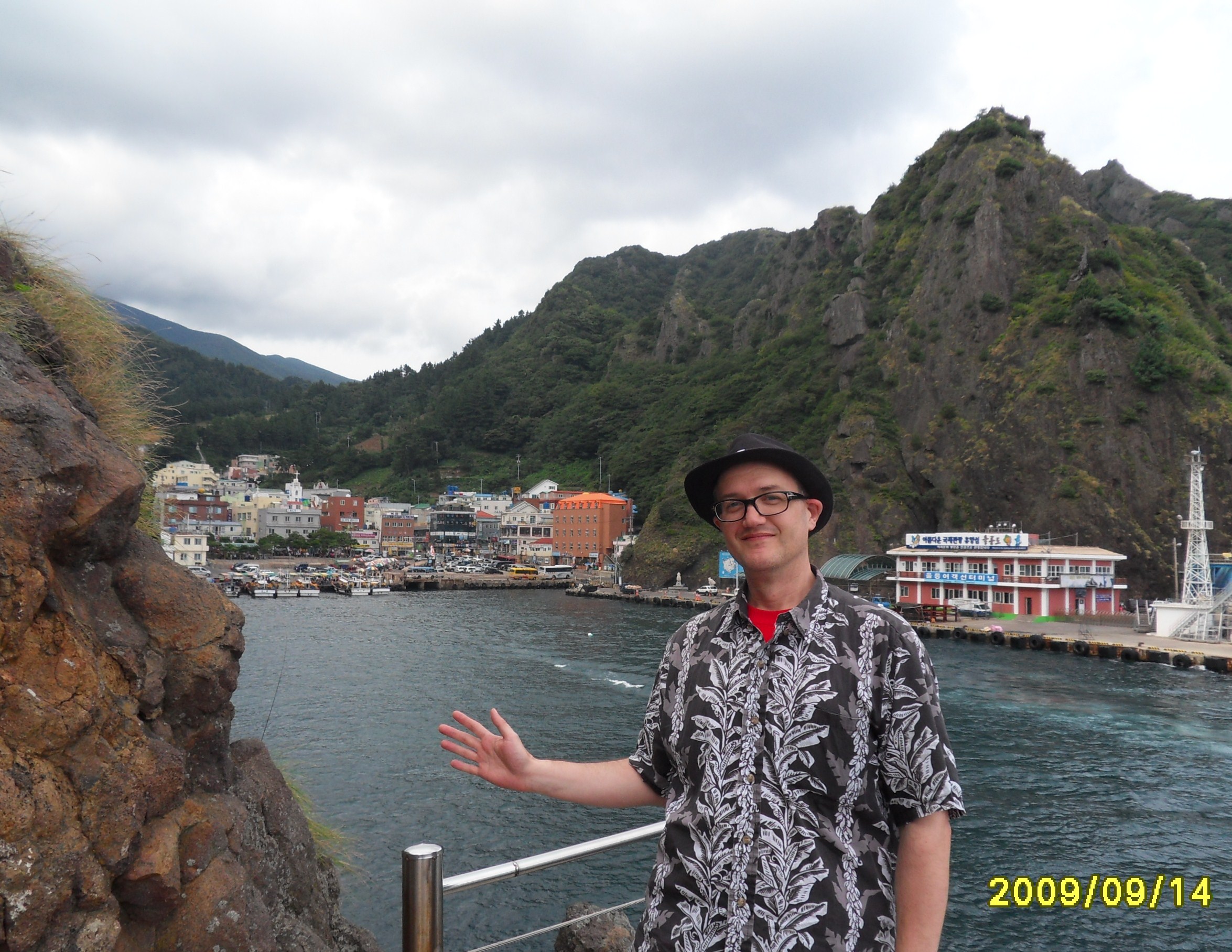
![]()
Caveat: Some pictures from Ulleungdo
Here are some still pictures. I didn’t actually take that many, because I was too busy playing with my video camera. Not sure how to balance that out, yet.
The first is from Cheonbu harbor (center of the north coast) looking west toward the Chusan outcropping. Straight west past that is South Korea. Northwest, to the rightish, is North Korea. Exactly north, to the right, is Vladivostok. And behind is Japan. All off across the sea, of course.
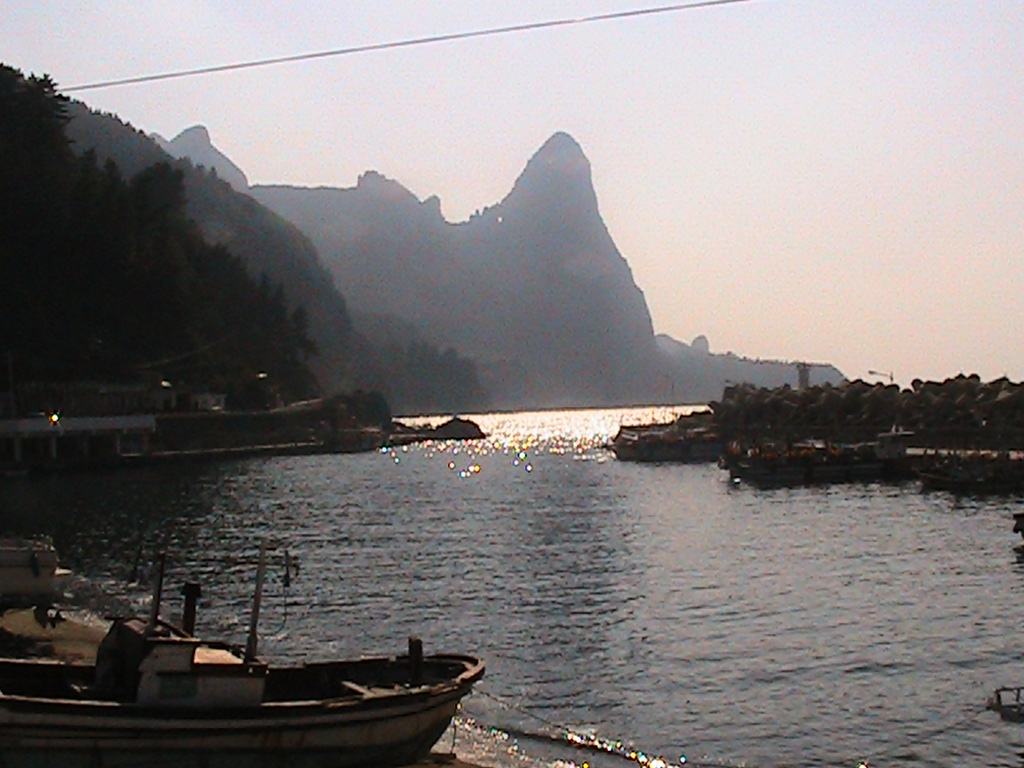
The next is from the southeast coast, between Dodong and Jeodong on the walk to the Dodongdeungdae.
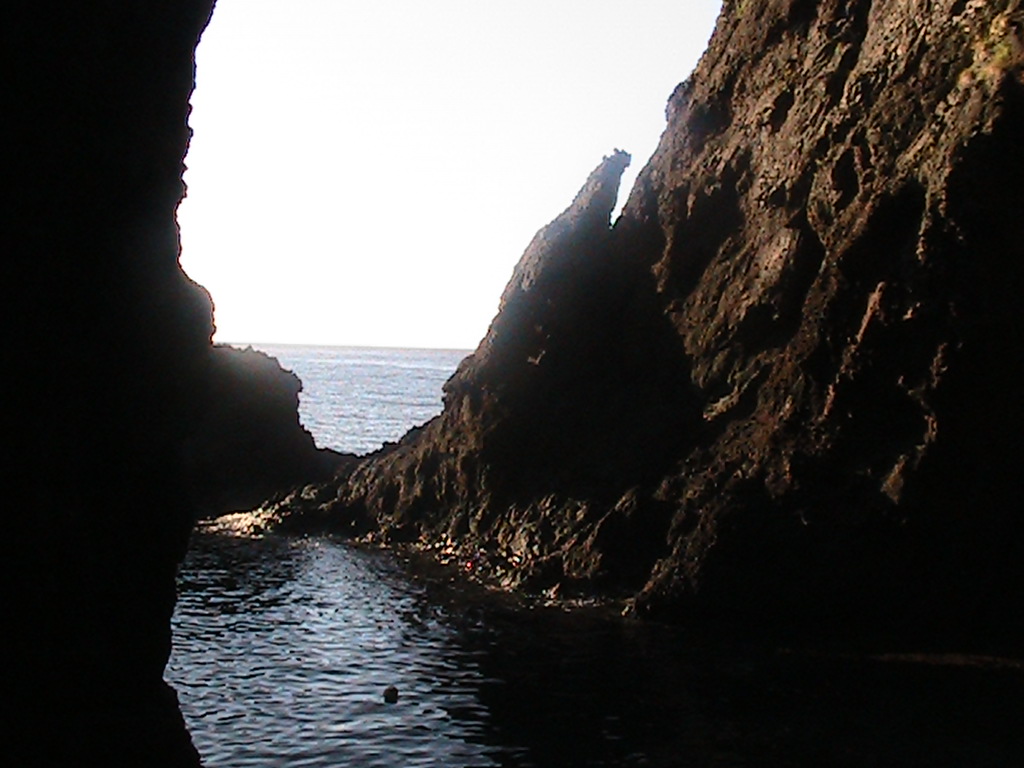
These are some boats in Dodong harbor.
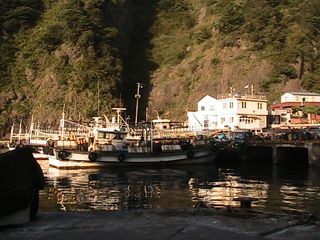
This is the view of Dodong from the ferry terminal. Cute town.
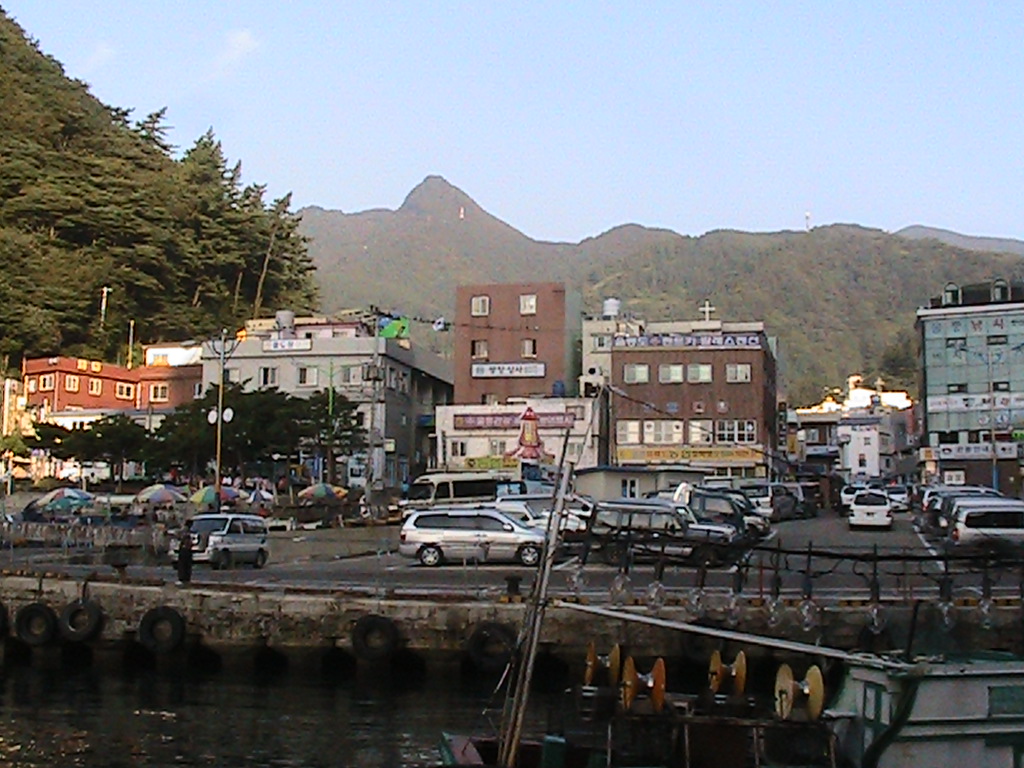
This is the “no road existing” sign that made sure I didn’t get lost.
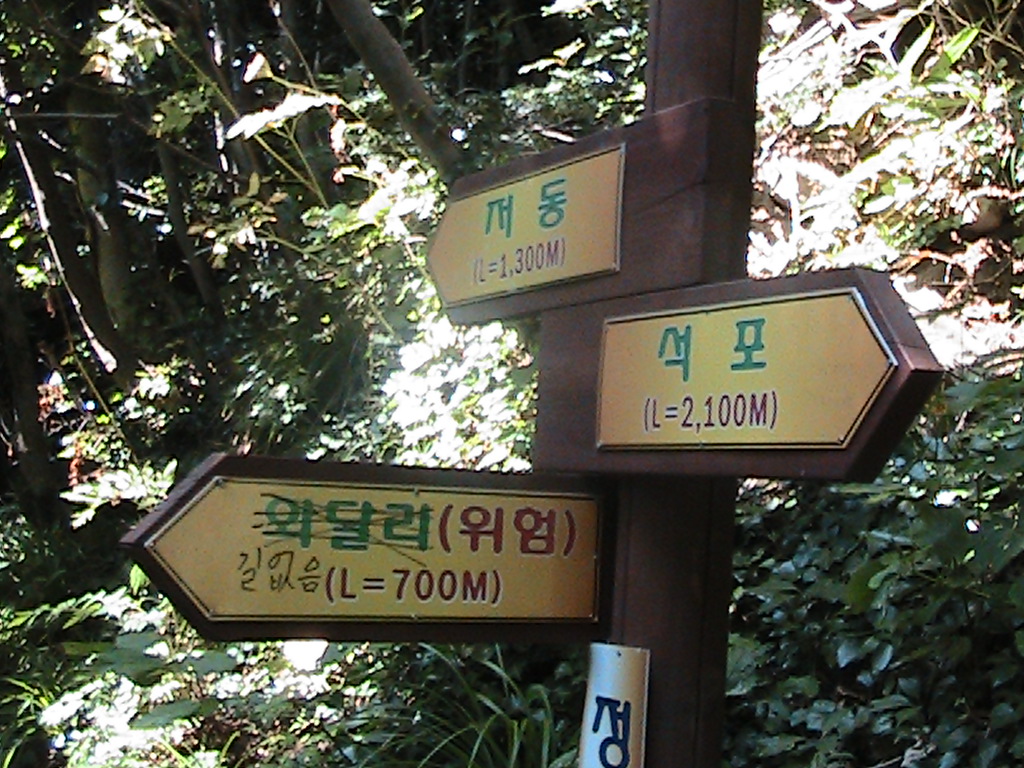
This is the island of Jukdo, off the northeast coast. According to a guidebook, it is inhabited by 3 families and their cows (which have to journey to and from the island using slings into and out of boats to get up and down the cliffs all around it). I want to visit this island.
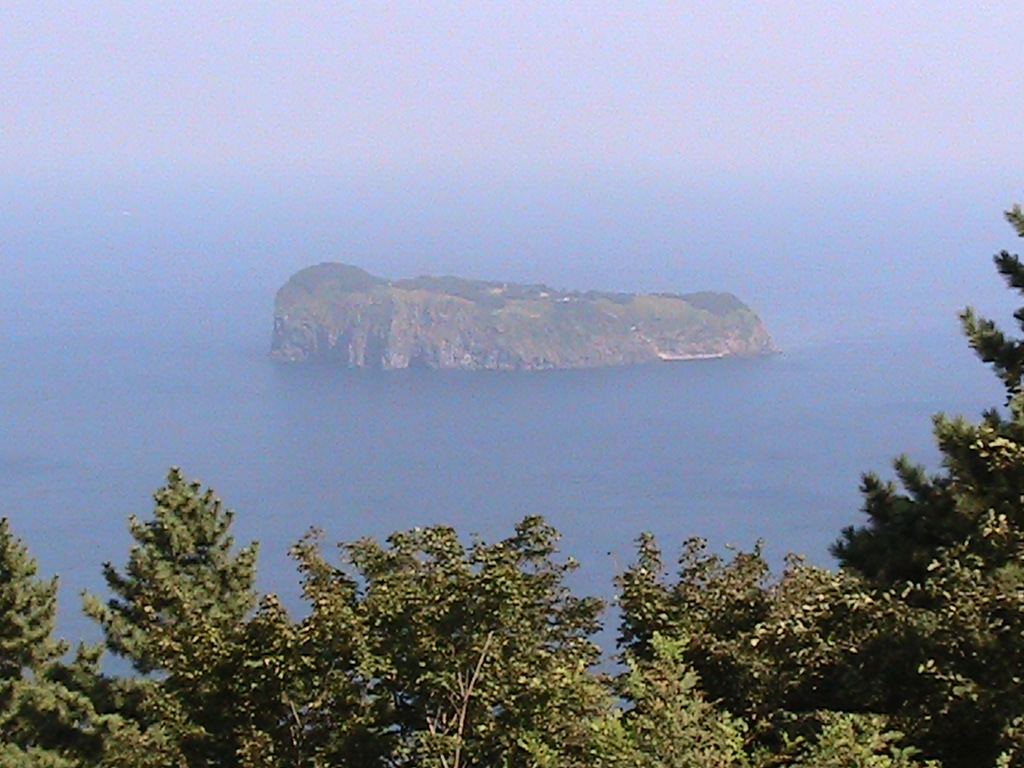
This next is from somewhere along the northeast stretch of highwayless coast. I liked the tree very much.
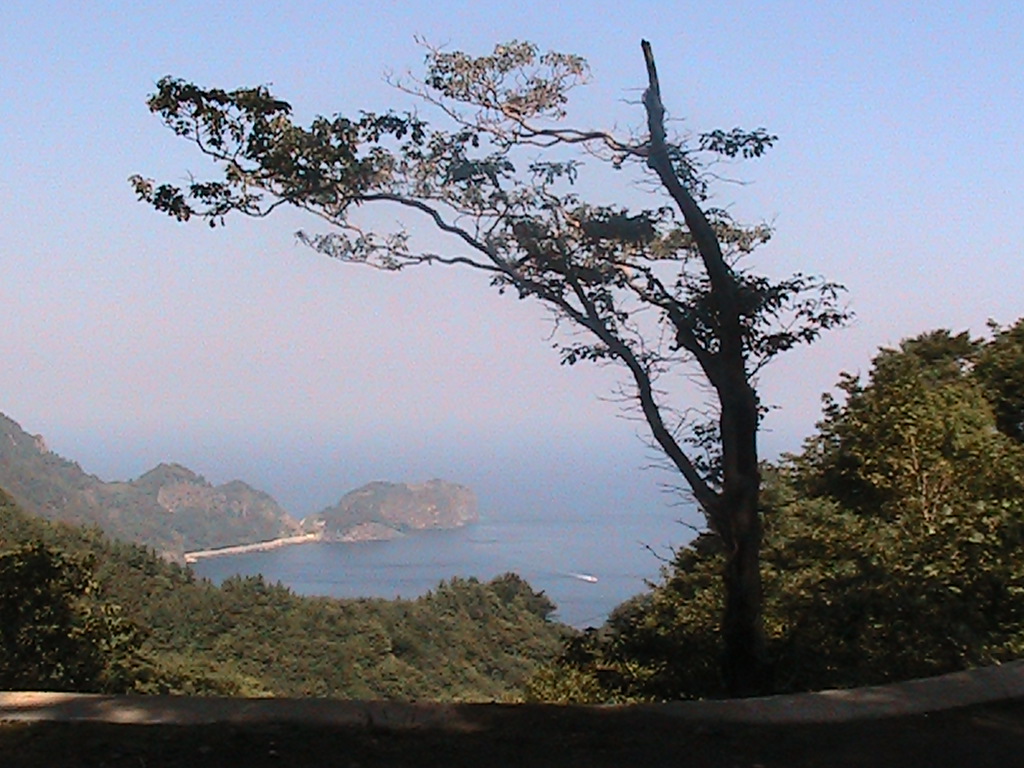
And here are a few from my cellphone camera (much lower resolution).
Here’s a buddha next to a modernist cartoony statue of various sea-denizens that are part of Ulleungdo’s identity.
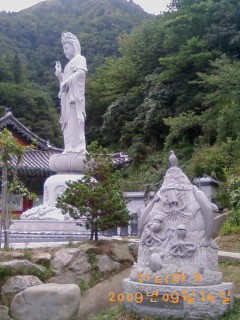
Here’s a temple wall that has a very striking picture of a sea-dragon amid the waves. It was a gorgeous painting but didn’t come out so well on the cellphone camera due to the lighting and resolution.

Here’s the excursion ferry arriving at Dodong from Dokdo. I nearly went to Dokdo myself, but the mobs of nationalistic Koreans rather put me off.
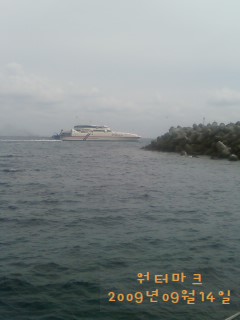
You see, Dokdo is a tiny outcropping of rock (less than 1 square kilometer) that juts out of the water about 90 km southeast of Ulleungdo. It is claimed by both South Korea and Japan, though it’s currently controlled by South Korea, and as far as I can tell, they have the most valid claim: since medieval times Dokdo has always been grouped with Ulleungdo administratively, so whoever “owned” Ulleungdo also was considered owner of Dokdo, regardless of whether the “owners” were ultimately the Japanese emperor or the Korean king, depending on epoch.
Right now, there is a huge nationalist fervor in Korea, provoked by recent ambiguous but typically in-denial-of-history mumblings by some Japanese ministry or another. The government and the media powers-that-be are encouraging all Koreans to believe firmly that “Dokdo is ours!” You can even get “Dokdo” t-shirts at Dunkin Donuts. Nationalistic geo-fetishes always make me uncomfortable, as historically they often seem to lead to bad (read: violent) outcomes.
![]()
Caveat: I carry a flower carefully
I was walking around Fukuoka two days ago. I saw the words “I carry a flower carefully” inscribed like a very short poem on the side of a big truck. I wanted to write an ode to the side of that truck. Or, maybe, I wanted to write an ode to postmodern commerce. Or, maybe, I wanted to think about writing an ode, and then stop, before the ode appeared, all wilted and unloved, like an uncarefully-carried flower.
Instead, I wrote the following in my little librito para pensamientos aleatorios.
I imagine that in the back of that truck, there is a single flower. It is a bit limp, in the dark strangling air and the stiffling heat of the back of that truck. It is a single flower, strapped down tightly and carefully so that won’t slide around in its tiny flower pot. It is alone in the otherwise empty cargo bay of that truck.
We all carry important things. Life has so many details.
Too many choices amid too much freedom can create its own class of suffering? I shake my head. The September sun is hot in Fukuoka. There are no clouds.
It seems like I have no goals. Isn’t life, and growing up, supposed to be about process? Sometimes the lack of goals can create feelings of anxiety, but I then try to remind myself that goals are hazardous. They are hazardous because… well, not precisely… but, they lead to disappointment.
I think sometimes that such a goallessness must seem odd, or even bewildering, to others who see it in me. I frequently make up goals and tell them to people, but these made-up goals are often shifting around like sand under the waves creeping up a beach. Sometimes I carry a goal that I have made up around with me, carefully, for a long time. But I never forget that I made it up to please someone, during some conversation. It’s an illusion.
People seem to find me difficult to understand.
Is it really suffering, having so much freedom? No. It’s maybe an irrational fear of emptiness. I carry a center of loneliness. I don’t comfort it. I simply carry it, carefully, and some day, in some metaphysical market, maybe I can trade it to someone who needs it more than I do. That person might give me some strong, desirable currency, or a kernel of enlightenment or understanding, in exchange.
The details in life matter, but they are so easy to neglect. Other people matter. I’m not always very good at connecting.
Caveat: Are you devil?
I use my cellphone as a stopwatch in class when students are giving speeches. Further, I occasionally allow the students themselves to be “timekeeper” for a given other student’s speech. This means my students are often playing with my cellphone. It doesn’t really bother me, although more than once, I’ve gone back to it later and found its most recently used application was something under the “game” heading — I rarely play games myself on the cellphone because, since it’s a Korean cellphone, it tries to help me play the game with instructions in Korean. I did once manage to get a 37% score on a quiz game entirely in Korean, basically by viewing it as a linguistic abstraction game.
 So… I was pulling photos off my cellphone last night, and found the following. I have no recollection of when this photo might have been taken. Is it flattering? I’ve definitely been making a lot of use of my plastic black and red pitchfork (lower left of photo), lately.
So… I was pulling photos off my cellphone last night, and found the following. I have no recollection of when this photo might have been taken. Is it flattering? I’ve definitely been making a lot of use of my plastic black and red pitchfork (lower left of photo), lately.
I don’t know how to put on the fancy frame, either. But whoever did this picture of me apparently had no problem not only surreptitiously taking this snapshot but then managing to add the fancy frame without my having a clue. I think it was a time when they were brandishing their own cellphones and I was hamming a little bit, so it’s not like I wasn’t aware of having my picture taken. In today’s modern (Korean) classroom, it’s ubiquitous, and something I accept as a matter of course. I suppose that technically, there are rules banning the use of cellphones in class, but I view such rules as both reactionary and irrelevant, and rarely enforce them except maybe during quizzes or when they’re clearly proving too distracting.
…
“Are you devil?” Gina asks, every time.
“Maybe,” I hedge. It’s all part of the schtick, right?
Every teacher needs a schtick. Or a fork. And a coupla alligators (made in China).
![]()
Caveat: 일산역에서
The brand new, shiny Ilsan Train Station. When I got off at this station in 1991 (it was on the suburban route connecting my Army base with downtown Seoul) it was just a wide spot in the tracks and the town next to it couldn’t have been more than 50000. Now Ilsan is half a million, and it just got its old center-of-town trainstation upgraded this summer.

![]()
Caveat: MacArthur’s Landing
Yesterday I went to Incheon with a friend, Peter. We took the subway, which is kind of an indirect way to go, since it’s straight south from Ilsan, but via subway one has to go into downtown Seoul (southeast 25 km) and back out again. But anyway. It took about 2 hours. We got off at the Incheon subway line station Dongchun, and walked west about 1.5 km to the Incheon landing war memorial. It was an impressive piece of monumental architecture. It was a very hot day.

We went into the Incheon city museum after that, as it was right next door, and saw some historical things related to Incheon, which was the first Korean port to be opened to western (and Chinese and Japanese) powers in the 1800’s, and therefore was the part of Korea to begin feeling the influence of the outside world after the 500 year-long “closure” that was the Joseon dynasty period.
Then we took a random bus (#8) that ended up dumping us at Incheon City Hall, but that’s not actually downtown, so then we took another bus (#41) to Juan Station on subway line #1 and then took the subway (which isn’t actually subway but is elevated) to the end-of-the-line at downtown (old part) Incheon. That’s where the touristy chinatown is (arguably the only “authentic” chinatown in Korea, as it was actually a Chinese settlement in the 1800’s, whereas all the other “chinatowns” in Korea are just gimicky tourist things constructed artificially in the most recent 30 years or so). We walked up the Jayu (freedom) hill to hear some atrocious children’s music at some outdoor concert and then we saw the old general himself (well, his statue) looking out over the old “red beach” that is now the highly landfilled and developed harbor at Incheon.
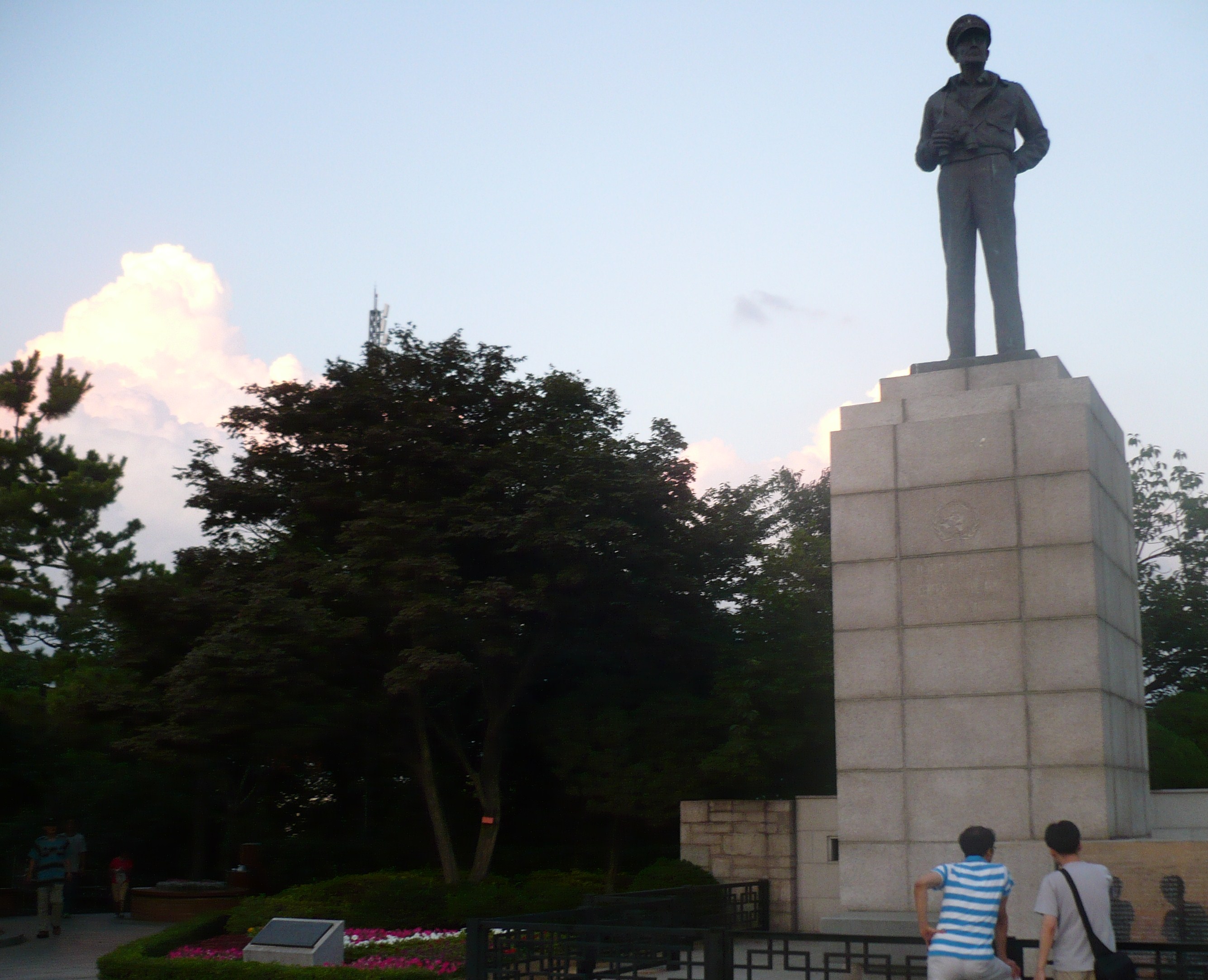
We walked around some more as the sun was setting, and the feel of the place was quite odd. I remarked to Peter that it was the first time I’d been in a Korean city in the evening where things were genuinely “dead” – the way that small American cities inevitably are after dark. “Man, this is like Long Beach,” I said, bemused.
Anyway, we walked some more and found an urban space more typically Korean, all neon lights and evening shoppers and half-drunk men stumbling about. Ah, the comforts of Korean civilization. We went into a Hweh house (a sashimi joint, roughly, but a dining institution in Korea). I ordered Hwehdapbap (bibimbap style mixed vegetables, but with fish roe and raw sliced seafood) and Peter ordered chobap (sushi). We shared, and finished it off. It was quite delicious.
Then we came home on the subway, all the way, 2 hours. It was a long day, with a lot of walking, but it was good.
I feel very proud of yesterday’s blog post… I composed it in my own Korean, with only some minor assistance from my Korean tutor. Really, the first true blog entry I’ve managed in Korean, I think. I mean, that is at all substantial. Yet, in fact, it’s quite child-like and dull and repetitive and unnatural Korean, I’m sure. But one has to start somewhere, right?
![]()
Caveat: 바쁜게 좋은 거예요
바쁜게 좋은 거예요 => busily good thing is => “it’s good to be busy.” This is what it seems nearly every Korean says when one complains about being busy. I don’t entirely disagree, either.
I saw my friend and former coworker Basil off at the airport today. He’s returning to the U.S. with intentions of starting grad school in a few weeks. I wish him best of luck, but I’ll miss being able to occasionally hang out with him and BS about various topics.
I’ve been working on mastering the distinction between Korean ㅅ/s/ and ㅆ/ss/, which are phonologically quite distinct but which sound essentially identical to English-trained ears. The /ss/ (revised standard transliteration) is not just a geminate (double) /s/, but rather something quite different… it’s “tense” or “faucalized” featurally, and seems to involve something like a pharyngealization of the subsequent vowel. So far the best pronunciation tip I’ve received is to try to remember holding my teeth together, touching, when making the /ss/, but letting them relax on the /s/. This may be why some transcriptions render ㅆ as /ts/ instead of /ss/. Here’s a horrendous tongue-twister based on trying to practice the distinction: 싸서샀어요 /ssaseosasseoyo/ = (it) was cheap so (I) bought it.
Vocab Notes for Korean
외계인 = a space alien
주요 = main, essential, important
구하다 = search for, look for, demand, desire, buy, purchase
순수하다 = be pure, be genuine, be true
평범하다 = common, featureless, humdrum-looking
아담하다= elegant, graceful
일탈하다 = deviate from, depart from 일탈 deviation
행위 = act, work, conduct, behavior …so… “일탈행위” deviant behavior (?)
장 애자 = a handicapped person; a brain-damaged person (this is very important vocabulary for comprehending the joking around of 5th graders – see picture below for what is apparently an exemlar of a “jangaeja” – probably best not to ask about the plastic pitchfork)

![]()
Caveat: Long week
Caveat: Subwayification and weeds redeem bury the past
The intensive subwayification of the Seoul’s infinite exurbs continues apace – recession? what recession? The old, slightly decrepit-seeming Gyeongui Line (경의선) is being given some coats of new paint (along with massive infrastructure upgrades, etc.) and the first phase of its integration into the Seoul Metro System took effect on July 1st.
The Gyeongui Line is interesting for both historical and personal reasons. Historically, the current Gyeongui Line is the rump end of the old Seoul-to-Pyongyang line that was the first railroad to open in Korea, in around 1906. With the closed border since 1950 or so, it ends a few kilometers south of Panmunjeom and the DMZ at Imjingang. Since then, it has functioned as the northwest suburban commuter rail line, but it’s name still implies it makes it to the Chinese border (Gyeong is “capital,” as in Seoul, and ui is short for Sinuiju – by the wacky rules for Korean acronyms – hence Gyeongui means “Capital and Chinese Border City Railroad”). I wrote about taking it out to Imjingang in October, 2007.
It’s interesting to me for personal reasons, because when I was in the US Army and stationed at Camp Edwards, whenever I wanted to go into Seoul during a day-long liberty, I would take a taxi to Munsan station and take the Gyeongui line into the city. That’s why I can actually say that I had been in Ilsan way back in 1991, which always brings Ooo’s and Ahh’s of amazement when I report this to the kids. It’s definitely a changed place. In 1991, Ilsan was a village of maybe 5000 surrounded by hills and rice paddies, a whistle stop on the commuter railroad, still beyond the edge of the megalopolis. Now it’s been reengineered as a “New City,” and the districts that are refered to colloquially as “Ilsan” include more than 500,000 residents, almost half of the Goyang municipality.
Anyway, starting July 1st, the Gyeongui Line between “Digital Media City Station” (on Line 6 near the World Cup stadium) and Munsan has now been fully integrated to the Seoul subway. Rather than sporadic-seeming once-hourly service, the trains zip by 4-8 times an hour, and you can pay with the same “t-money” card that you use for the rest of the subway system, with barrier-free, clearly marked transfers to the other lines at Daegok and Digital Media City. For a subwayophile like myself, that’s cool, and it’s cool to see an old line “grandfathered in” that way.
To celebrate, today I took the orange line (line 3) that goes by my house a few stops down to Daegok, and changed to the Gyeongui line. I took it out to Geumchon. It was a hot, humid day, with occasional strong winds that smelled like the ripe standing water of all the rice paddies to the north and west, and had just the hint of 10000 pots of kimchi fermenting on rooftops or apartment balconies, as well. The “smell of Korea.”
Now, in the fall of 2007 I wrote about taking the Gyeongui line out to Imjingang and trying to find my old Army base. I thought maybe I’d located it. But I wasn’t certain… the pace of urbanization has been so fast in this region, and I knew it had been closed. Maybe it had been turned into a mini mall.
But I have subsequently spent some time studying the increasingly clear images of the area on Google Earth, and I had become conviced that my old base lay just north of the limit of old Geumchon (which doesn’t jive with my memories, because no one ever mentioned Geumchon to my recollection… we always went to Paju or Munsan… it’s possible Geumchon was basically a nothing-village at that point, though). Anyway, I took the train to Geumchon, got off, and started walking north.
Sure enough. There it was. My old base, Camp Edwards, all shuttered up, overgrown with weeds, with a lone watchman at the main gate. Here’s a picture of the main gate.
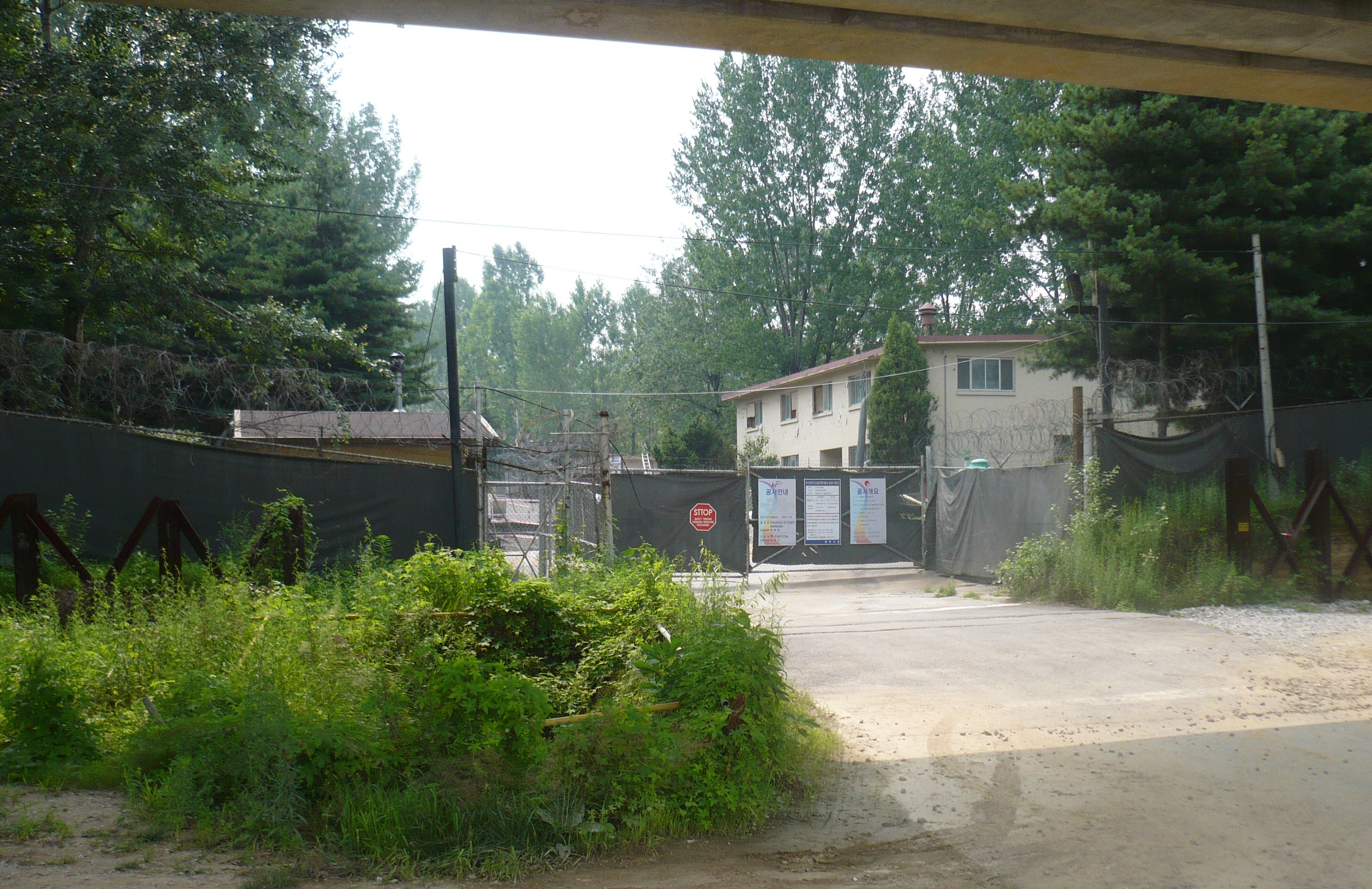
Inside the gate, you can see the remains of the Alpha Company barracks (cooks’ company). Note that the old Gyeongui line tracks ran right in front of the gate… basically, the railroad crossing gate and the gate manned by the Korean policemen at the base entrance were one and the same. In the picture, you don’t see the railroad tracks, because they’ve been elevated. They were right above me, where I stood. That was different.
But the “tank traps” on the MSR were the same.

It’s not called “the MSR” anymore – that stands for “Military Supply Route” and was US Army lingo for Highway 1, which was the fourlane boulevard that parallels the Gyeongui line all the way from Seoul to Imjingang (where the DMZ puts an end to civilian traffic). I don’t know what exactly the right term for those tank traps is, but the idea is that they’re filled with rubble and dynamite, and if the North Koreans come charging down the MSR, all the tank traps (strategically positioned every few kilometers over all highways) get blown, preventing easy access for all those North Korean tanks.
Looking the other way from the tank traps over the highway, you see the concrete obstacles planted like gravestones in the fields to the side of the highway.
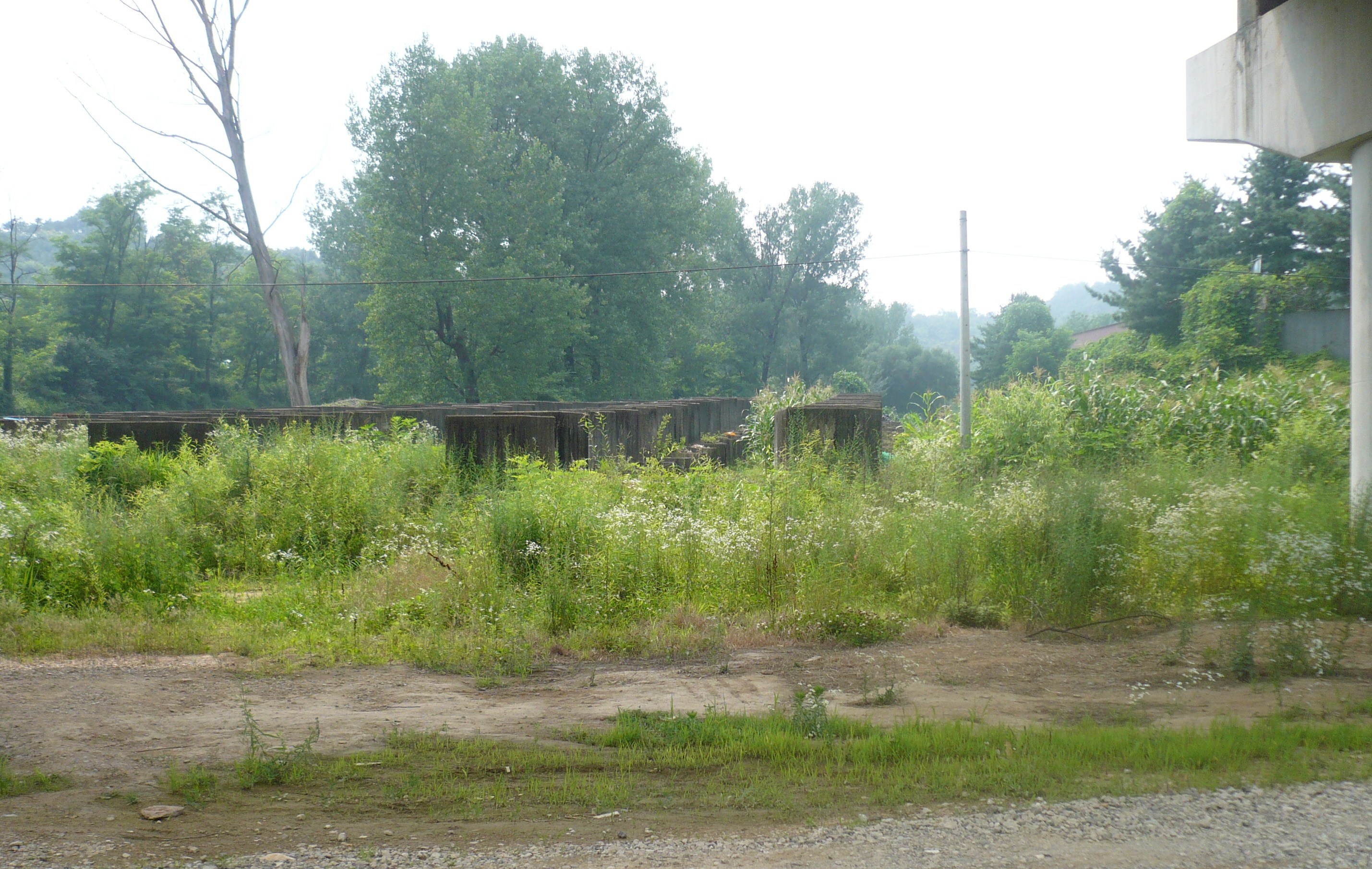
The whole infrastructure is no longer well maintained as far as I can figure out … there are many places where there are modern bridges over these old tank barriers, etc. Then again, maybe all the modern bridges are embedded with dynamite, too, as the old urban myth alleges is the case for all the bridges across the Han River.
I walked past my old base, feeling a bit of nostalgia, but a sense of closure, too. Nice to see the crappy old place overgrown with weeds. I’ve outlasted it! Below, there’s a picture I took looking west from a pile of railroad ties under the now-elevated Gyeongui tracks.
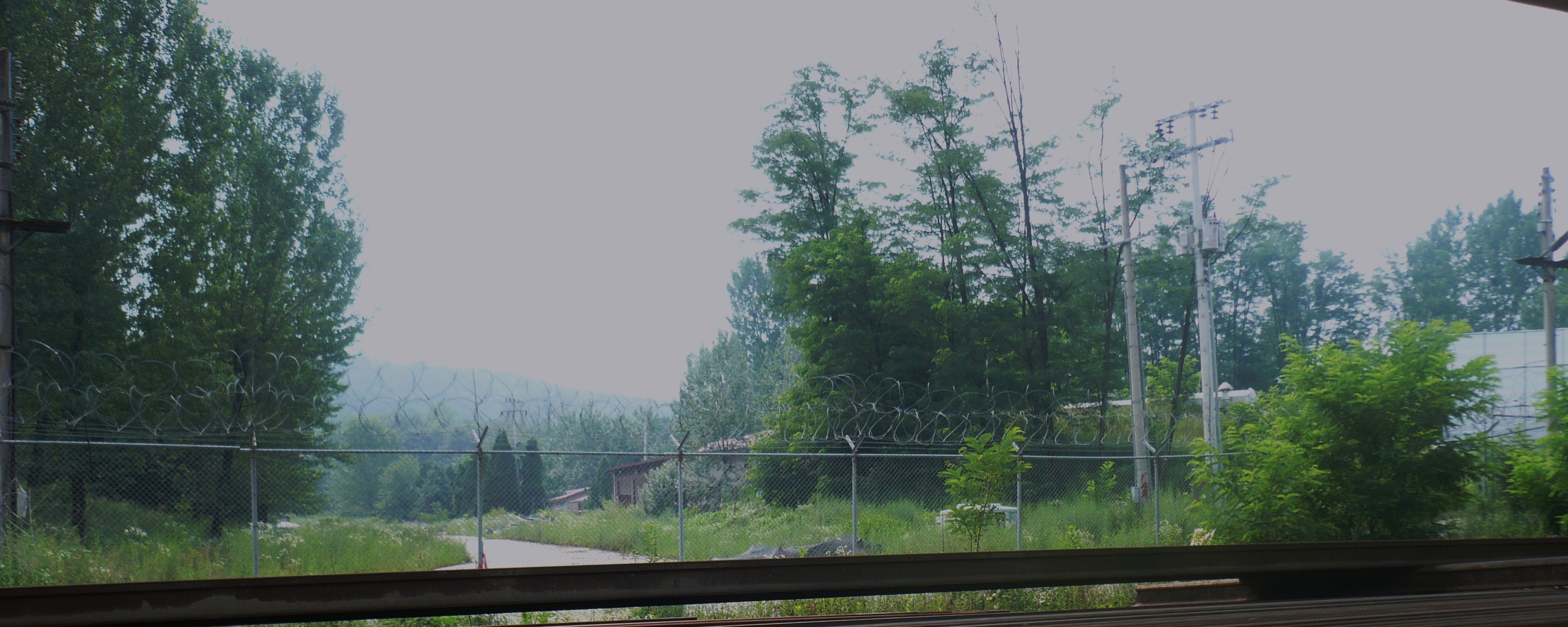
You can just make out the brownish structure in the center, which was the old Bravo Company 296th Support Battalion motor pool, where I labored under the despotic and corrupt Sgt Wise for almost a year. And in the foreground, but behind the concertina fencing, you can see a bit of the “track.” That was where we did our two-mile runs… a little half mile loop on level ground, in circles around the warehouse (which appeared to be missing, now). I have vivid memories of that incredibly boring run. It was only on rare occasions that we got to do company runs off-post, up down and around the countryside.
I kept walking north along the MSR (er.. Highway 1). The first left turn off the highway, going north, used to have a little ramen joint on the corner right across the railroad tracks. I think that’s where I was first introduced to that Korean-military delicacy: spicy ramen with cheez-whiz. Now, as you can see, it appears that they’ve built an office park there.
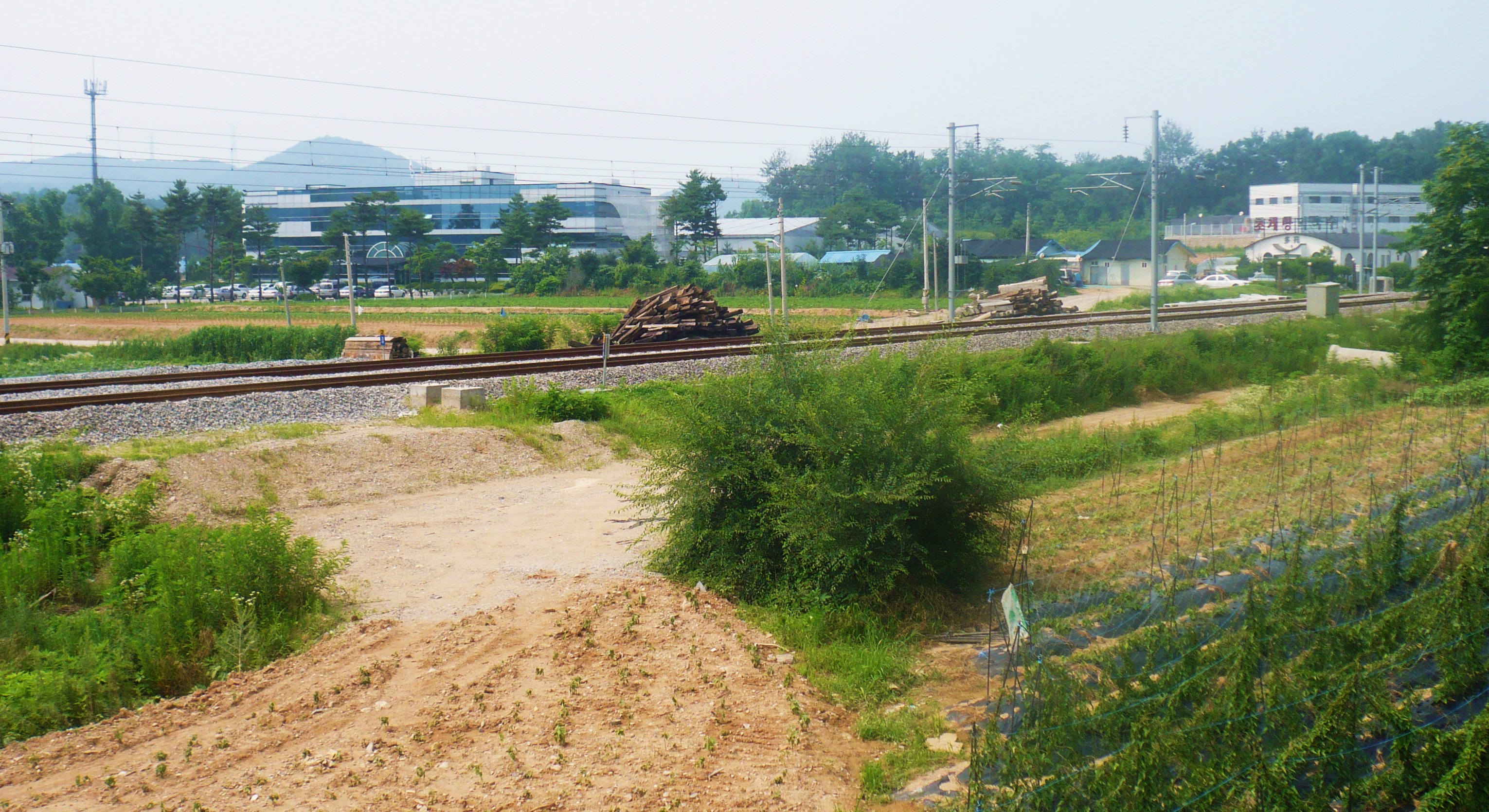
Finally, I reached a place called Wollongyeok (Wollong Station). I’m confident that this station on the Gyeongui line didn’t exist, before. It’s an addition, part of the densification of the commuter line as part of integrating it to a subway system. But it was convenient to find it. I took this picture from the little hill walking down toward it, because I like that you can see the huge highway sign with an arrow pointing the way to Panmunjeom.
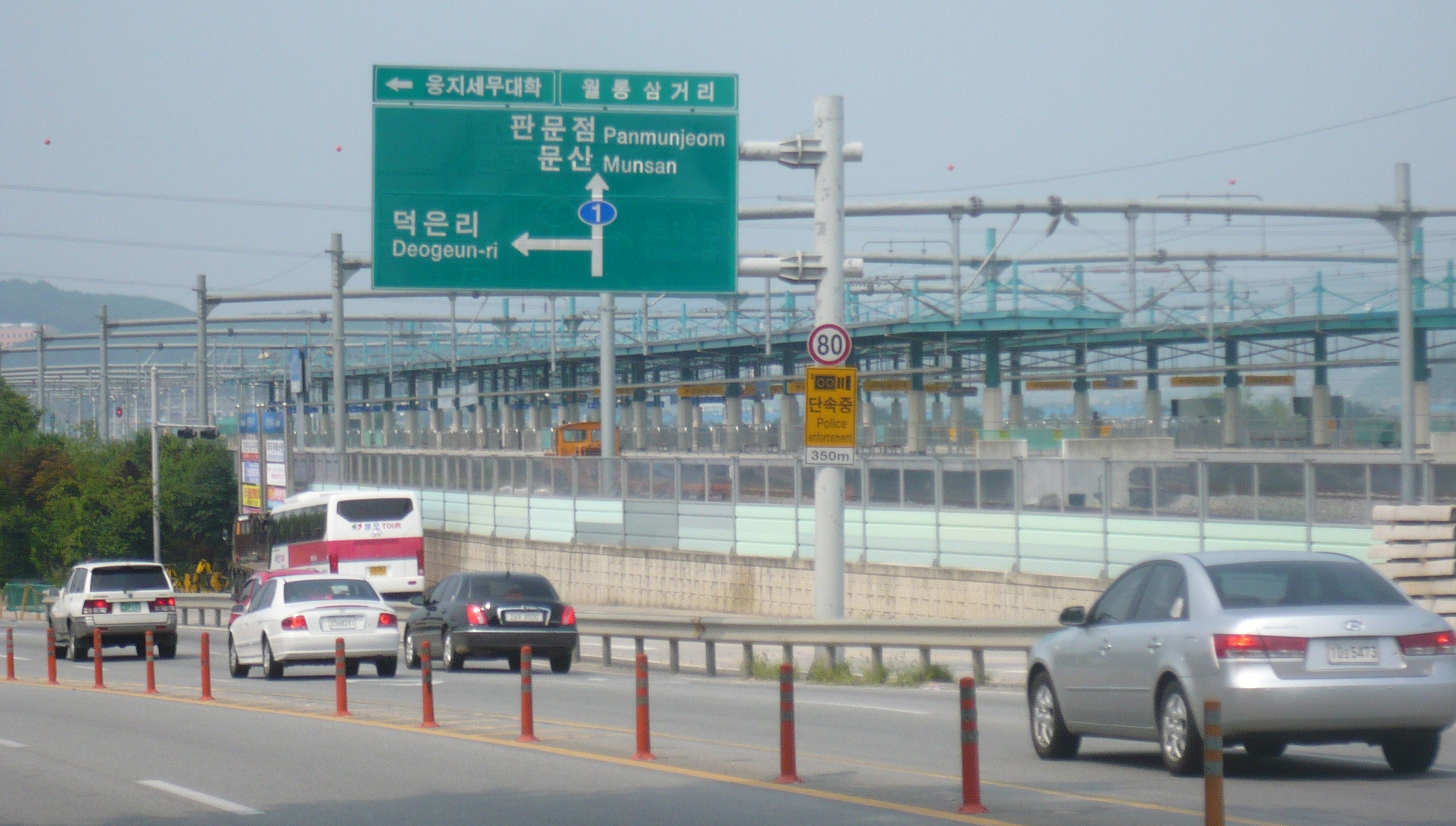
Panmunjeom is a tiny village. Technically speaking, since 1950, it has zero actual civilian residents – it’s where the North and South face each other, and they have little meetings if things are too tense to actually allow each other to cross. And since nothing in South Korean signage admits the existence of an actual border, the only way to know when you’re getting close is when you start seeing signs for Panmunjeom. So I like the sign because you see that here you are, at a nice modern-looking suburban railway station, within a few kilometers of North Korea.
And that brings me to…. So, life so close to North Korea, what’s that like? As a bird flies, my apartment in Manhattanny Ilsan lies about 10 km from the North Korean border. It’s more like 25 if you drive, because of the twists of the Imjin river and of the line itself. But it’s weird sometimes to think how close it is, and how much the people here seem to be either ignorant or in denial – or some weird symbiosis of those two mental states.
Actually, despite all the sabre rattling (and missle-launching and nuke-testing) to the north, no one in the circle of people I interact with seems in the least concerned. This is just the way it always has been, with the north. Weird, scary, unstable… but not, in the end, something that is likely ever to change. Those giant armies facing each other — the high-tech-and-armed-to-the-teeth South and the 2-million-cannon-fodder-plus-a-coupla-handy-WMD-(but-nevertheless-noticeably-incompetent) North – they’ve been glaring at each other for almost 60 years now. It feels very much like “status quo forever.”
And frankly, if it’s nukes you’re worried about, Ilsan is THE safest place outside of North Korea to be, if you think about it. Kim Jong-il may be a wack job, but he’s not gonna nuke the one spot in South Korea that’s practically within walking-distance of a major North Korean city (namely, Kaeseong). As a point of fact, I very much doubt there’s any tactical or strategic scenario in which the North would nuke the South. The nukes are for those “damned foreigners” – i.e. Japan and the US, largely. The South is not foreign, just misguided. It doesn’t need nuking… just reeducation. If things got really, really bad, and the North launched some kind of preemptive invasion of the South, Ilsan would definitely be overrun. But from a tactical standpoint, it seems to me that it is literally so close to the line that it would be behind the line before anyone knew what was happening (and despite those decrepit tank traps).
How things would play from there, who knows? It could end up very grim… I imagine the ways in which seemingly well-developed and relatively westernized Yugoslavia decayed into chaos and civil war in the 1990’s. It’s not impossible, here. But… well, it’s not something worth worrying about. Terrible disasters are possible, whether human or natural, no matter where one chooses to live. In any event, consumer culture is so deeply rooted in the South Korean psyche, now, that I wouldn’t envy any effort on the part of the North to absorb or reeducate the South. It would end up a kind of pyrrhic victory, perhaps. Nor should we underestimate the strength of the South’s military and of its no doubt innumerable contingency plans.
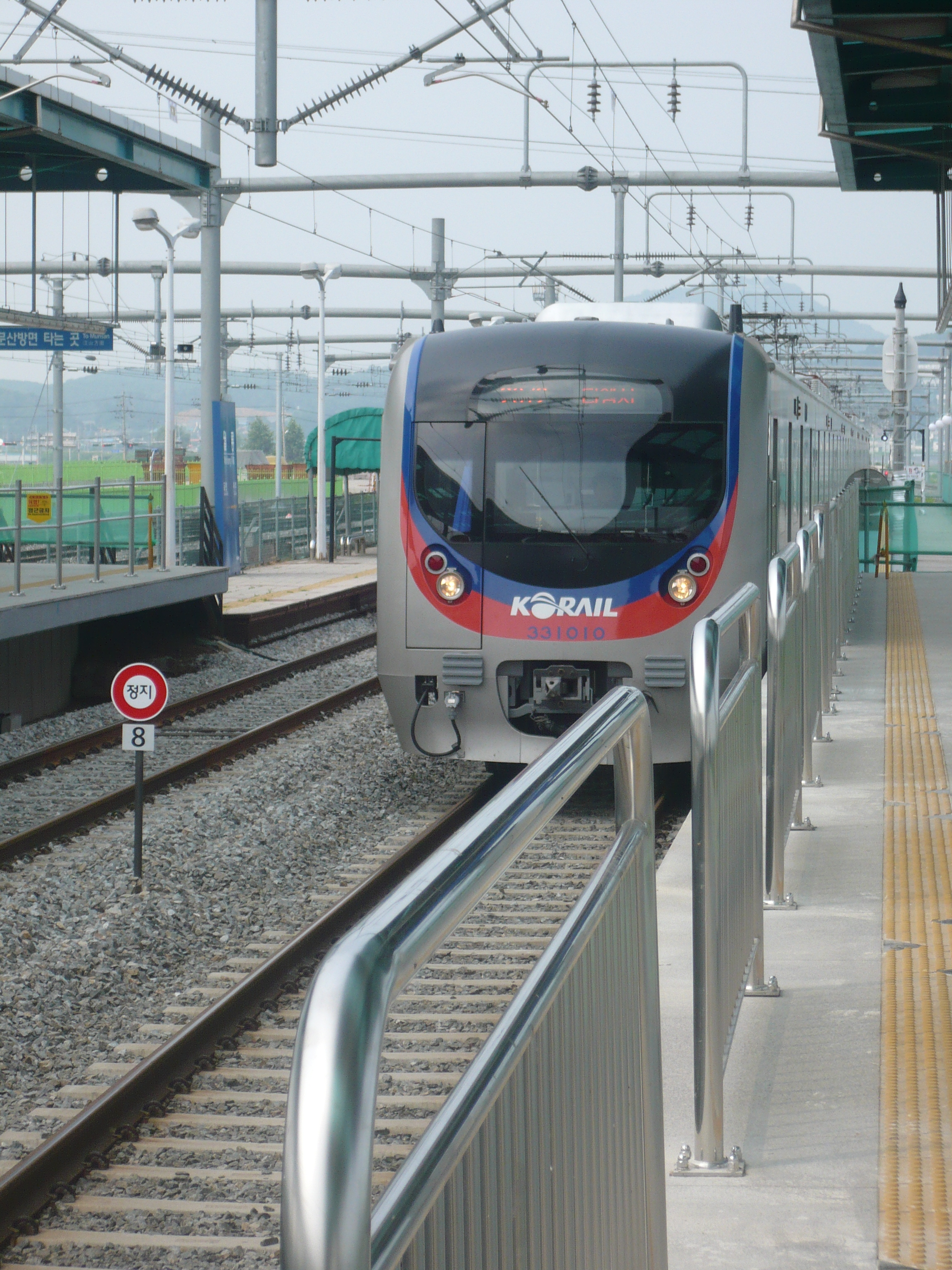
![]()
Caveat: S(e)o(u)l(e) of Asia
“Soul of Asia” is an advertising slogan. “Sole of Asia” is an attitude problem.
This is the social reality – even the wealthiest of neighborhoods is made up of regimented rows of highrise buildings. Looking west from the 63 tower.

![]()
Caveat: 63
I finally went to visit the “63 building” over the weekend, on Sunday. It’s the tallest skyscraper in Seoul. It has 60 floors. The name “63” is because it has three levels of basement, too, making a total of 63 levels. It’s a shiny coppery-colored building right on the Han River. Here is a picture I took looking straight north from the building toward the old part of the city, in the distance in the notch between the mountains. Yongsan is in the right center, and the Mapo area is in the left center. And in the foreground is the wide Hangang.

![]()
Caveat: 너 마늘 좋아해?
Do you like garlic? Lots of garlic? Early summer is the time for the roving trucks of garlic sellers. A Korean staple.

![]()
Caveat: 밤에 호수공원
This is my neighborhood, looking north from the south side of the lake in “lake park.” Ilsan is a rather high-density place, as you can see.
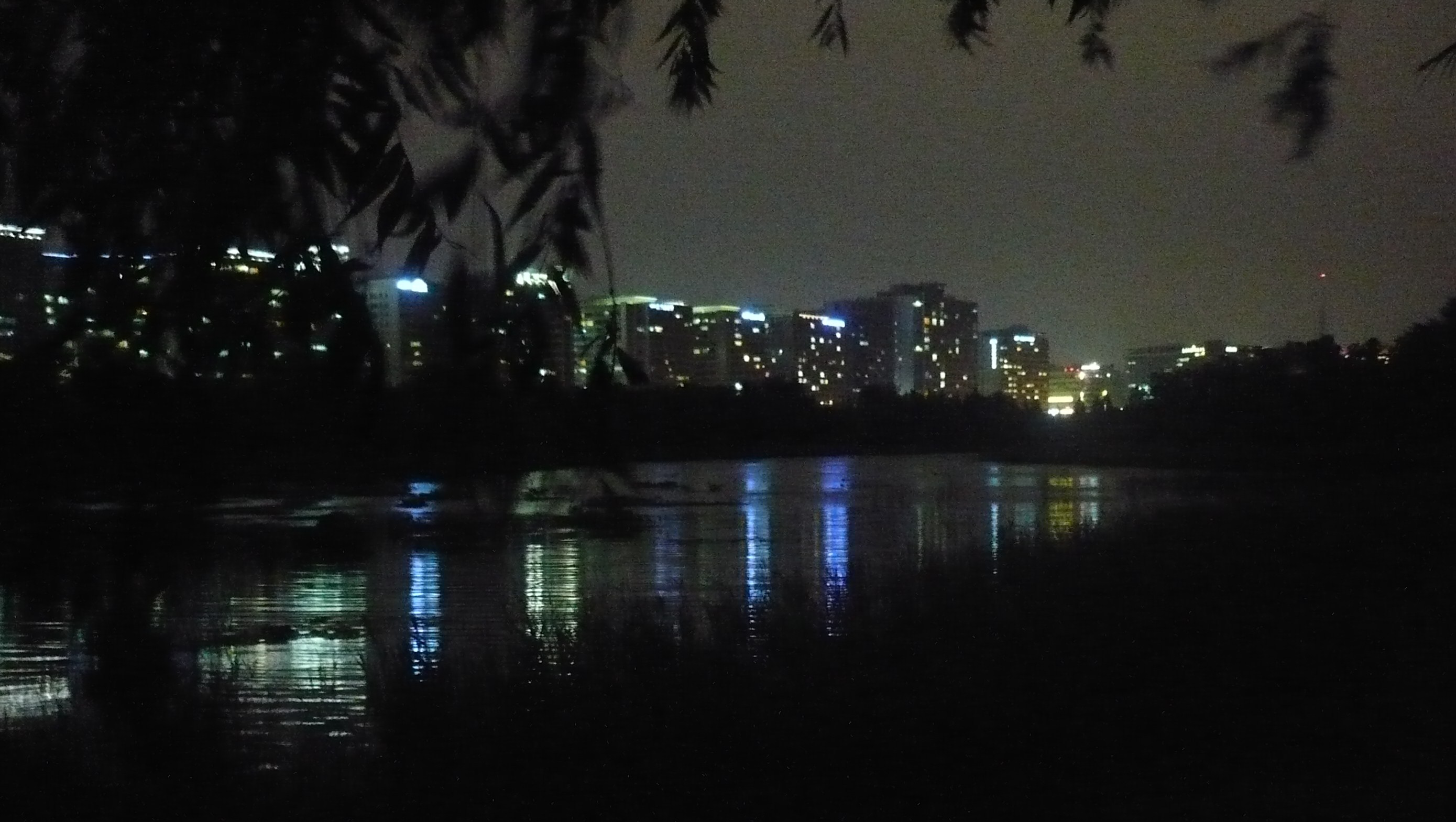
![]()
Caveat: Speech, speech
I’m very tired. It was a long day… first day of the new summer term. Last term for me, at LBridge.
Here are some more pictures from last week’s last classes: kids giving speeches in debate class.
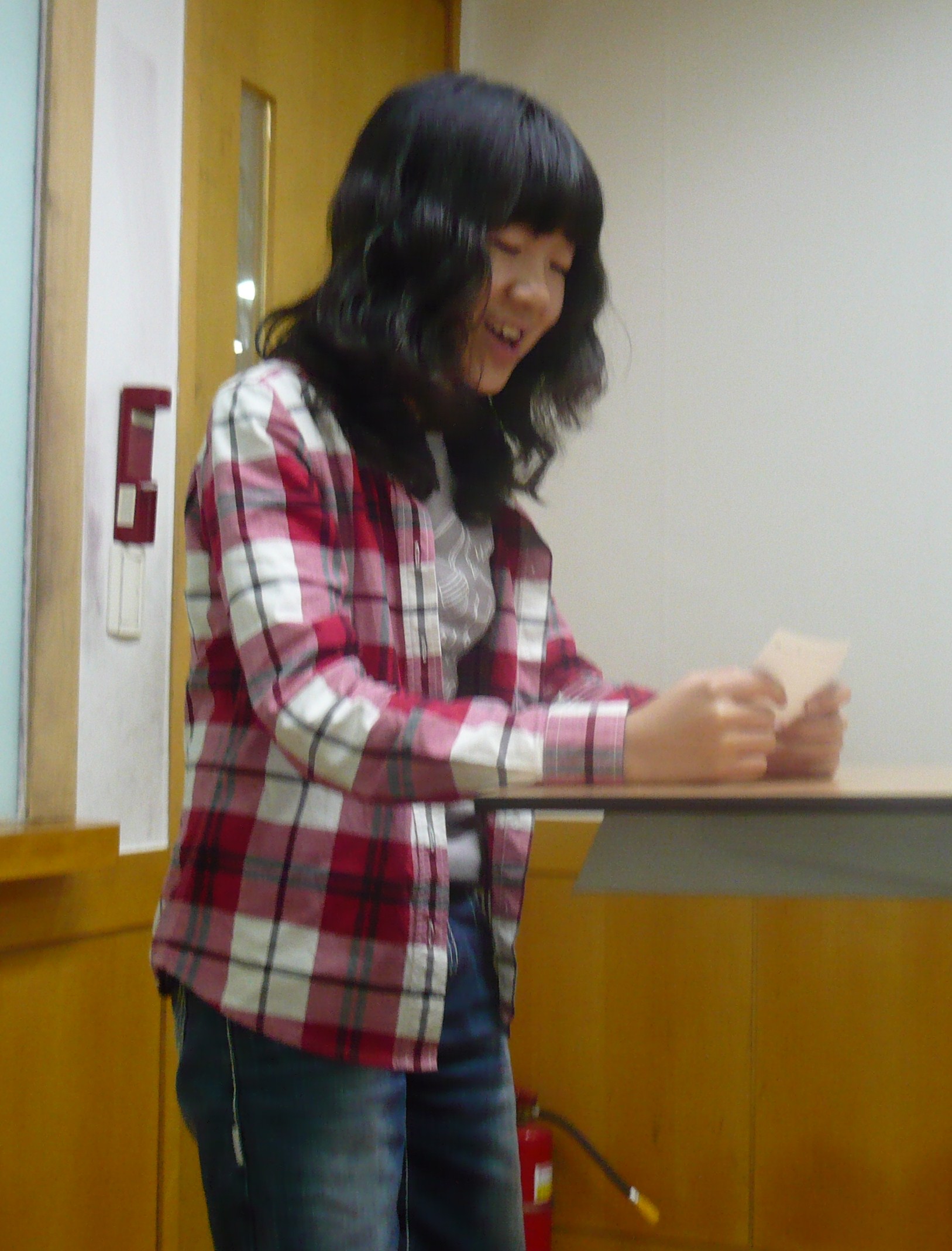
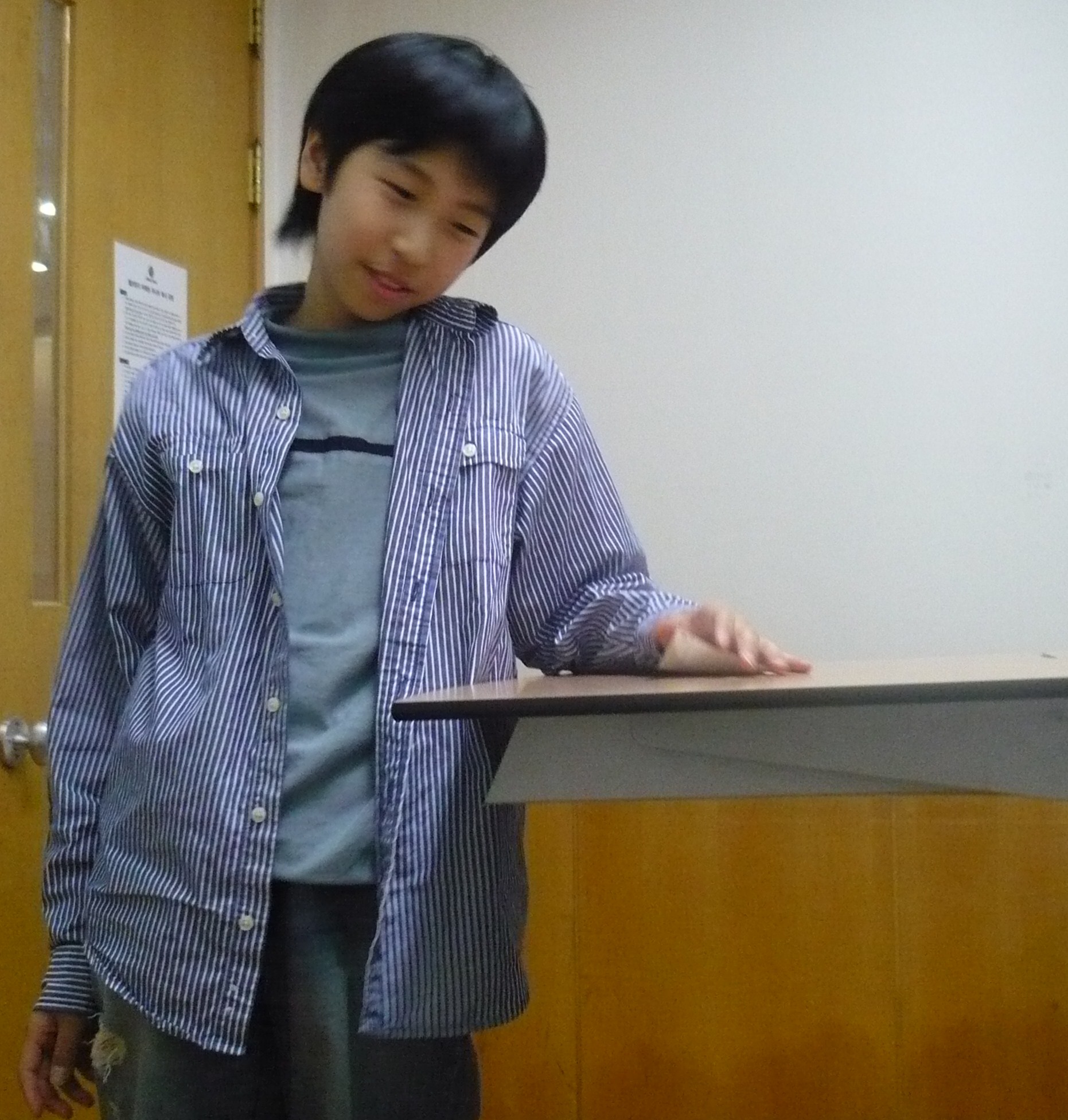
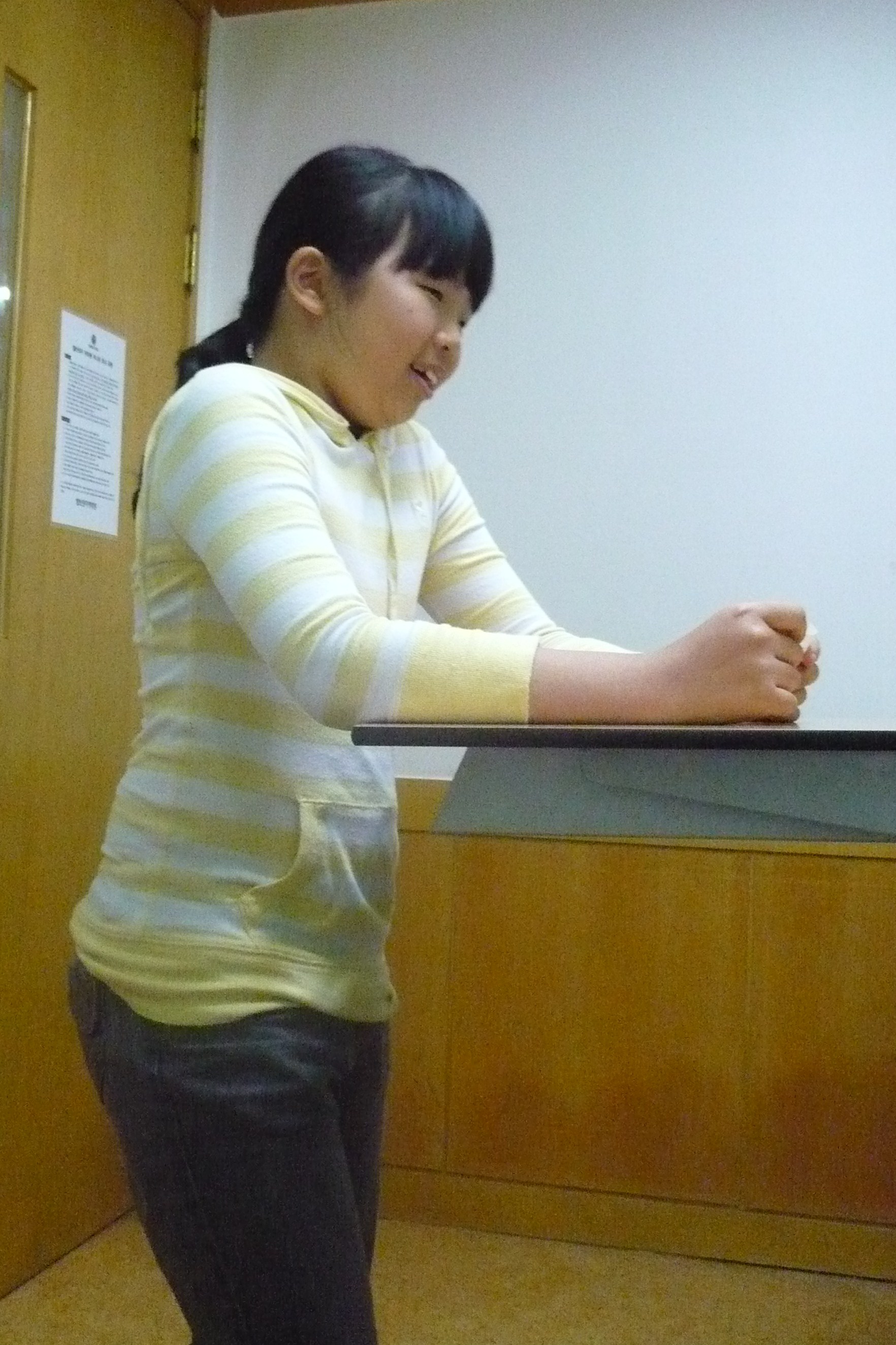
![]()
Caveat: Alligators For All
Caveat: Best Class
This has been my best class so far. All smart. All interested. Almost all the time. Awesome kids: Ellen, Candy, Eunice (she came back!), Helen, Anastasia, Sydney, Steven.
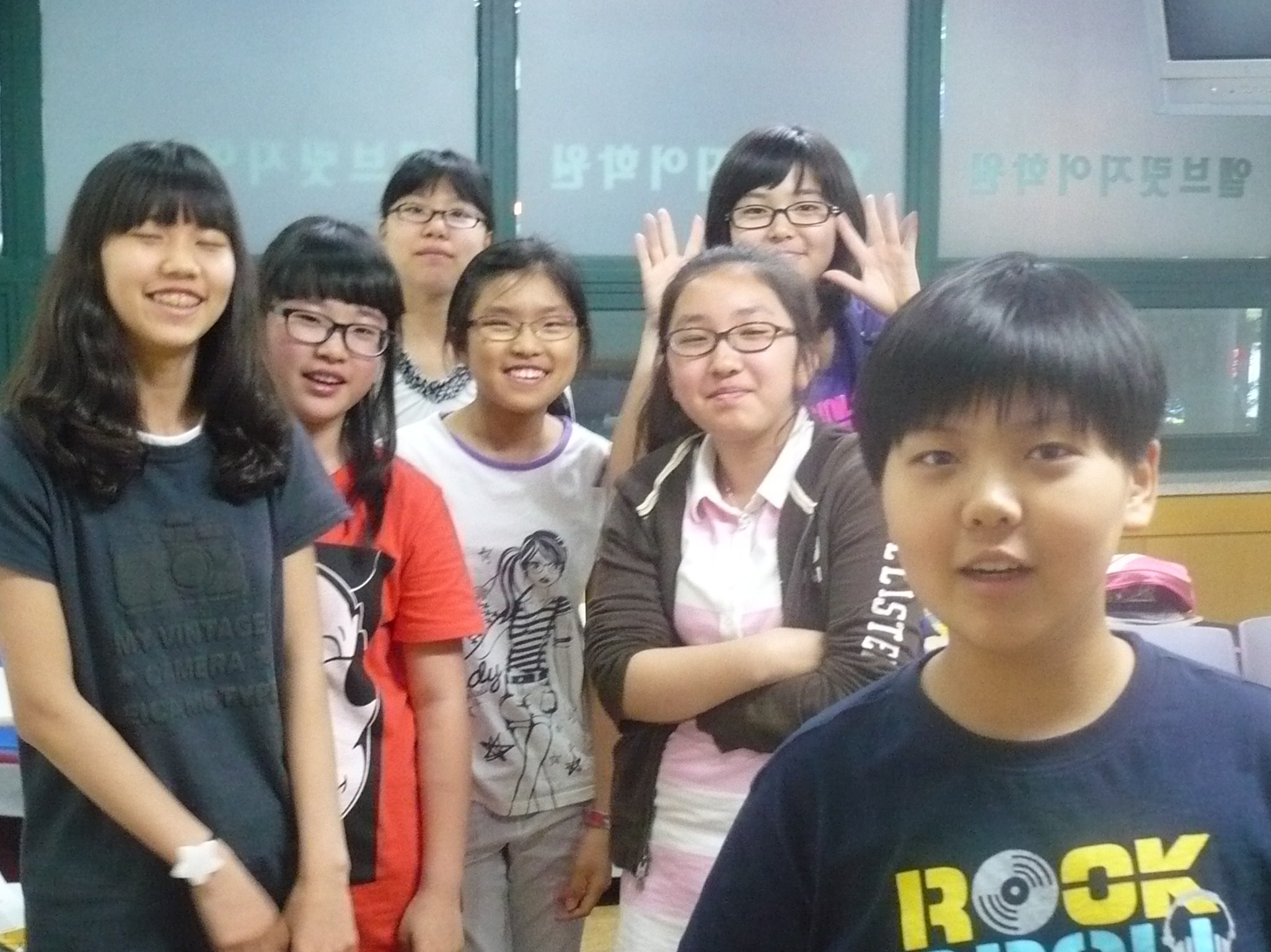
![]()
Caveat: The Space Emperor, Drawn to the Dark Side
Our future Space Emperor, BHO, is clearly not afraid to disappoint his fans. Whether this represents cynicism or realpolitik, I find hard to judge. I really, really enjoyed Maureen Dowd’s recent mocking of the situation vis-a-vis Cheney: “Dick twinkles. ‘Yes, we can.'”
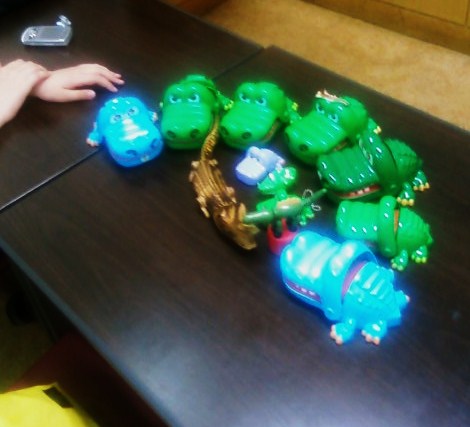 In other news, I collected all my retired (read, broken) plastic alligators and brought them to class today, because this is the last week of the Spring term. Here is a picture after the Eldorado2 kids had arranged them.
In other news, I collected all my retired (read, broken) plastic alligators and brought them to class today, because this is the last week of the Spring term. Here is a picture after the Eldorado2 kids had arranged them.
Notes for Korean
Caveat: Shortly After, There Was a Thunderstorm
The view looking downriver from the Donghodaegyo, yesterday afternoon.
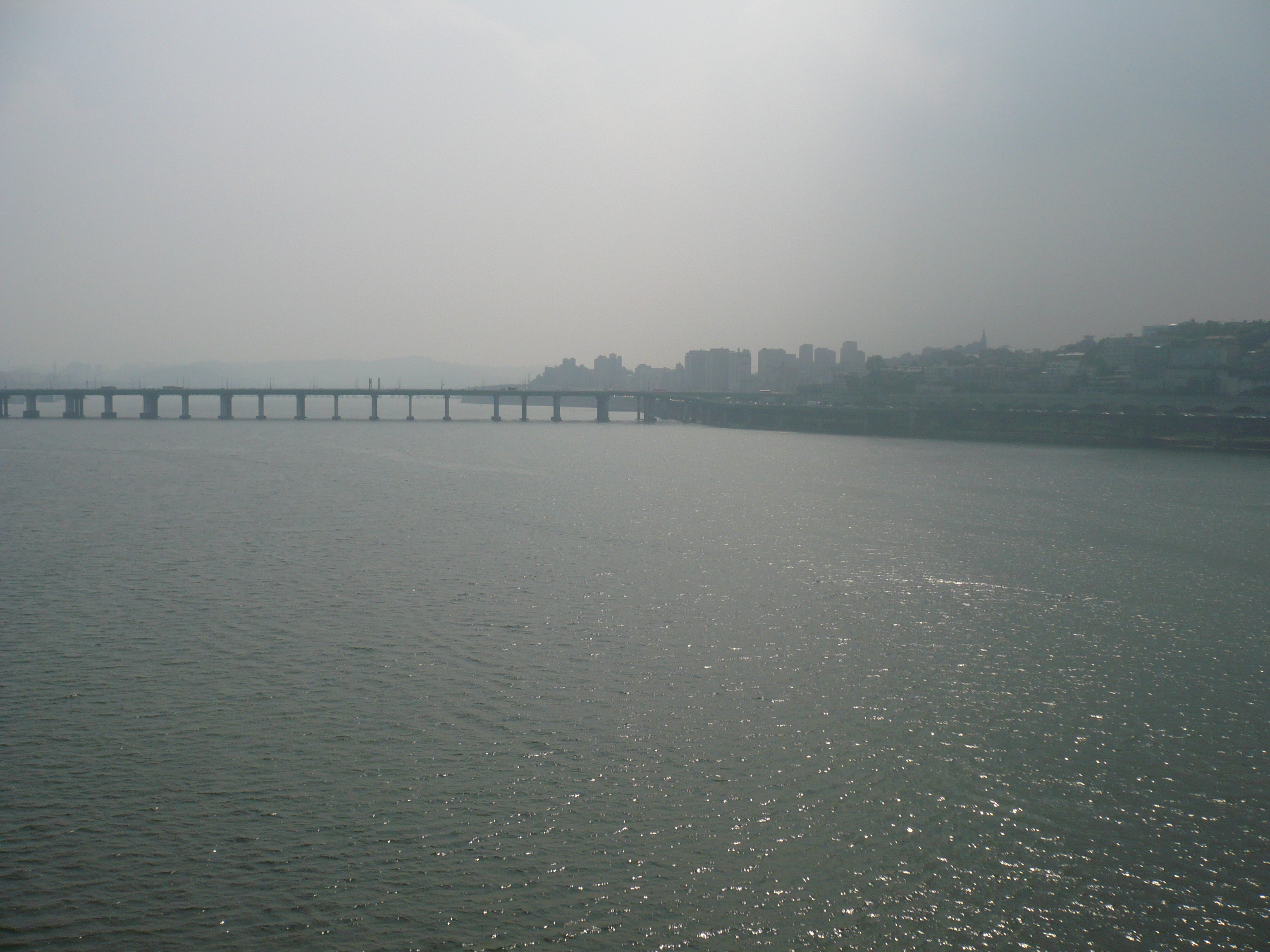
![]()
Caveat: Scooter
It seems I see more and more of these tricked out scooters. Scooters are everywhere, and always have been. But lately, there seems to be this influx of some kind of European or Japanese style high-end scooters. I saw a “Hello Kitty” themed pink scooter with a trendy-looking woman riding it, walking home from work the other night. And this thing was in the parking lot a block away, the other day.

![]()

